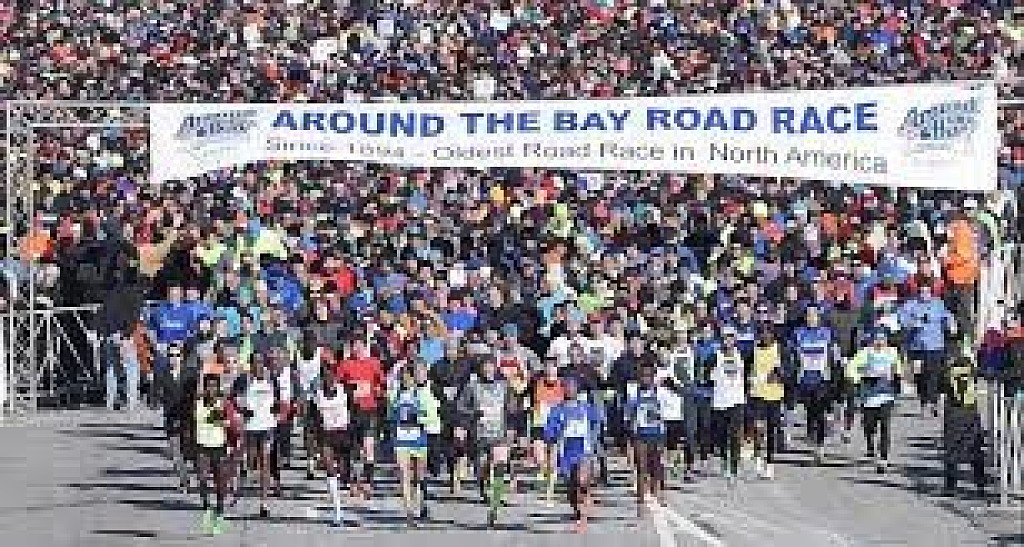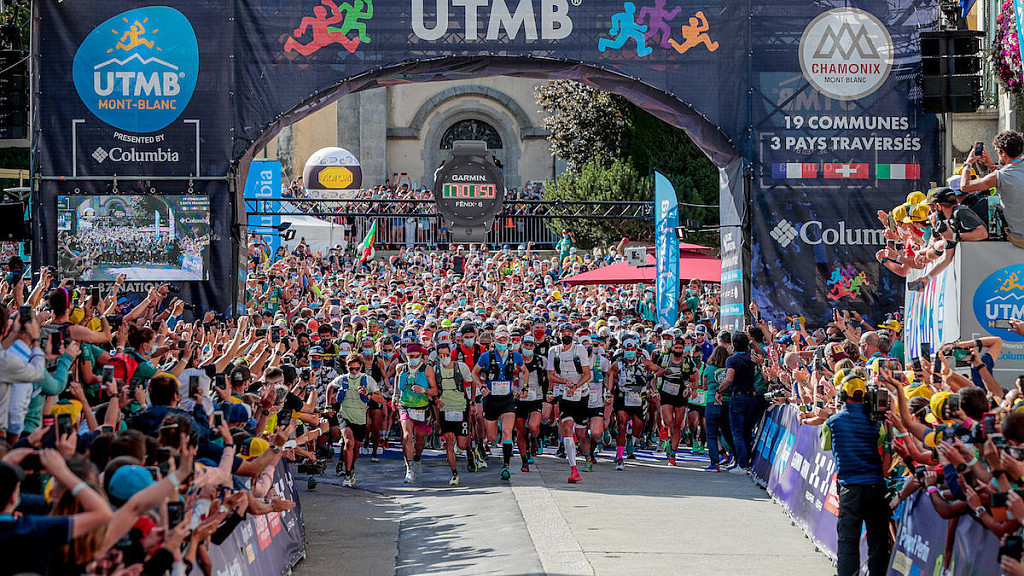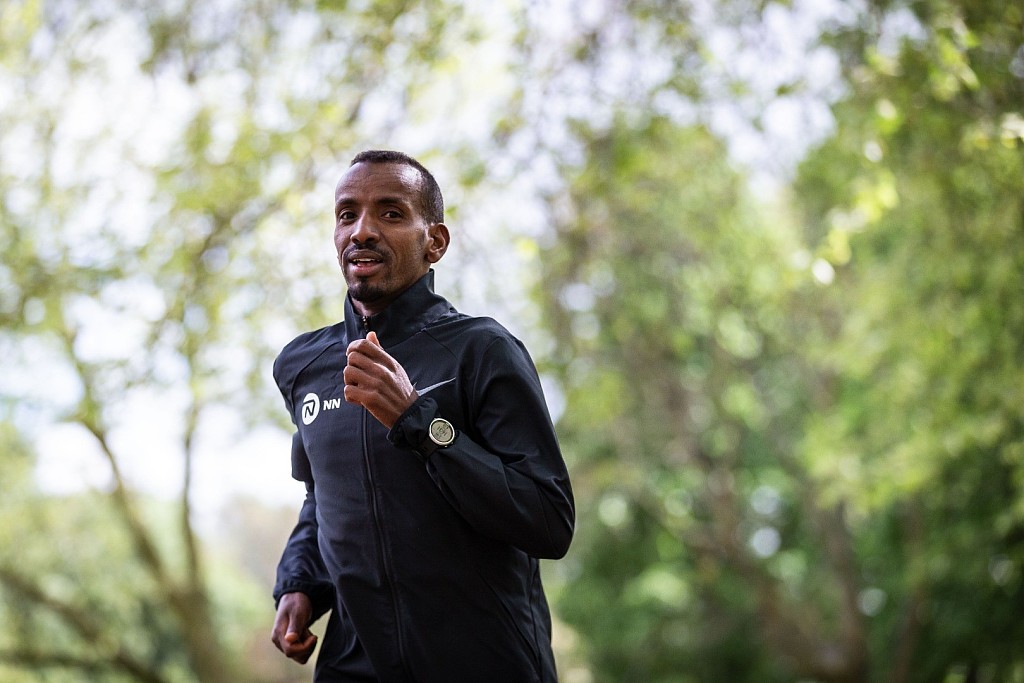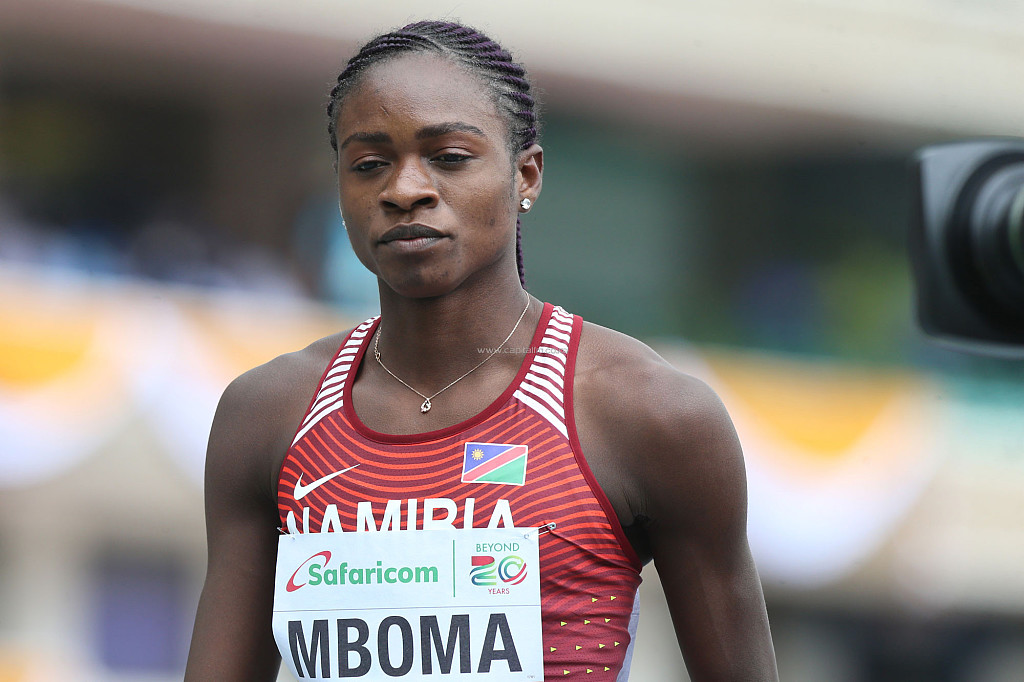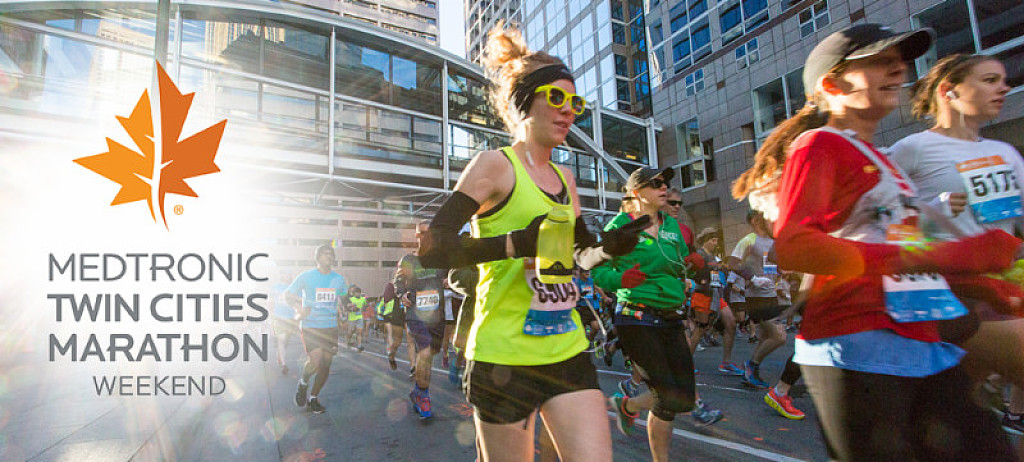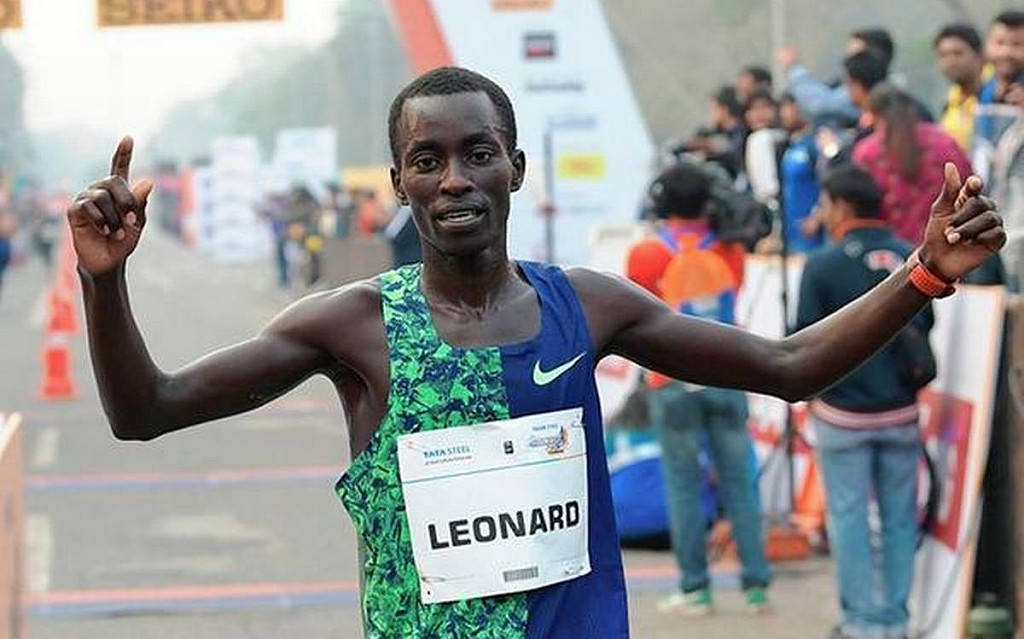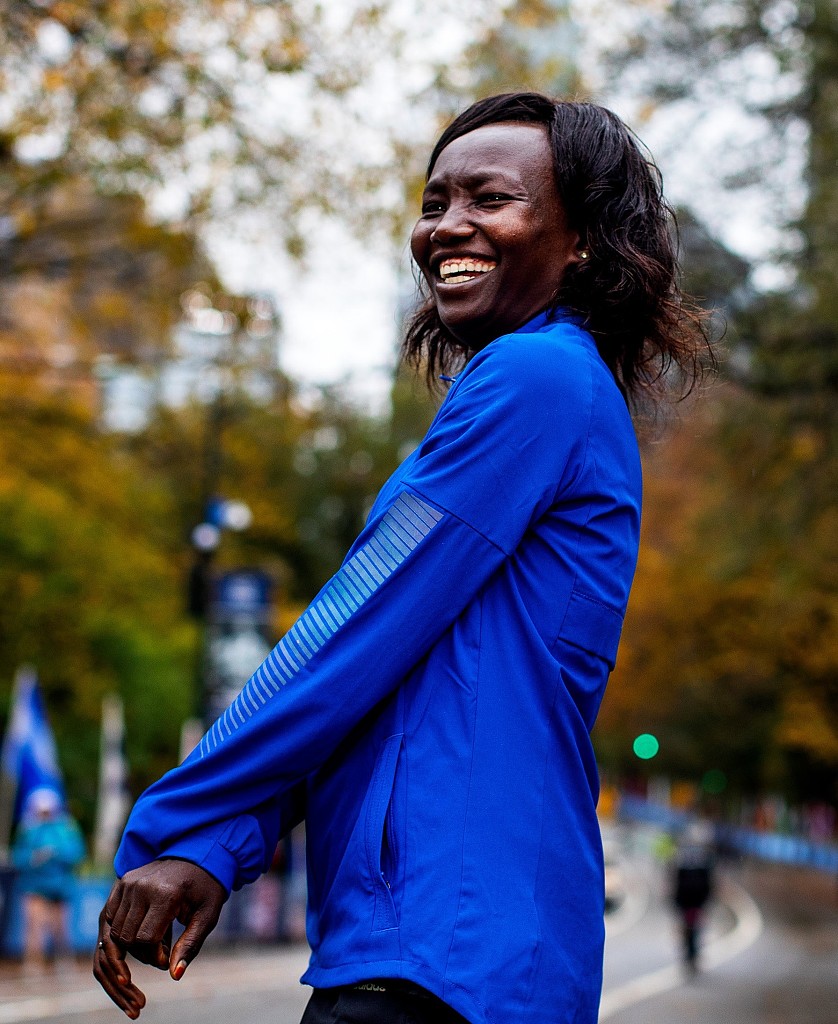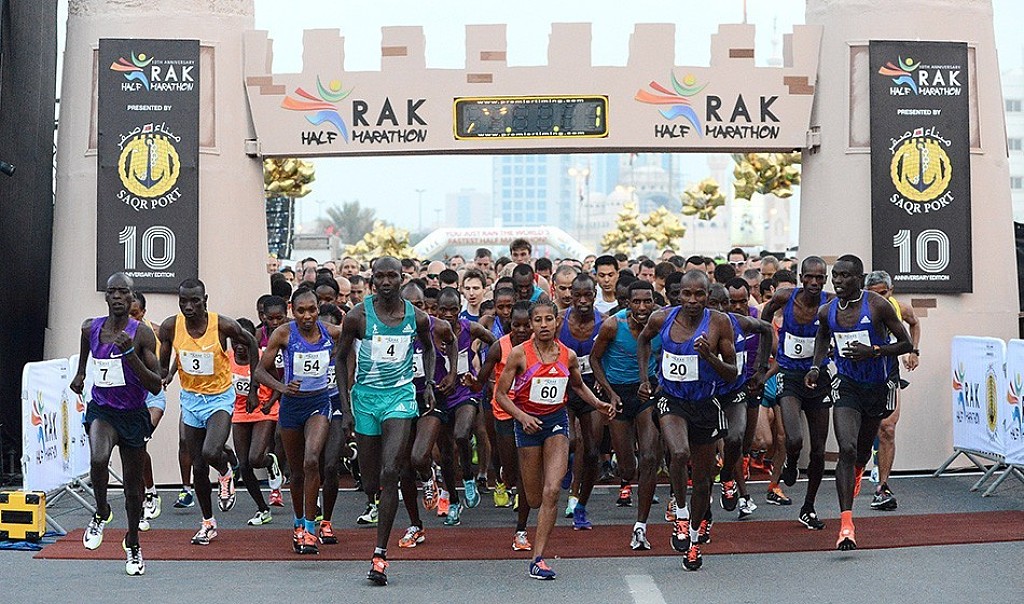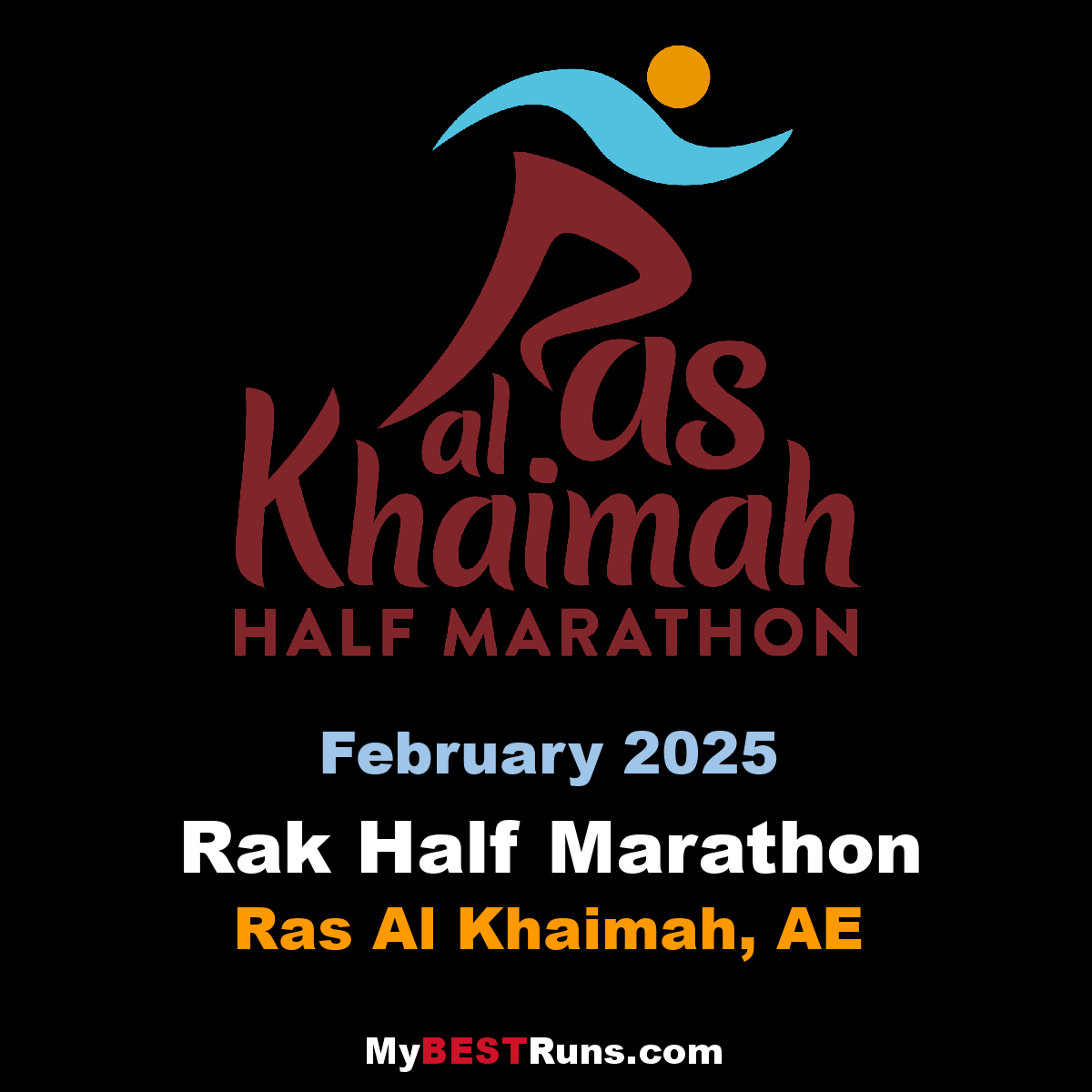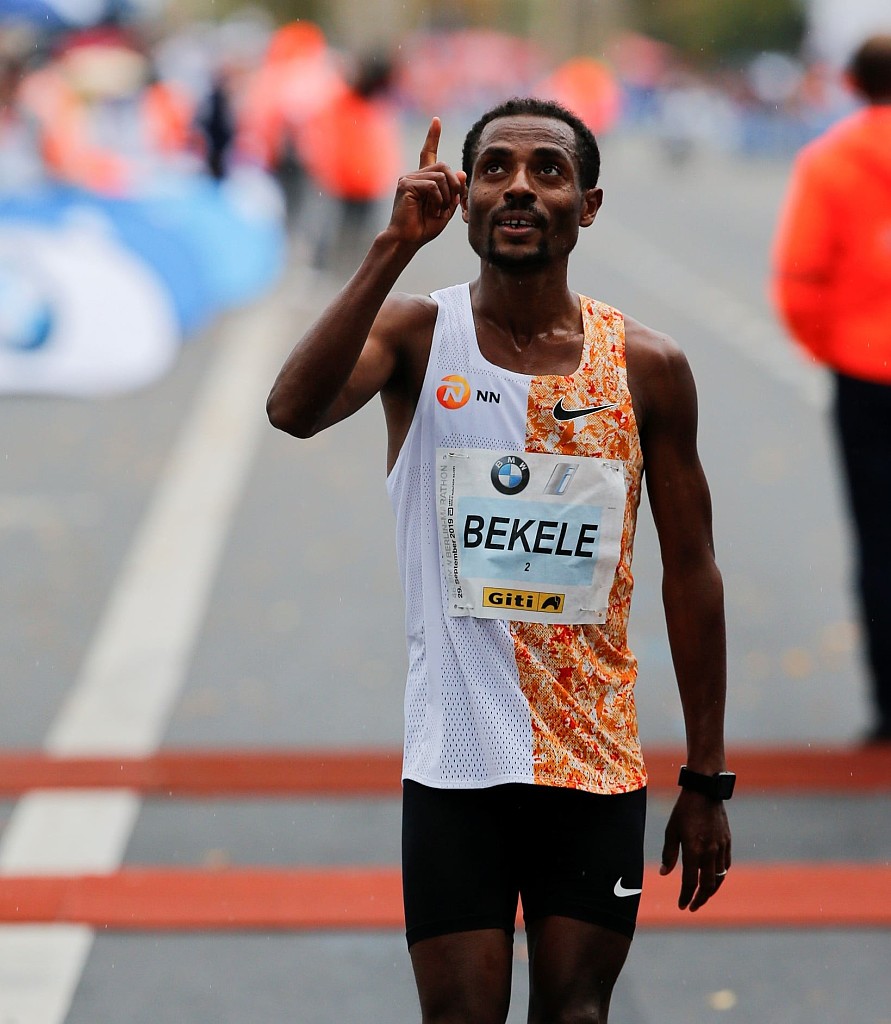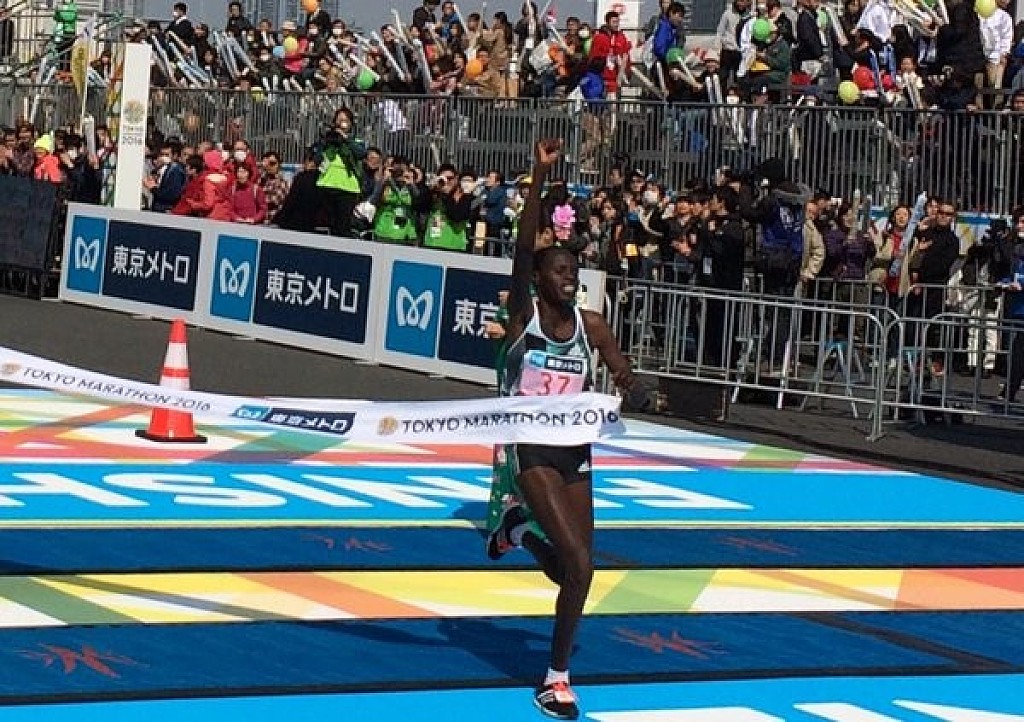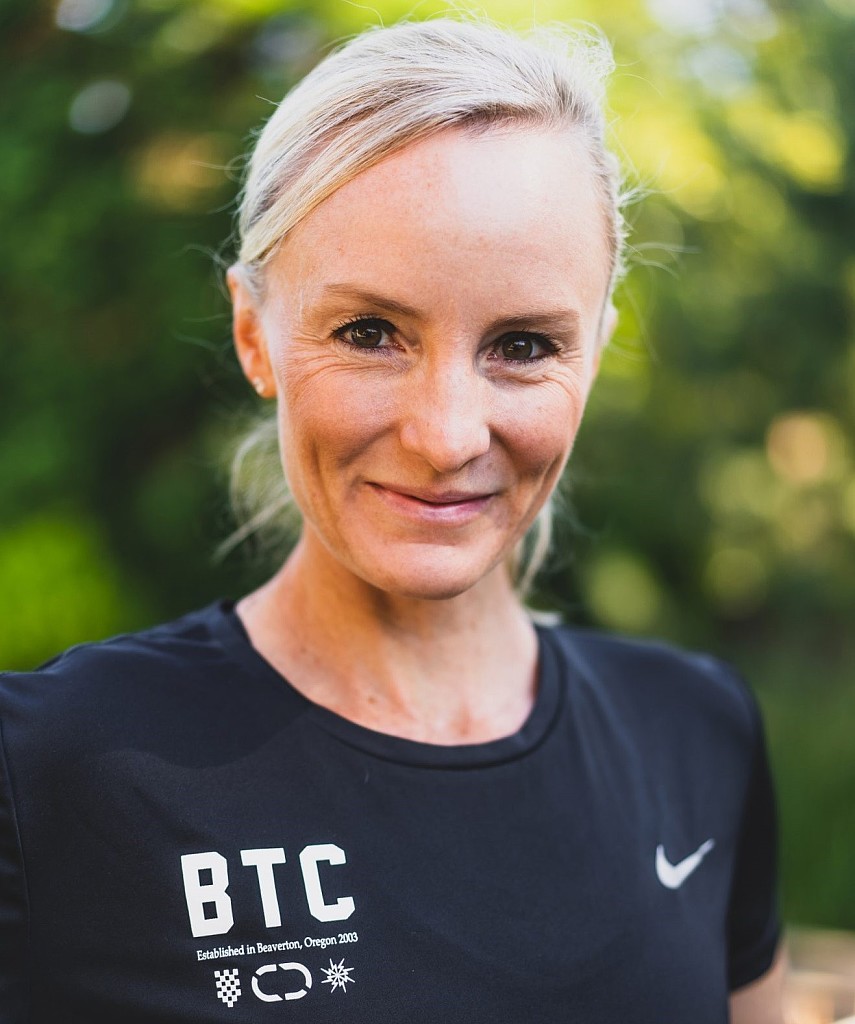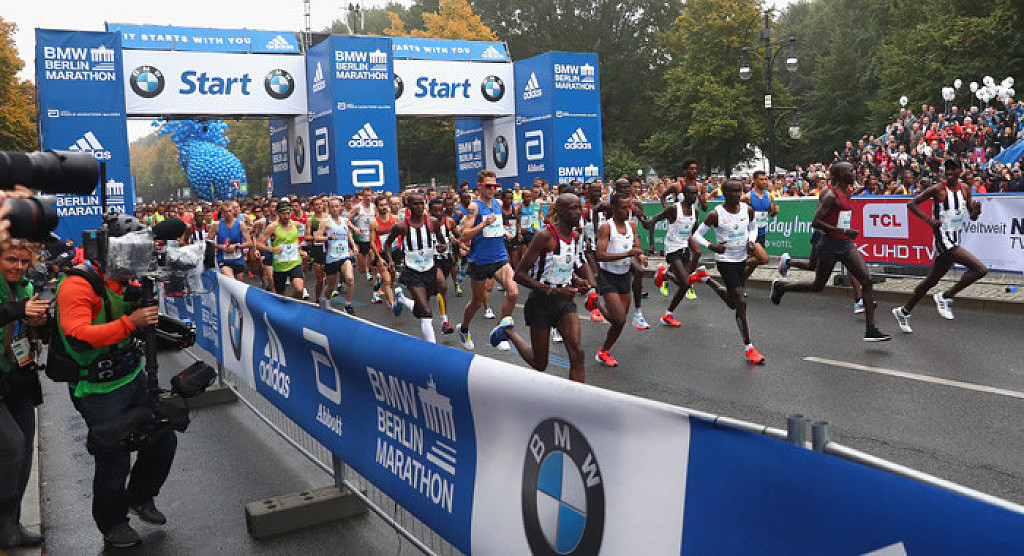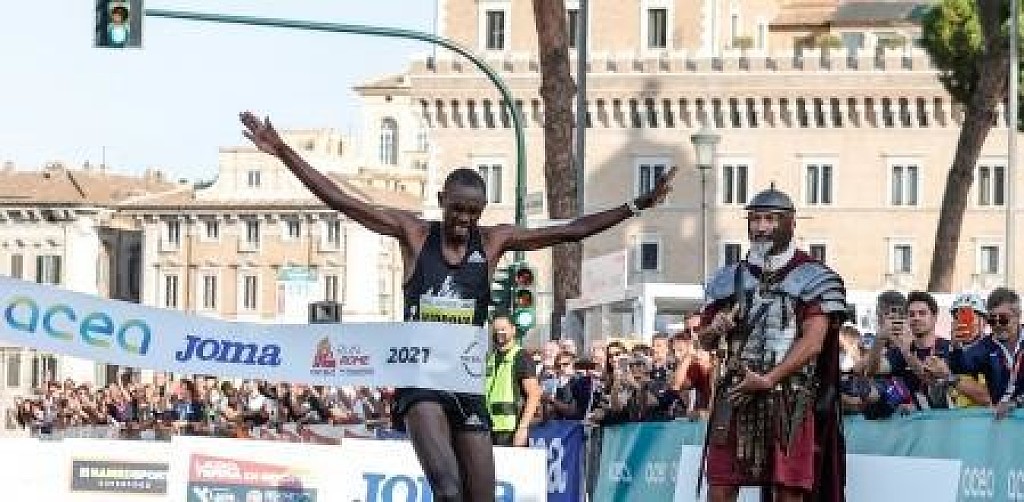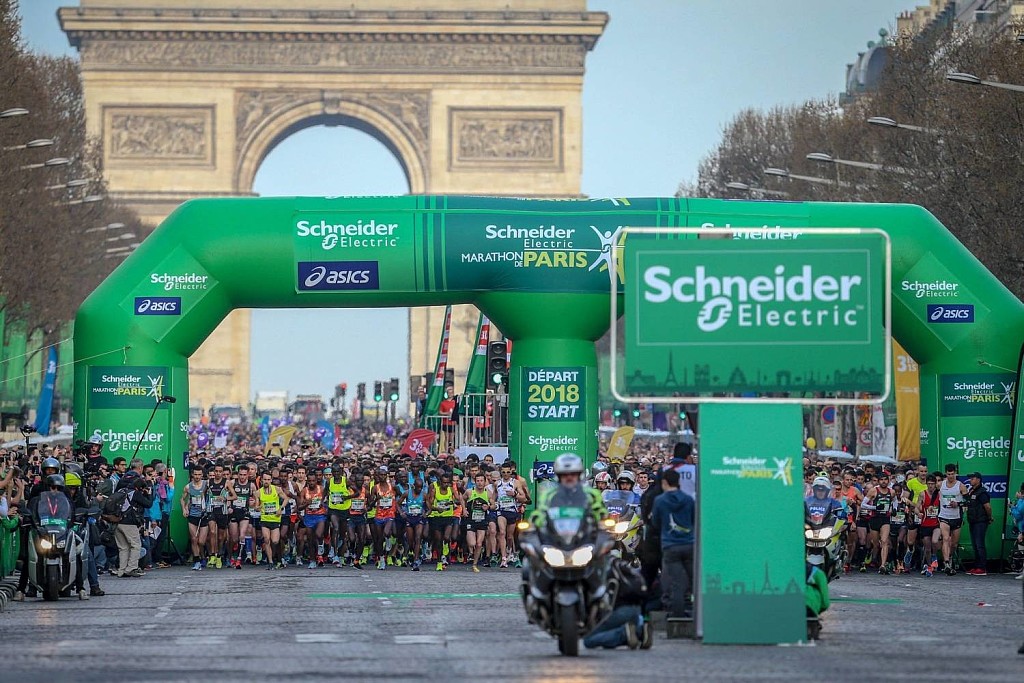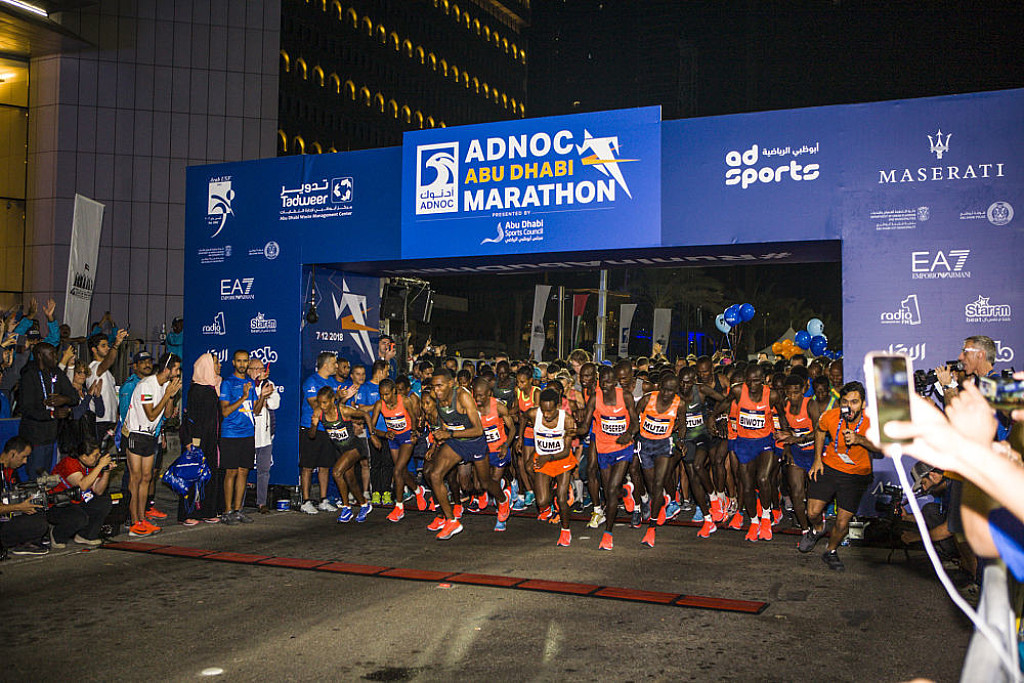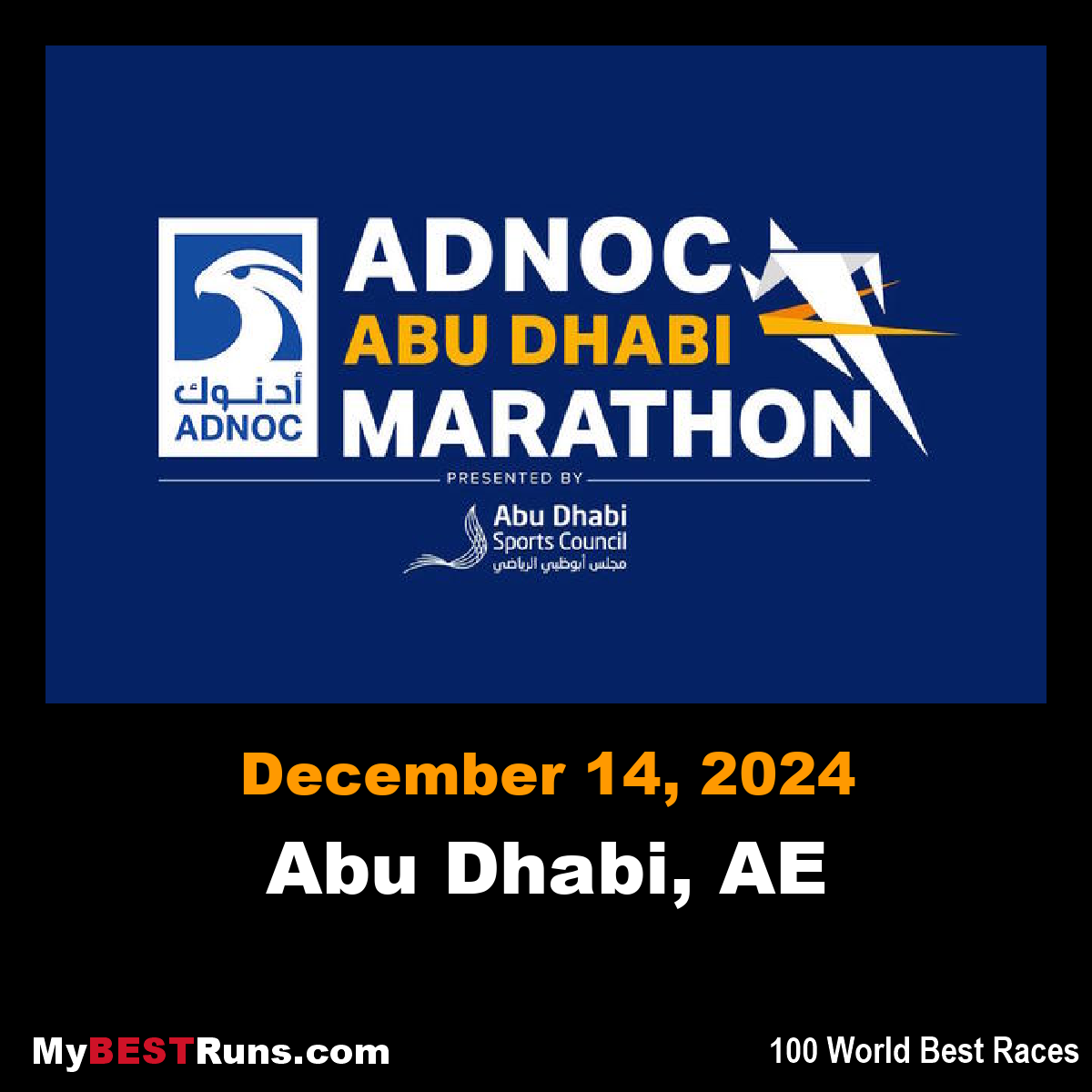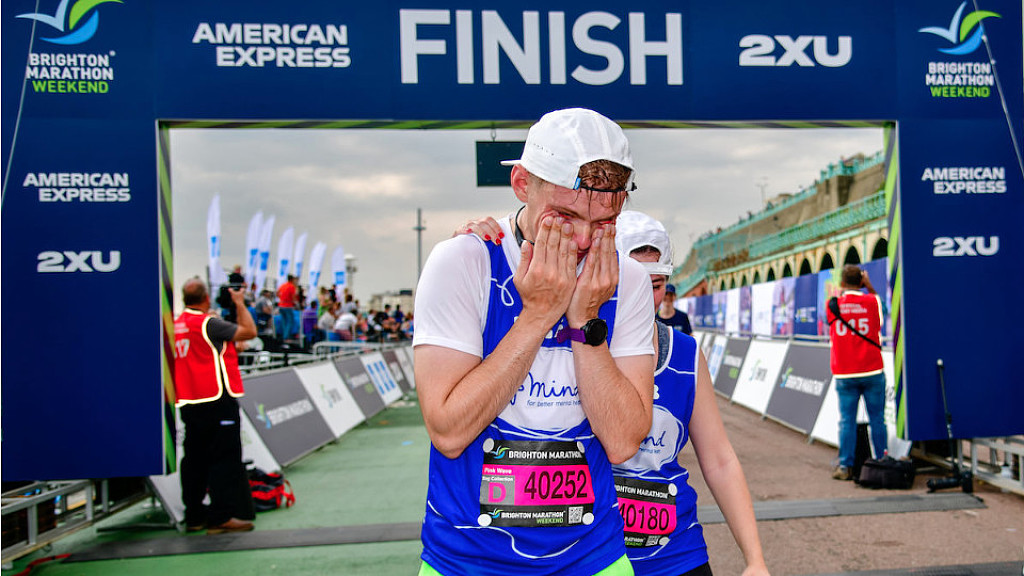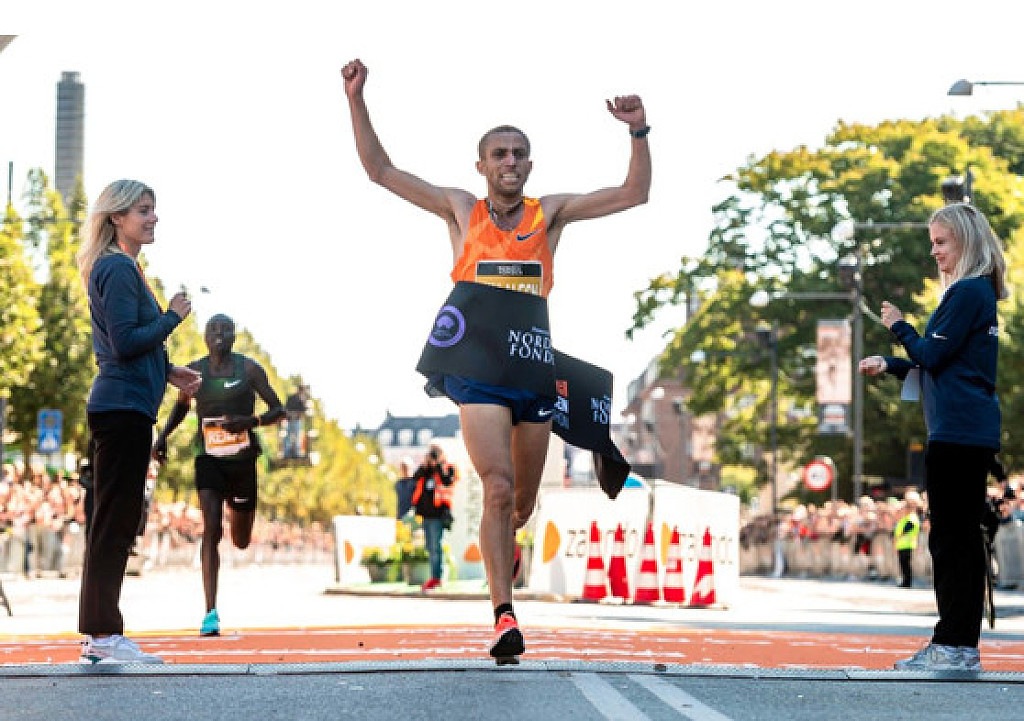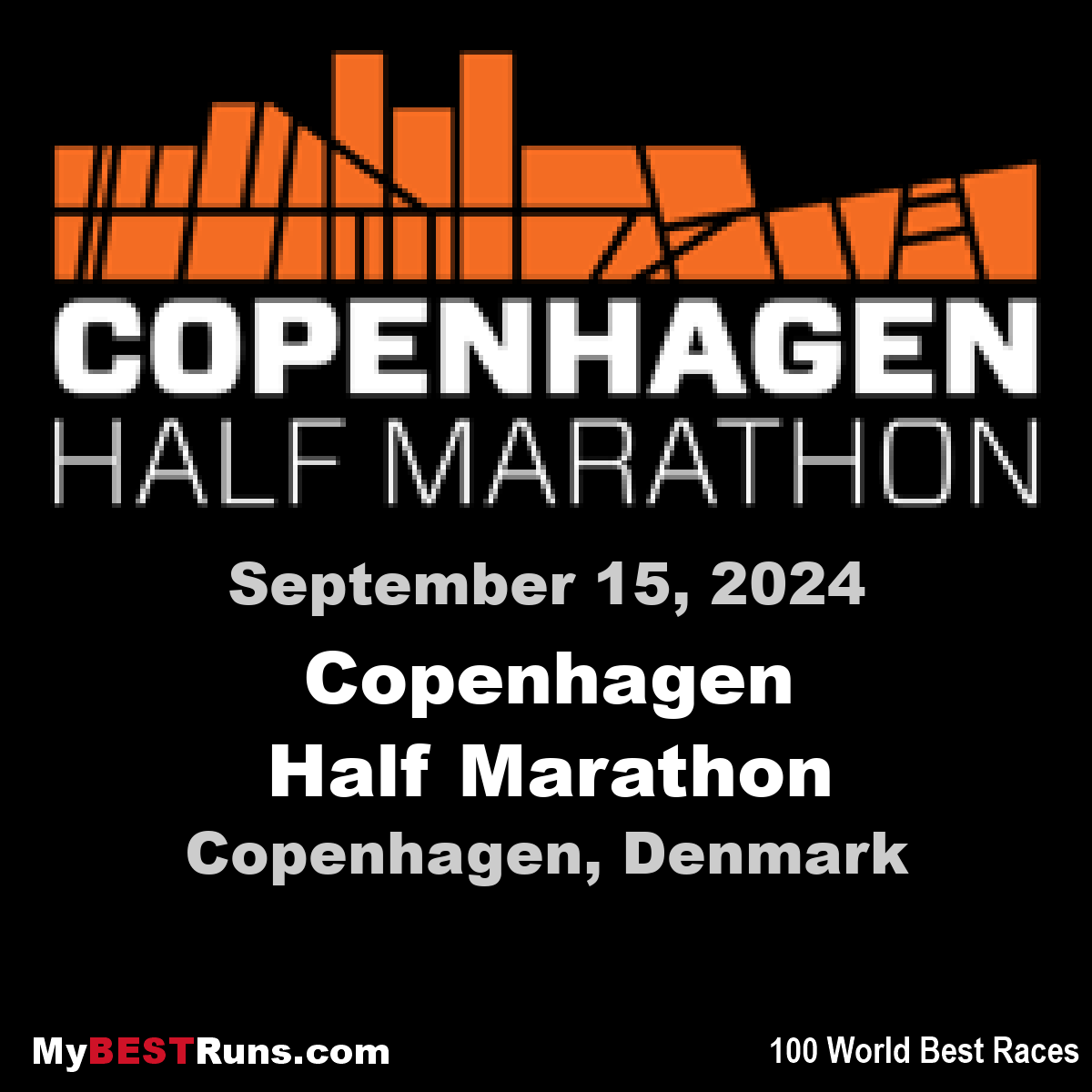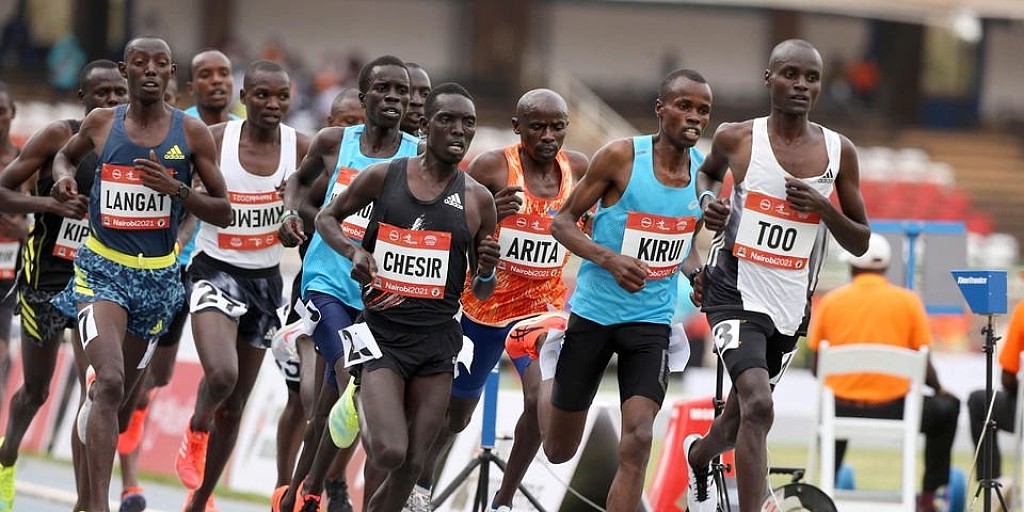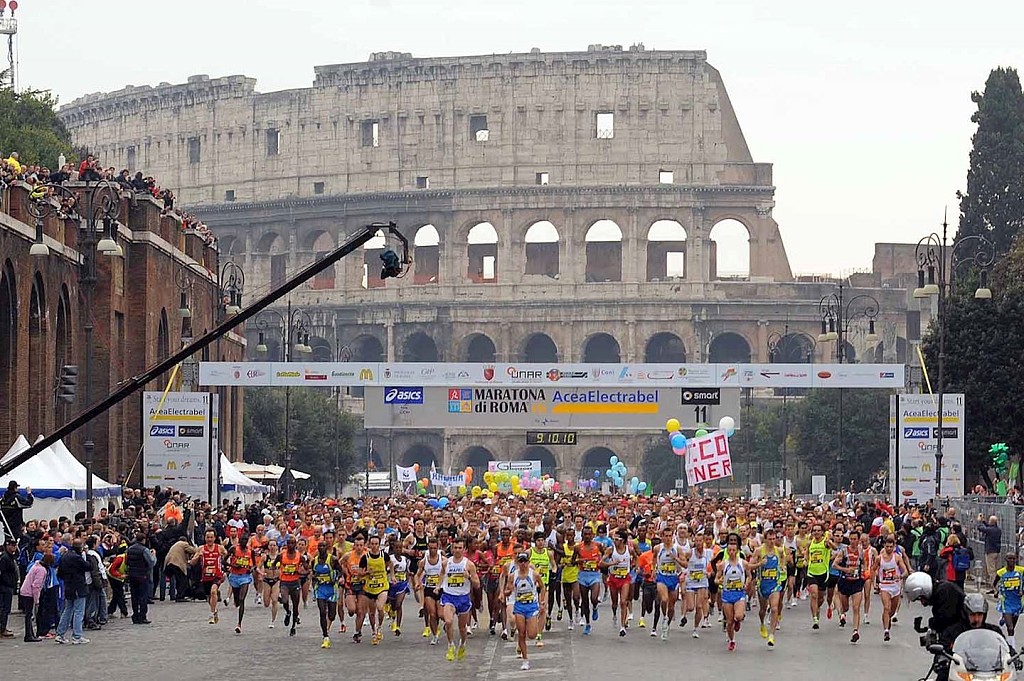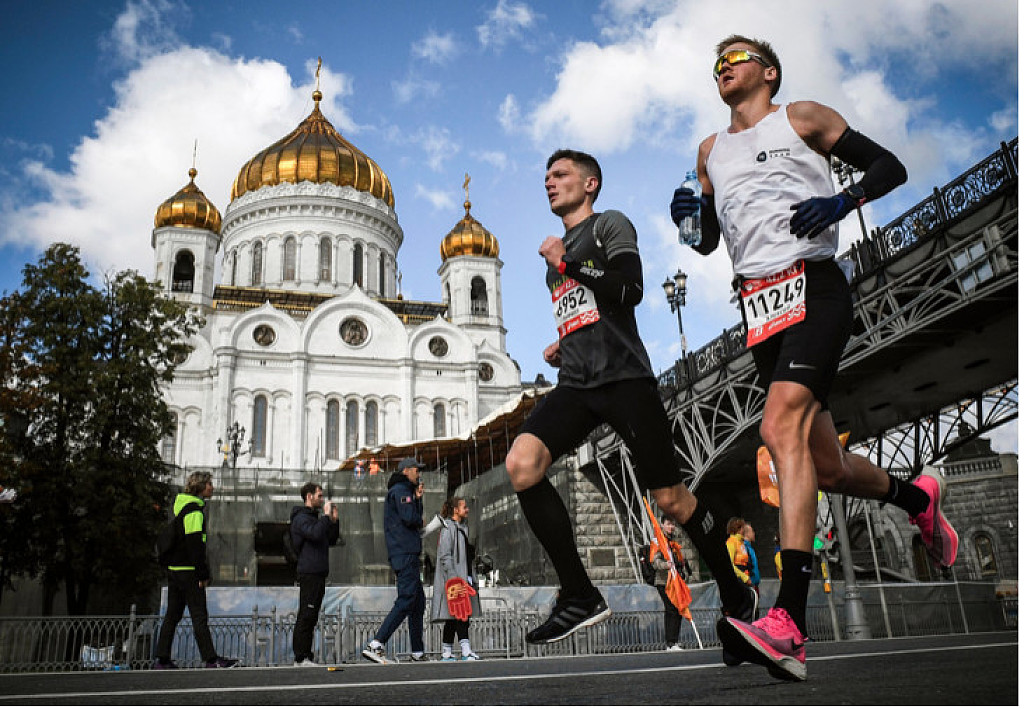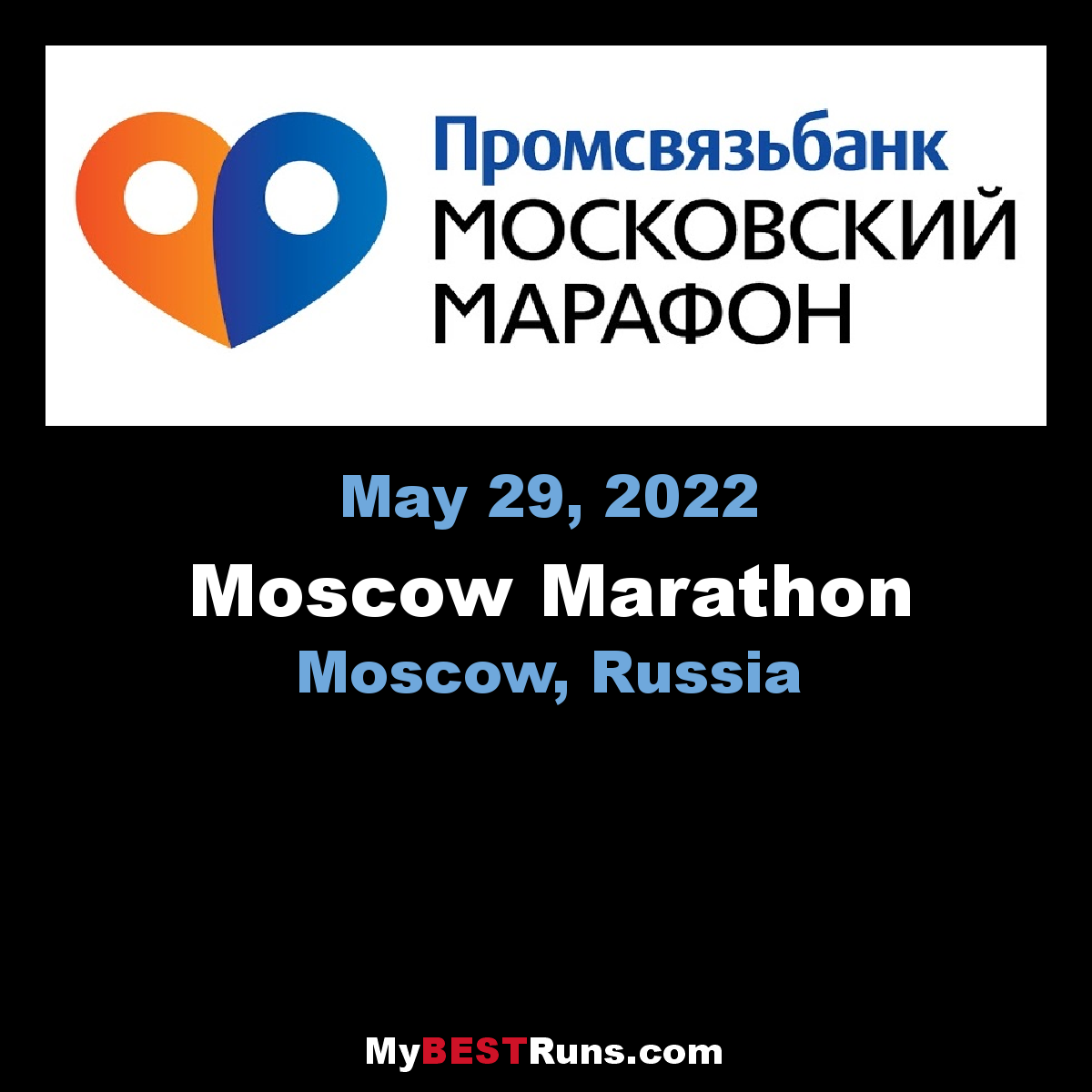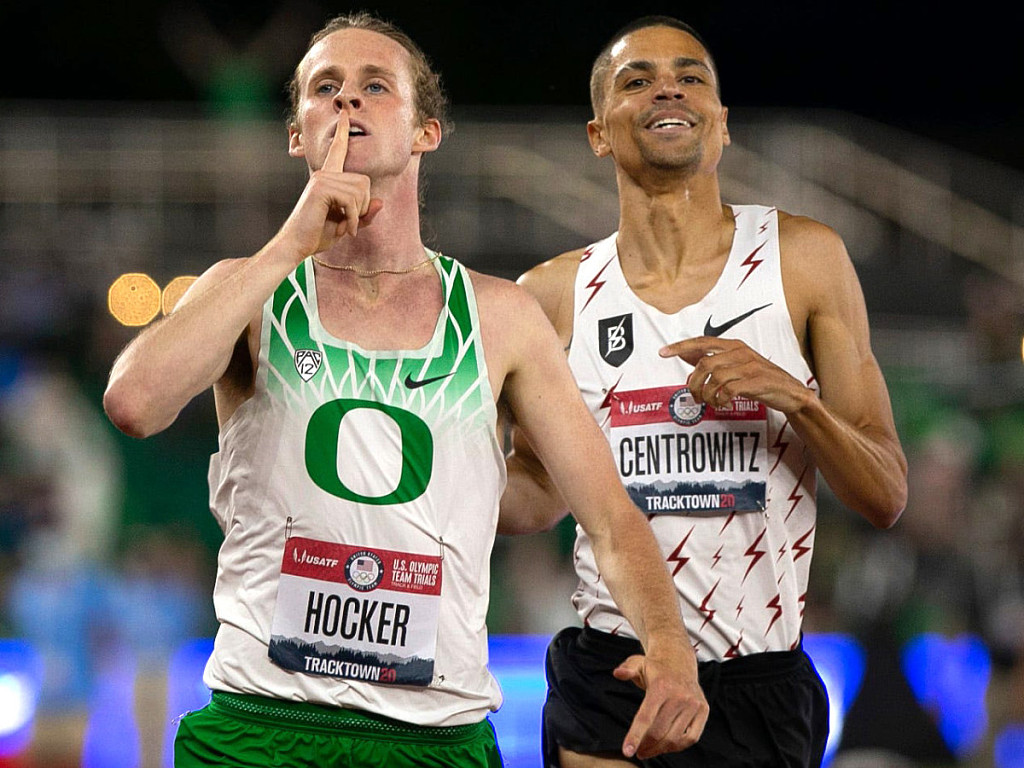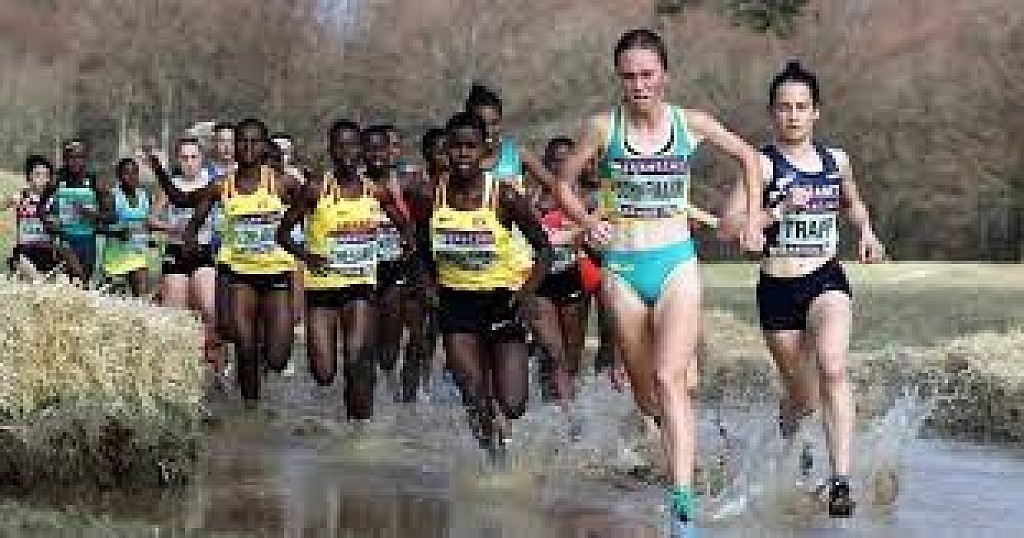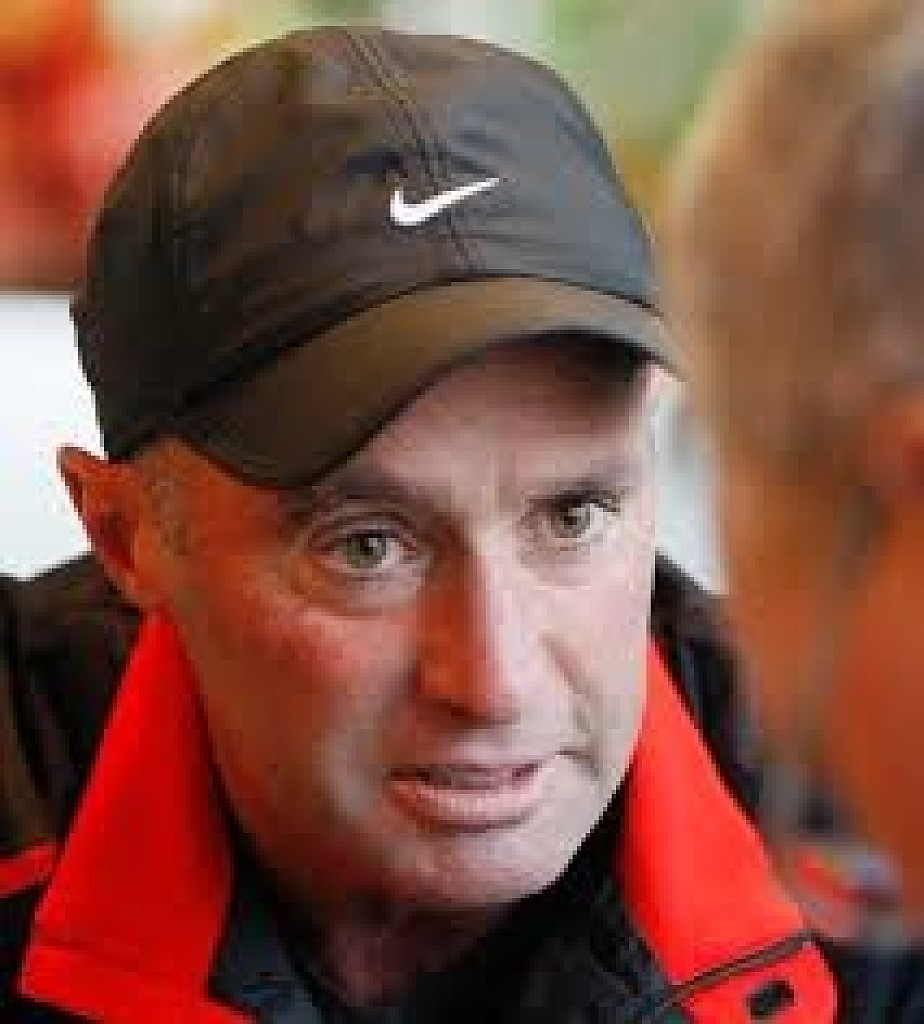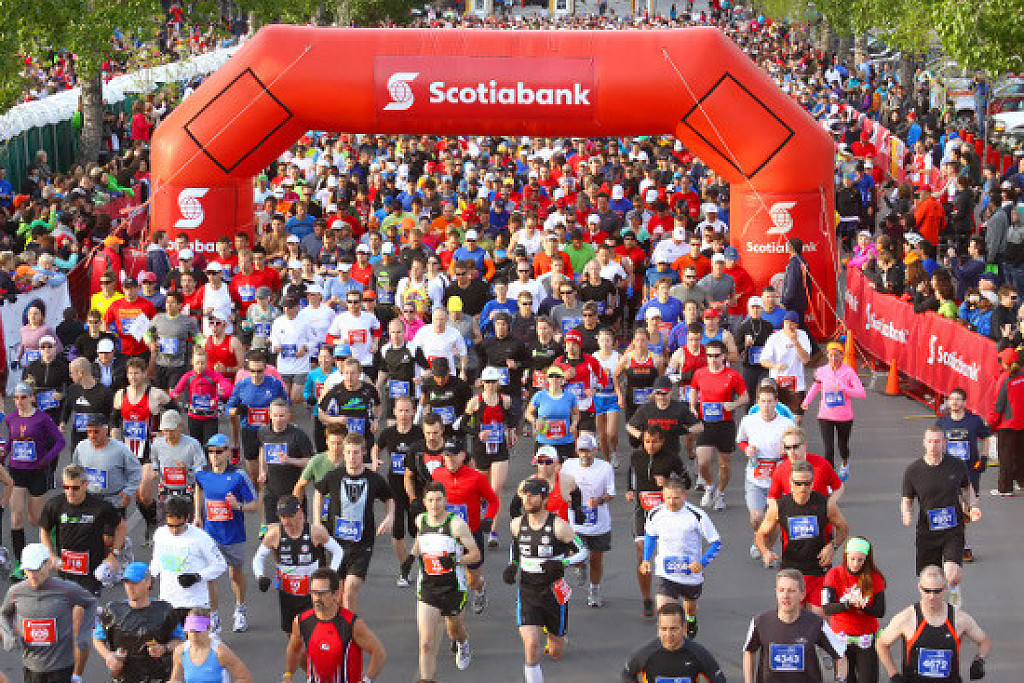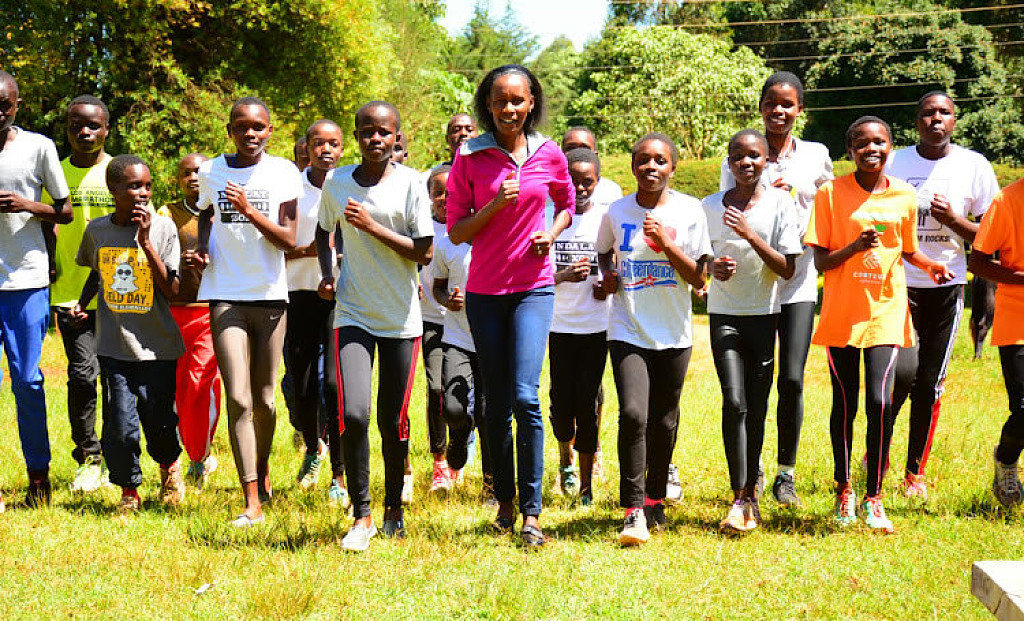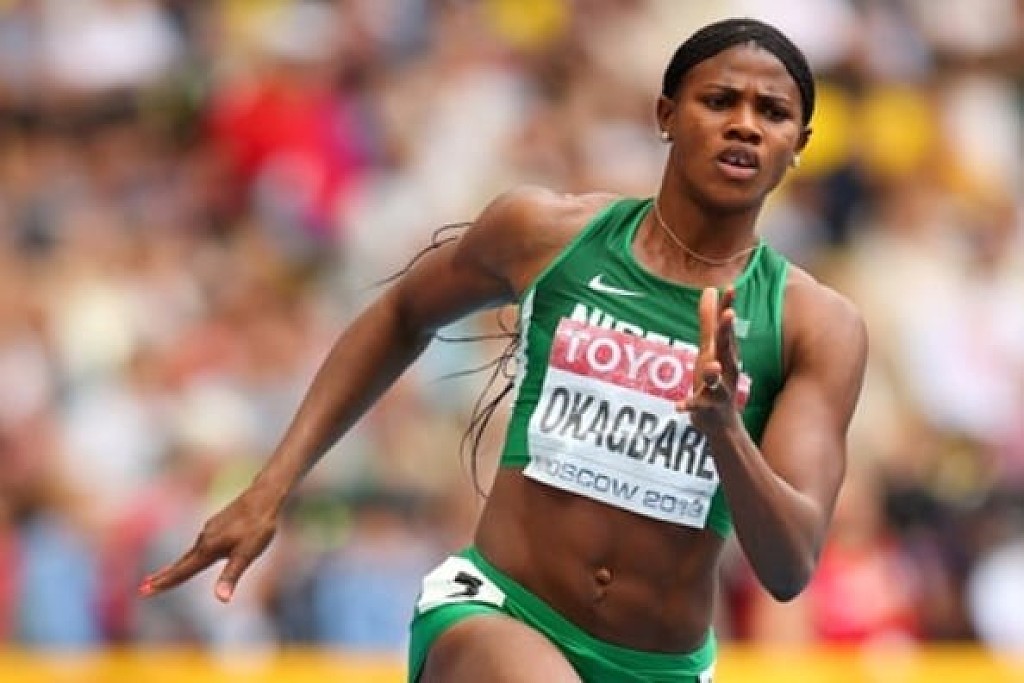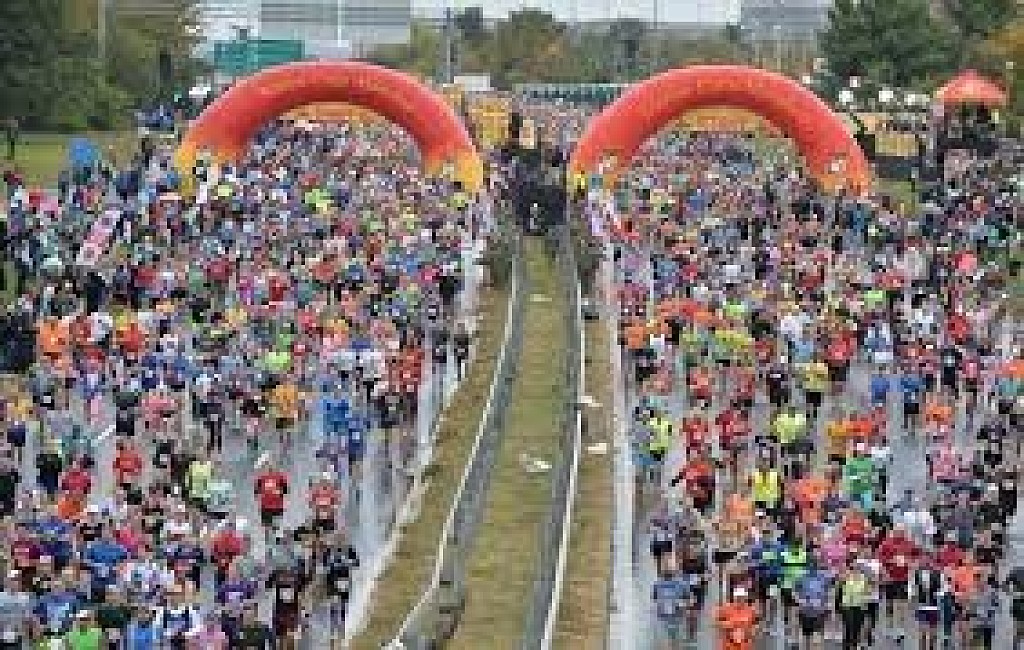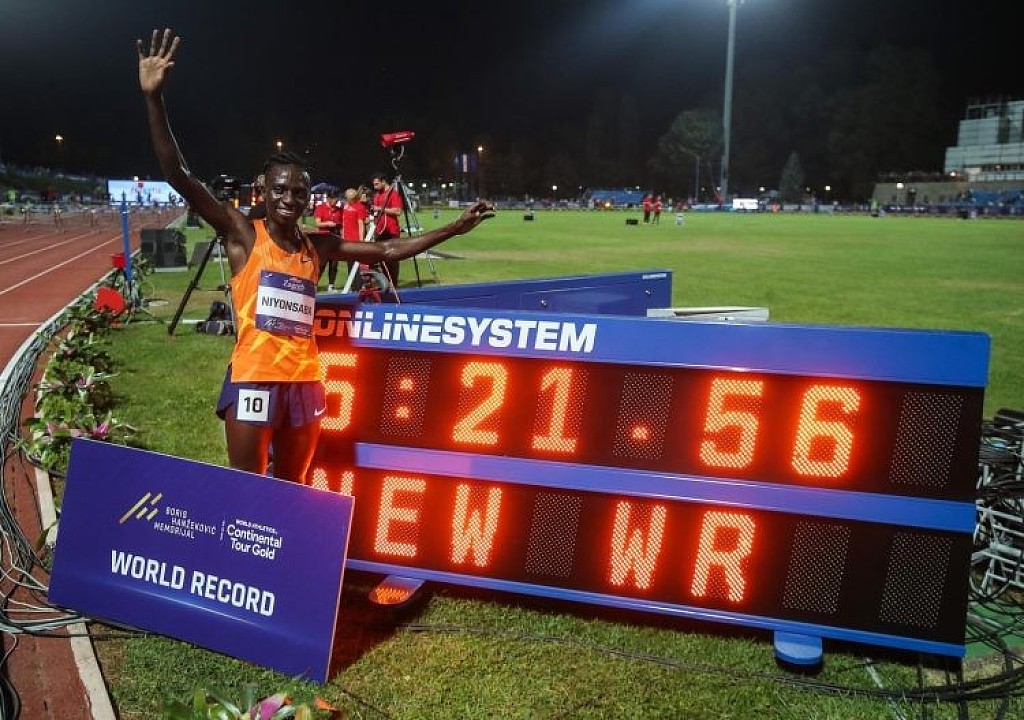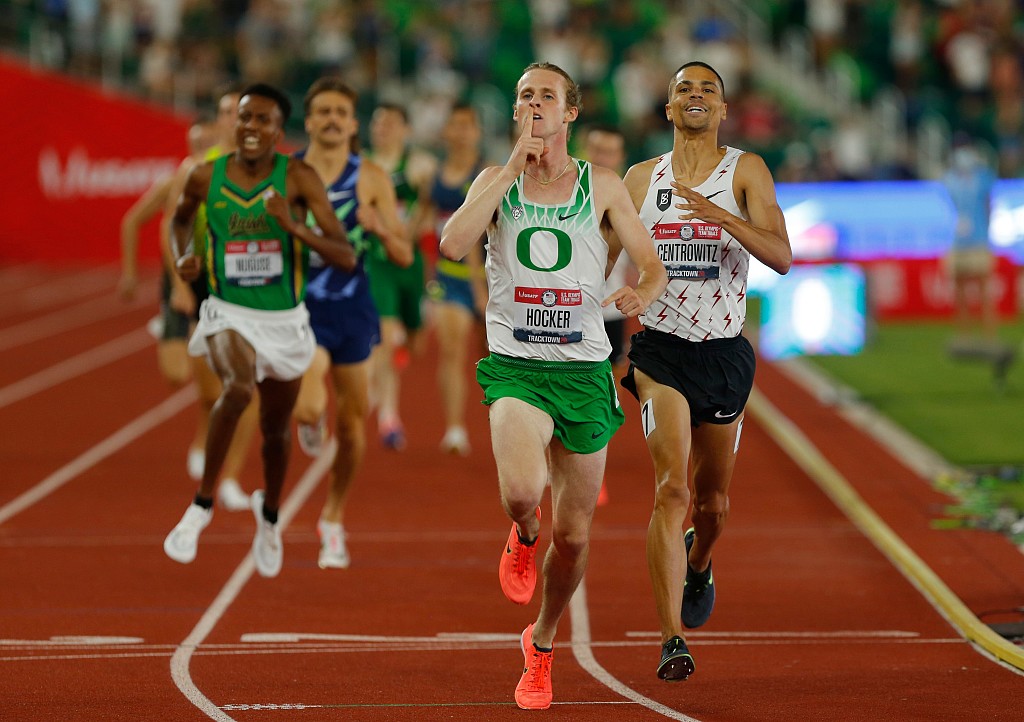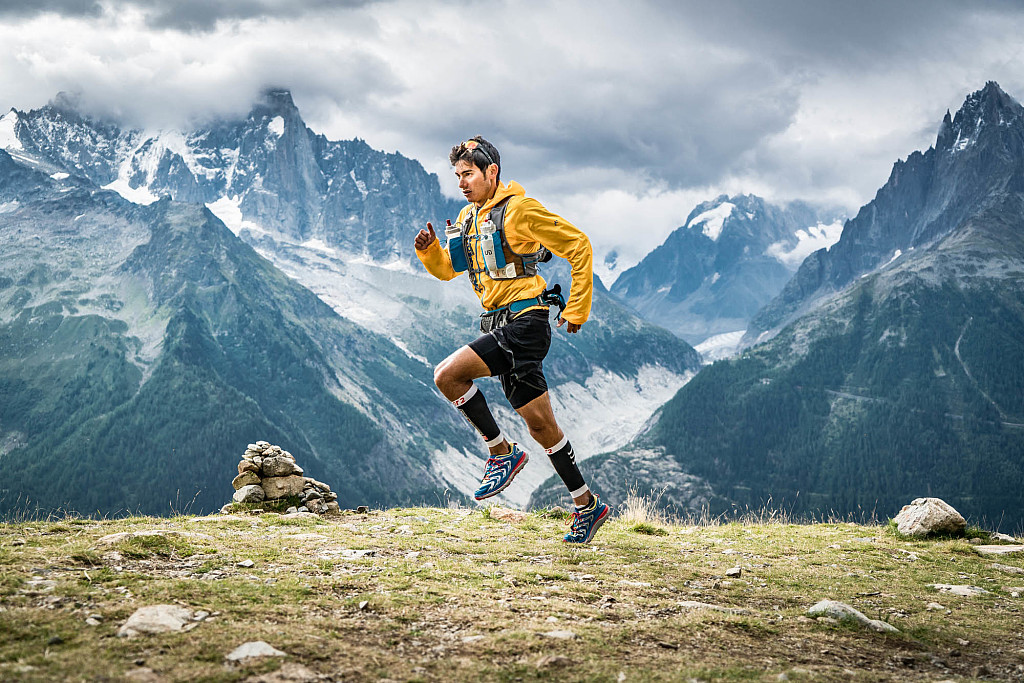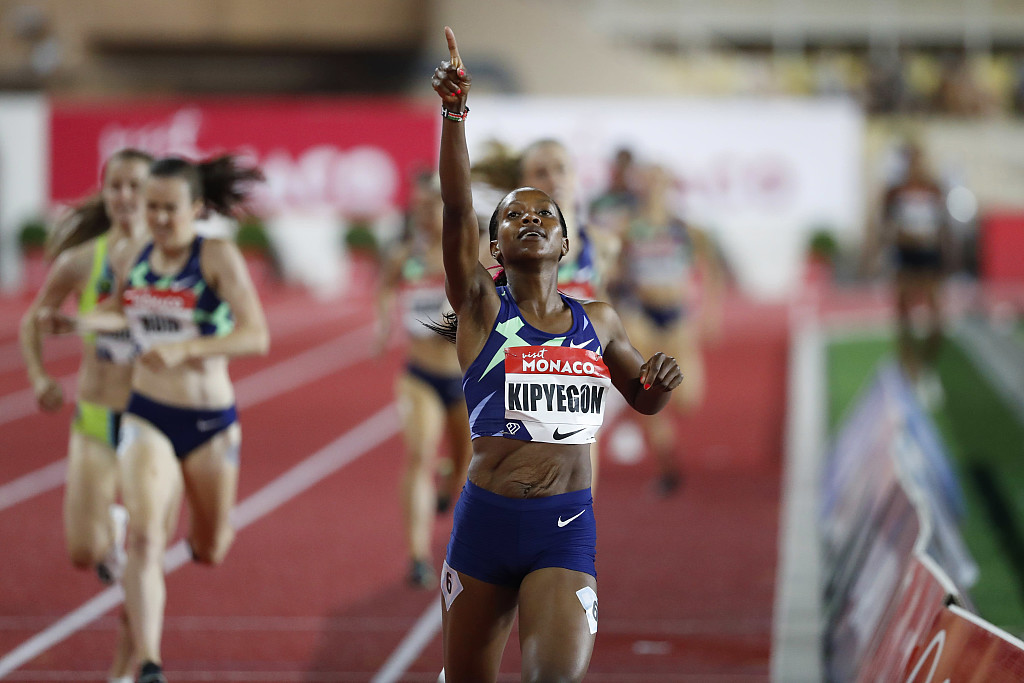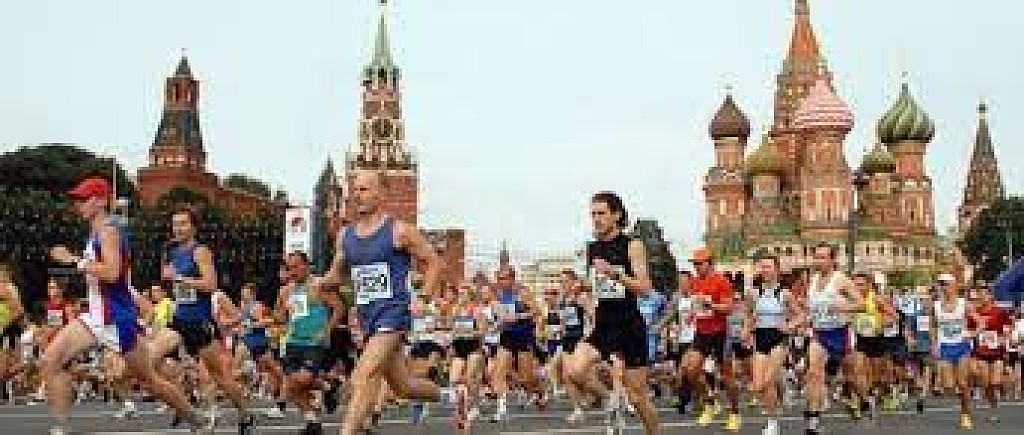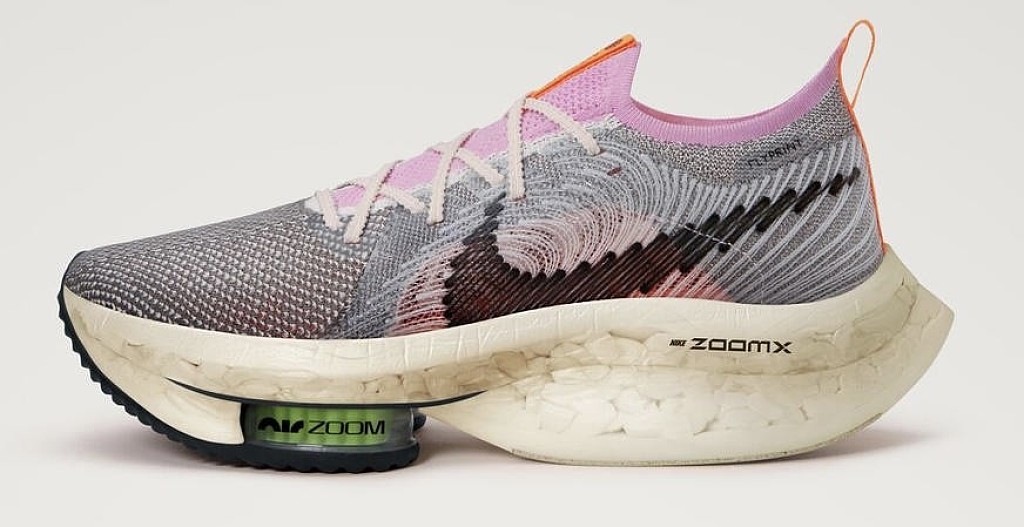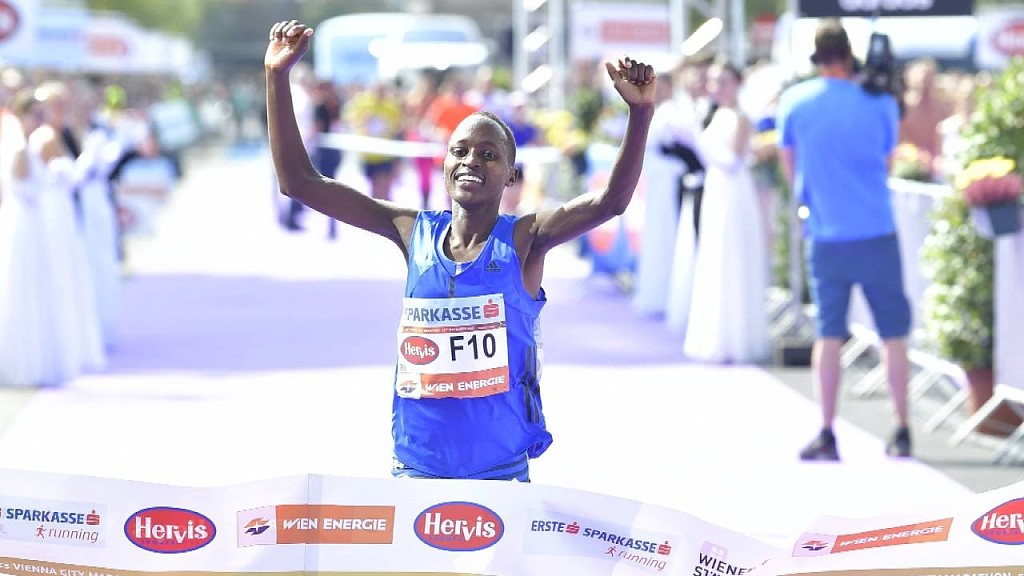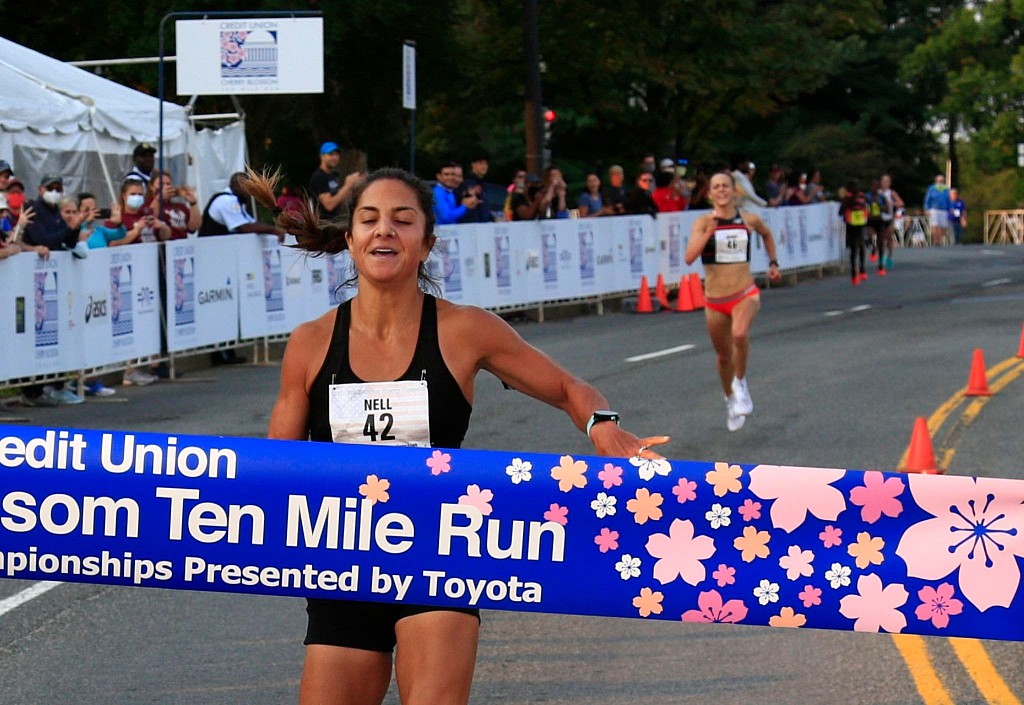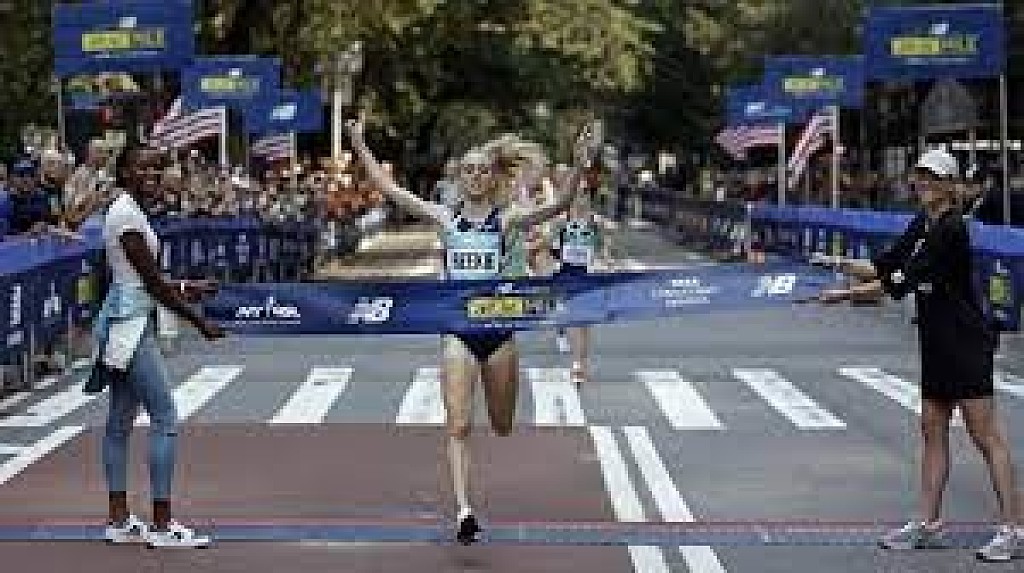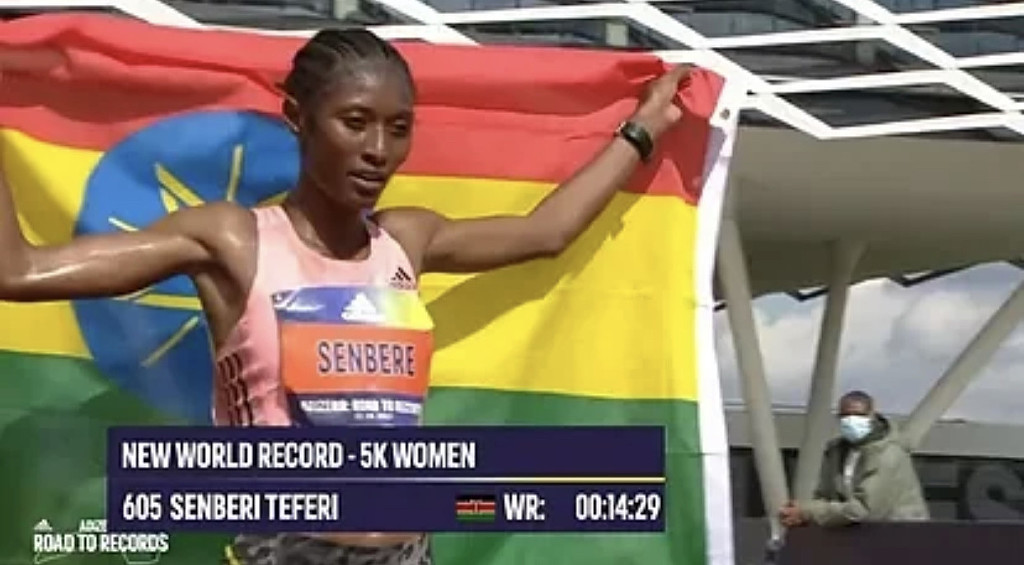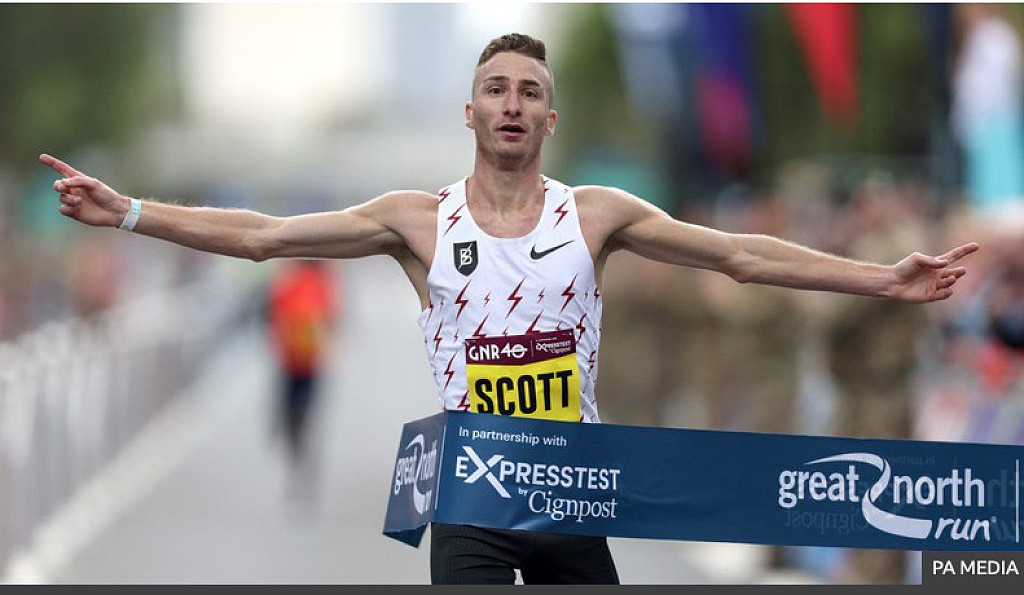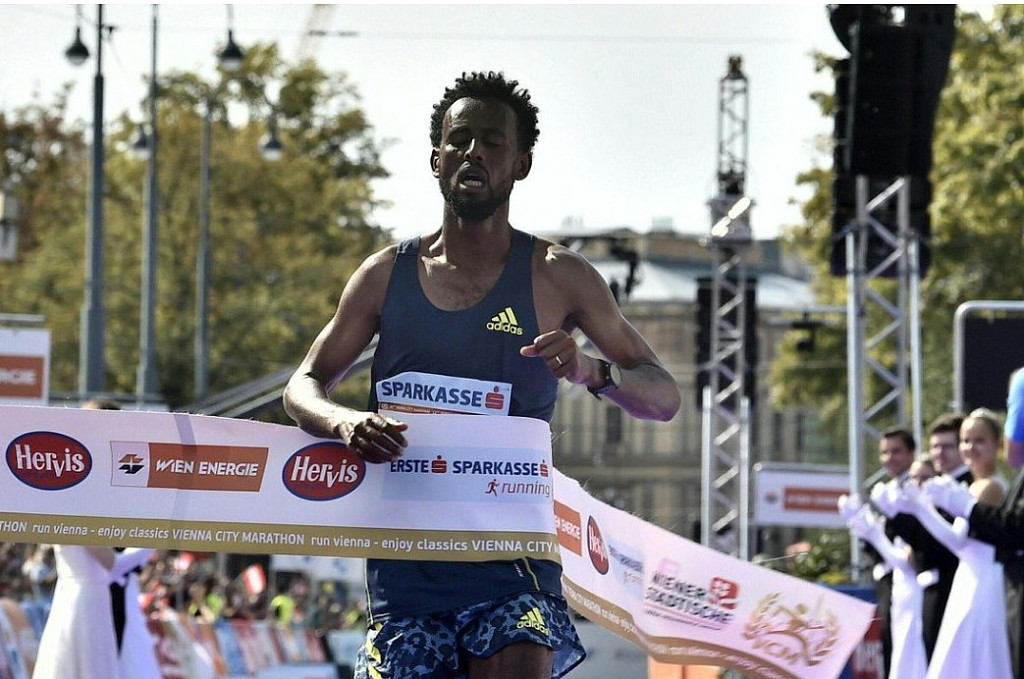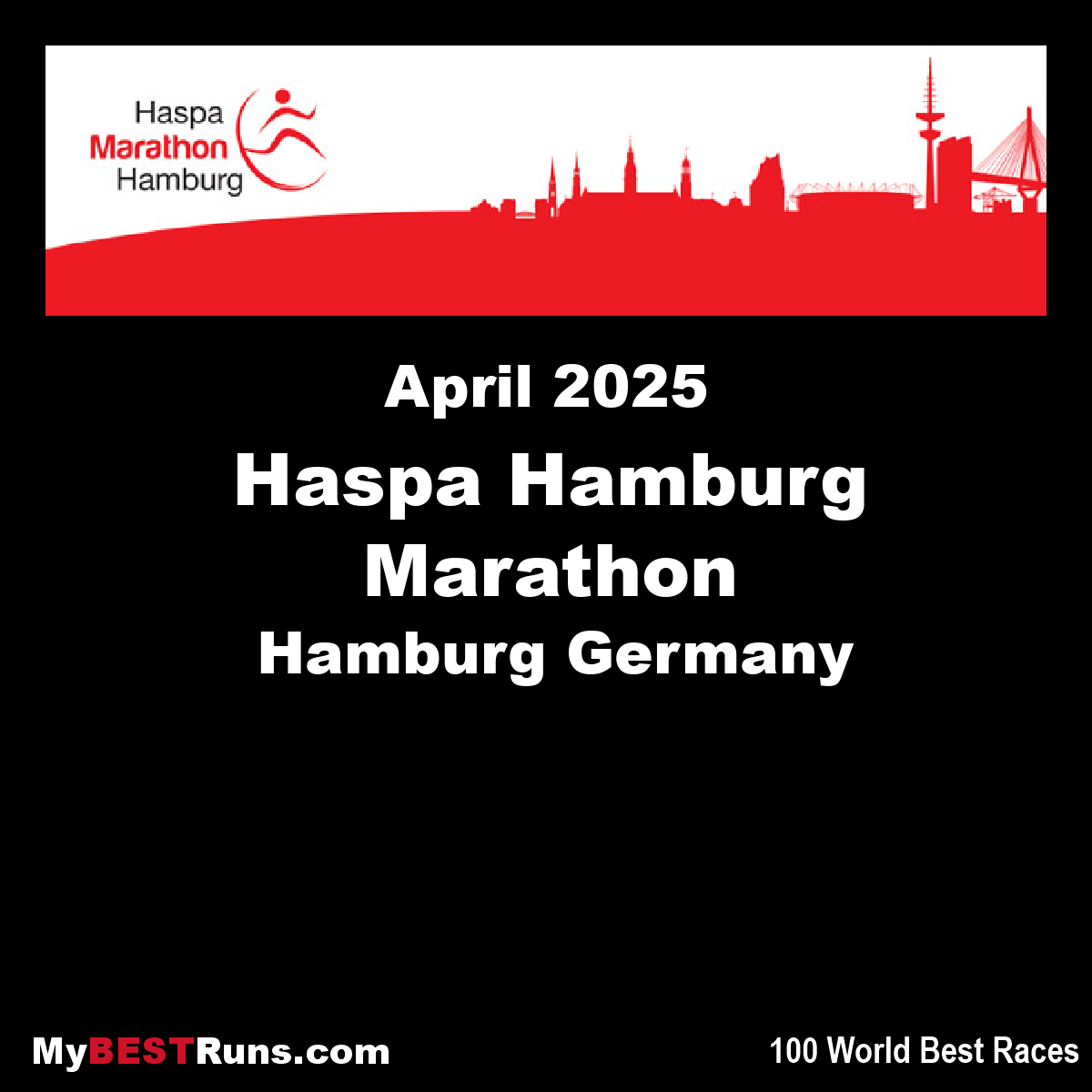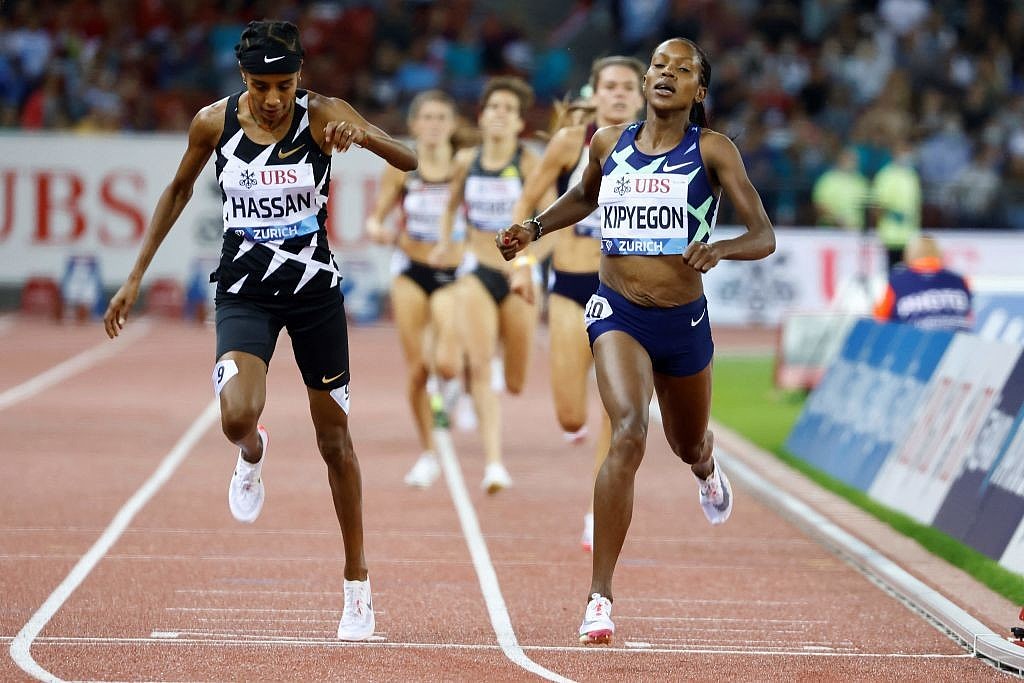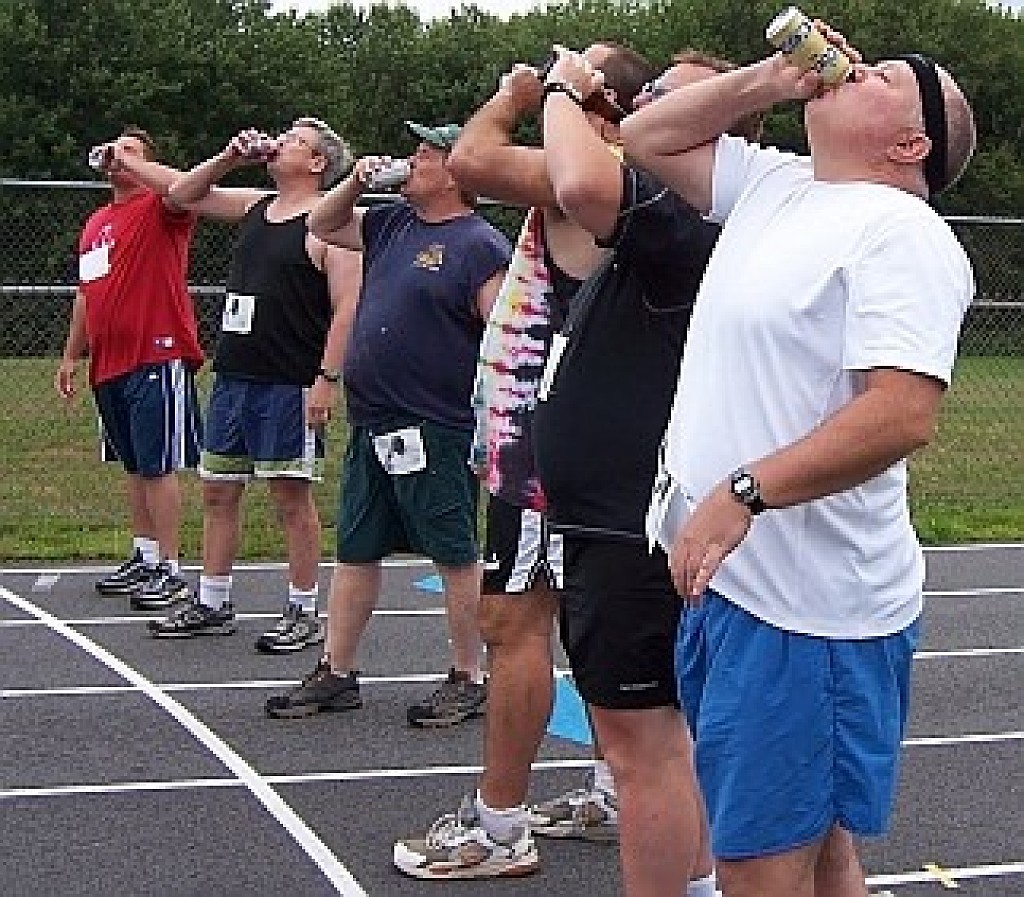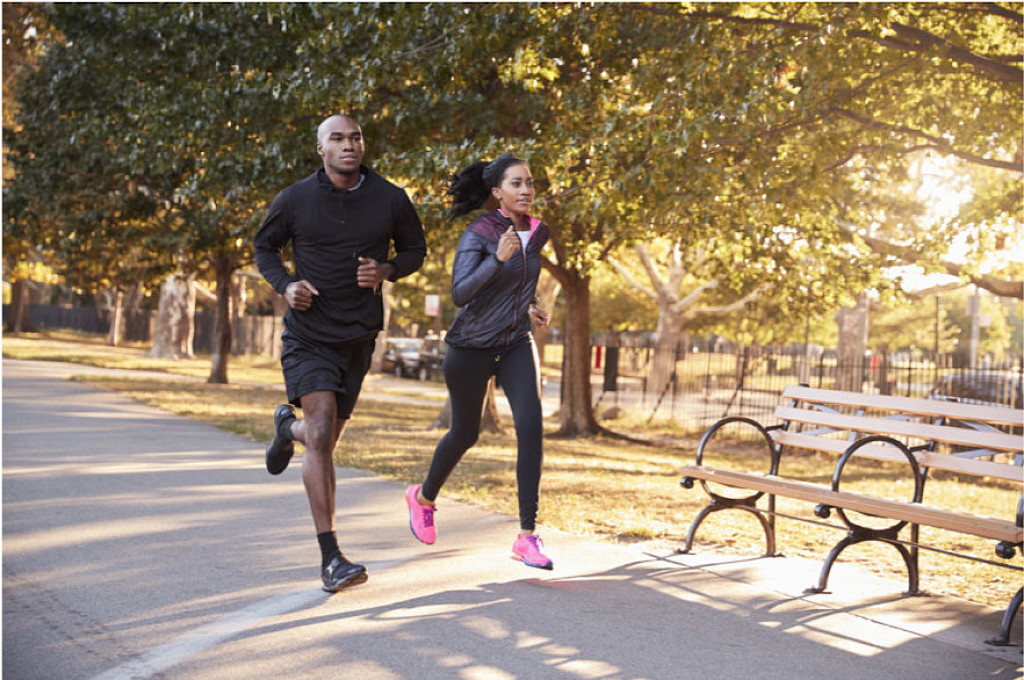Running News Daily
Running News Daily is edited by Bob Anderson in Mountain View, California USA and team in Thika Kenya, La Piedad Mexico, Bend Oregon, Chandler Arizona and Monforte da Beira Portugal. Send your news items to bob@mybestruns.com Advertising opportunities available. Over one million readers and growing. Train the Kenyan Way at KATA Running Retreat Kenya. (Kenyan Athletics Training Academy) in Thika Kenya. Opening in june 2024 KATA Running retreat Portugal. Learn more about Bob Anderson, MBR publisher and KATA director/owner, take a look at A Long Run the movie covering Bob's 50 race challenge.
Index to Daily Posts · Sign Up For Updates · Run The World Feed
Around the Bay Road Race plans to return in March of 2022
Today, the Around the Bay 30K road race announced that in-person racing will return, for its 127th edition, in March of 2022.
The in-person 30K race in Hamilton, ON, will take place on Sunday, March 27, 2022. There will also be a virtual 2K, 5K, 10K and 15K offered for all who cannot make it to Hamilton or are not ready to return to in-person racing. The virtual race submission period runs from March 1, 2022, to March 26, 2022, and the 2022 virtual times will be included in the official race results.

“It’s been quite the journey but it looks like there is a light at the end of this tunnel, and we are looking forward to welcoming runners back to the historic Around the Bay race in March 2022,” said organizers in the press release.

Although this edition of the race will be different than the 126-editions before, race organizers will try to provide a memorable Around the Bay experience filled with history and tradition for runners.
The course and field size of the in-person race still has to be determined, depending on the public health parameters in the new year. Registrants can expect an announcement on the logistics of the event closer to race day.
There will be restrictions on registration for Around the Bay, and those who chose to defer their entry in 2020 and 2021, get the first opportunity to register for the 2022 Bay race
(09/23/2021) ⚡AMPby Marley Dickinson
Around the Bay 30k
Hamilton's Around the Bay Road Race is the oldest on the continent, first run in 1894, three years before the Boston Marathon. Rich in tradition, it has been won by the best from around the world, including Boston Marathon winners and Olympic gold medallists. Become part of the continuing tradition by running this challenging course around Hamilton's natural harbour! ...
more...UTMB bans painkillers at all events including ibuprofen, before or during any UTMB races
The organizers of the Ultra-Trail du Mont-Blanc (UTMB) World Series will be banning the use of painkillers within 24 hours and during all races. This includes all non-steroidal anti-inflammatories (NSAIDs), such as ibuprofen. The announcement was made after the UTMB’s Quartz Event health program carried out post-event drug tests for the first time this year and three athletes’ samples contained NSAIDs.
The Quartz Event health program was set up in 2008 to protect the health of participants and contribute to clean sport. The rules of the program align with the banned substance list set out by the World Anti-Doping Agency (WADA) but goes a couple of steps further. Under the Quartz medical rules, athletes must not compete in any race if they have violated any of the following regulations:
Within 60 days before the start of the competition and during the competition:
Intravenous iron infusions
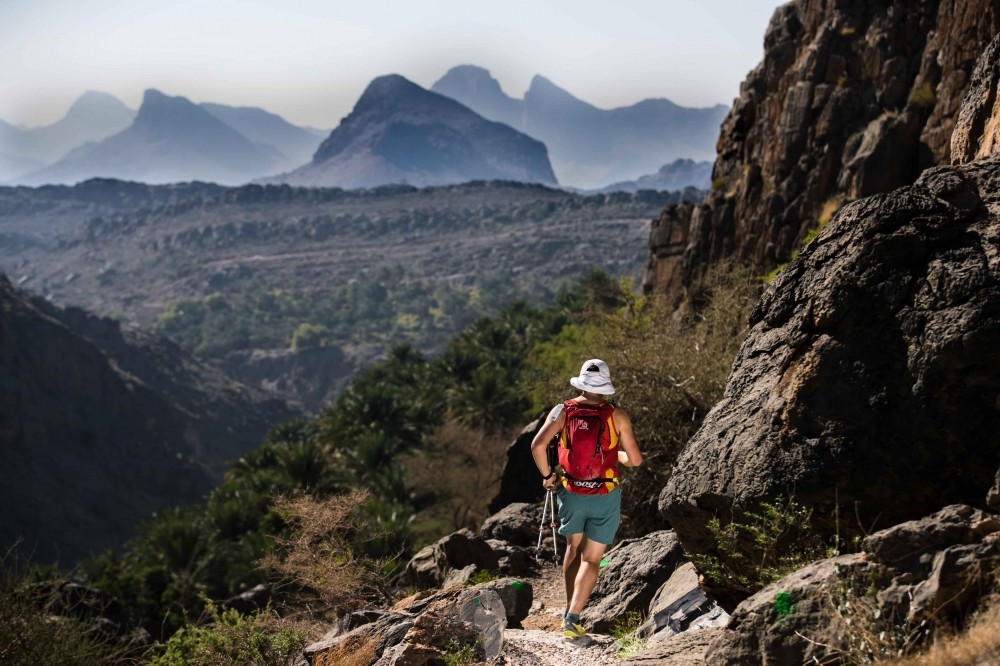
Within 7 days before the start of the competition and during the competition:
Intravenous infusion
Gas inhalation

Substance subject to a Therapeutic Use Exemption (TUE) according to the WADA Prohibited List
All glucocorticoids regardless of the mode of administration
Thyroid synthesis hormones except in case of partial or total removal of the thyroid or hypothyroidism of medical origin.
Within 24 hours before the start of the competition and during the competition:
All beta-2-agonists regardless of the mode of administration
All painkillers including Tramadol and Non-Steroidal Anti-Inflammatory Drugs (NSAIDs) regardless of the mode of administration
All substances included in the WADA Monitoring Program
After the 2021 UTMB final, three athletes out of 30 who were tested had NSAIDs in their samples. The organizers did not disqualify the athletes because the rules were only implemented this year, it was their first violation and there was an assumed lack of knowledge of the new regulations. Moving forward, however, all races will be employing the Quartz Event program and any athletes found in violation of the rules will be automatically disqualified.
Why are painkillers being banned?
According to Doctor Patrick Basset, the medical director of Dokever, the company that manages the medical teams at all UTMB events, these regulations have been put in place to protect athletes from the dangers of self-medicating. “the most frequent type of self-medication seen is to treat two types of symptoms: osteoarticular pain and digestive problems,” he explains on the UTMB website. “As a consequence, the main medicines concerned are non-steroidal anti-inflammatory (NSAID), anti-diarrhea or anti-vomiting medicines.”
He continues to explain that in the context of a long-lasting endurance race, taking anti-inflammatories could be toxic to the kidneys and cause rhabdomyolysis, which is the excessive breakdown of muscle tissue to dangerous levels, potentially leading to renal insufficiency. This is even more likely to happen when combined with dehydration, hypoxia (lack of oxygen) and hypotension (a drop in blood pressure).
Many athletes are criticizing the ban as going too far since the Quartz program refers to these new rules as “legal doping,” and NSAIDs are not banned by WADA.
(09/23/2021) ⚡AMPby Brittany Hambleton
North Face Ultra Trail du Tour du Mont-Blanc
Mountain race, with numerous passages in high altitude (>2500m), in difficult weather conditions (night, wind, cold, rain or snow), that needs a very good training, adapted equipment and a real capacity of personal autonomy. It is 6:00pm and we are more or less 2300 people sharing the same dream carefully prepared over many months. Despite the incredible difficulty, we feel...
more...Olympic Marathon Bronze Medalist Bashir Abdi is planning to chase the European record in the NN Rotterdam Marathon on October 24
Less than three months after battling to a bronze medal at the Tokyo Olympic Games, Bashir Abdi is planning to chase the European record in the NN Rotterdam Marathon on October 24.
Abdi is the second fastest European performer in history with his 2:04:49 clocking from the 2020 Tokyo Marathon where he finished second but the Belgian is looking to run even faster in Rotterdam next month with Kaan Kigen Ozbilen’s European record of 2:04:16 the foremost target.
"Rotterdam is the city of the marathon for me. It has a fast course and the organization is always excellent. Additionally Rotterdam feels like a home match for me. I don't get that anywhere else. If I have any chance of beating the European record anywhere, then it is here but I will have to do my very best for it," said Abdi as quoted by the race organisers.

After a solid track career, Abdi stepped up to the marathon distance in 2018. He made his debut in Rotterdam and placed a creditable sixth in 2:10:46 when the event was held in its traditional springtime slot, a performance made all the more impressive by the fact Abdi fell at the start and grazed his knees in the melee.
Now coached by Gary Lough, the husband of Paula Radcliffe and also the coach of Mo Farah, Abdi broke his lifetime best in his next three marathons which culminated with a sub-2:05 performance in the Tokyo Marathon in March 2020 just before the spread of coronavirus shut down the sporting world.
And despite the postponement of the Tokyo Olympics, Abdi carried this stellar form through to the rescheduled Games this summer by winning bronze to become the first Belgian to win a medal in the marathon since the great Karel Lismont in Montreal 1976.

This year’s edition of the Rotterdam Marathon marks the 40th edition of an event which has produced record-breaking performances in its long and illustrious history.
In 1988, Belayneh Dinsamo from Ethiopia set a world record of 2:06:50 which stood on the record books for a decade. On the women's side, Kenya's Tegla Loroupe also set a world record of 2:20:48 in the 1998 edition.
The course records now stand at 2:04:11 to Kenya’s Marius Kipserem on the men’s side and 2:18:58 to Ethiopia’s Tiki Gelana on the women’s side.
(09/23/2021) ⚡AMPNN Rotterdam Marathon
The marathon has been the biggest one-day sporting event in the Netherlands for many years in a row with over 35000 athletes professionals inclusive. The world's top athletes will at the start on the bustling coolsingel, alongside thousands of other runners who will also triumph,each in their own way.The marathon weekend is a wonderful blend of top sport and festival. ...
more...IOC plans to move away from its current approach to protect and promote intersex and transgender athletes due to conflicting opinions
The International Olympic Committee has delayed its decision on addressing the fairness and inclusion of women’s sports at the Olympic Games, and the protection of transgender athletes during competition.
The IOC wanted to reach a decision before the 2022 Winter Games, but it has now been delayed due to conflicting opinions.
The news was revealed by the IOC’s Science and Medical Director, Dr. Richard Budgett, who wants to prioritize inclusion for international sports federations.

The current guideline from 2015 states that trans-women can compete in the women’s category if they choose to reduce their testosterone levels for 12 months below 10 nanomoles per litre.
However, for the IOC to protect the human rights of an intersex or transgender athlete during competition, the policy needs to shift.

In Tokyo 2020, DSD-athlete Christine Mboma and Francine Niyonsaba had to compete outside of their middle distance events due to high testosterone regulations, and 2016 800m gold medallist Caster Semenya (also a DSD athlete) failed to qualify for the Games outside of her discipline.
The plan is to move away from the current approach to protect and promote intersex and transgender athletes in competitions. The idea is to allow trans-women to compete in the women’s category without having gender reassignment surgery, as long as they can keep their testosterone levels low.
When the IOC and World Athletics choose to make their decision, international federations will have to follow suit to determine specific rules for each sport.
(09/23/2021) ⚡AMPby Marley Dickinson
Covid Protocols Announced for 2021 Medtronic Twin Cities Marathon Weekend
Masking will be required for all indoor spaces and in select higher-density outdoor settings at Medtronic Twin Cities Marathon Weekend which kicks off Friday, October 1, and runs through Sunday, October 3, in Minneapolis and St. Paul.
The event, which is being held with reduced field sizes across its races and with extra space for social distancing, announced finalized Covid protocols for the event. Masking will be required for participants, event officials and volunteers:

· At the Health & Fitness Expo at Saint Paul RiverCentre on October 1-2
· At other indoor facilities associated with the event, including enclosed tents

· On race transportation vehicles, including buses to the start line
· In outdoor start area corrals where runners gather before their races
· In outdoor finish line walk-off area
Additionally, because most youth participants have not been vaccinated, masks will be required for all participants, volunteers, staff, and other attendees in the registration and race packet pick-up area for the Medtronic TC Family Events, TC 10K, presented by Dermatology Consultants, and TC 5K, presented by Fredrikson & Byron, P.A., on Saturday, October 2.
Runners will not be required to wear masks while they run their races.
“We take health seriously, we take safety seriously and we take Covid-19 and the Delta variant seriously,” Twin Cities In Motion Executive Director Virginia Brophy Achman said. “Our staff and medical team have been preparing for this event since the pandemic emerged. We’ve worked with the Minnesota Department of Health, an internationally respected crowd scientist and with local and national industry peers, including the Minnesota Running Industry Covid Task Force, to design the right safety measures for our event. We wanted to do everything we could to help our participants feel confident when they are at our event.”
Additionally, event organizers have taken steps to reduce high-density gathering situations, by staggering start area arrival times, moving gear check drop off to the expo from the start area, and transforming formerly tented areas into open-air spaces when appropriate.
“We are asking participants, volunteers, and staff at the event to be considerate of others’ comfort level and maintain distance from people outside their household,” Brophy Achman added. “The running community has always shown fellowship and respect for one another, so we’re confident that spirit will prevail during this unique edition of the event.”
The event’s comprehensive COVID-19 Policies and Procedures document may be read here.
Despite the safety precautions, the event will still offer the spirit and energy Medtronic Twin Cities Marathon is known for. More than 18,000 participants will enjoy races on Saturday and Sunday, October 2-3. Local mascots will still race on Saturday at the Medtronic TC Family Events, marathon runners will enjoy personalized, recorded cheers and greetings from friends and family via a large Cheer Channel video screen at the 18.5 mile mark, and all race finishers of legal drinking age will earn a free Summit beer at the finish line beer garden.
The return of the event to the streets of Minneapolis and St. Paul after its one-year hiatus will also reestablish an important fundraising platform for dozens of local nonprofits who use the marathon to raise money and awareness of their organizations. Runners raised more than $1 million at the last in-person edition of the race in 2019. 
Medtronic Twin Cities Marathon Weekend kicks off at 11 a.m. Friday, October 1, with the opening of the Health & Fitness Expo at the Saint Paul RiverCentre, continuing through Saturday evening. Running kicks off at 7:15 a.m. Saturday, October 2, at the State Capitol grounds in St. Paul with the TC 10K, presented by Dermatology Consultants, followed by the TC 5K, presented by Fredrikson & Byron, P.A. and the Medtronic TC Family Events.
The Medtronic TC 10 Mile will kick off Sunday racing at 7 a.m. from downtown Minneapolis with the 2021 Medtronic Twin Cities Marathon following at 8 a.m. Both races finish at the State Capitol grounds.
(09/22/2021) ⚡AMPby Running USA
Medtronic Twin Cities Marathon
The Medtronic Twin Cities Marathon Weekend offer races, walks and activities for every age and ability level! Learn more about the weekend's events and activities by using the navigation bar at the left or top of your screen. The Twin Cities Marathonis a running event in the Minneapolis-Saint Paul area. The TCM was first run in 1982, and typically takes...
more...Former Africa cross country champion Leonard Barsoton ready for challenge as he debuts marathon in Boston
Leonard Barsoton is targeting an upset win at next month's Boston Marathon when he comes up against the big names in the road races.
Barsoton will be debuting in the full marathon after specialising in the 10,000m and the half marathon and believes he is more than equipped to cross the finish line first on October 11.
"It is not all about big names at the starting line-up but the level of preparedness. I have been training and I am still training for the race,” Barsoton said.

He added: "I have decided to venture into marathon because my body is fit enough for the big challenge. My preparation is good and I am taking one step at a time to ensure I get top position in a race on my marathon debut."
The former African 10,000m silver medalist said a win at the World Majors' race, which is one of the most competitive worldwide, will provide him with more impetus for the upcoming World Championships in Oregon, where he is also eyeing the top gong.
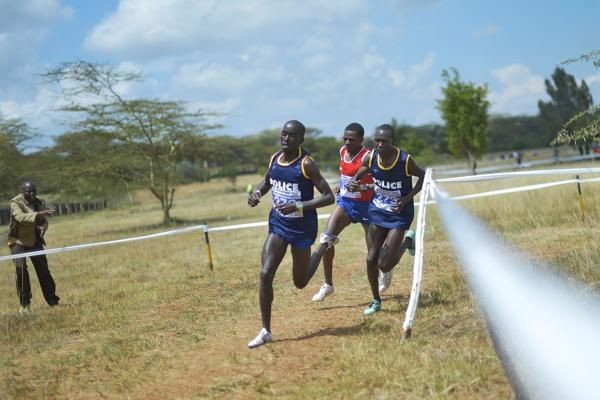
"My target is to win the Boston marathon, which will be my ticket for World championships. As much as I am making my debut, it will not be as easy,” the Iten-based runner said.
If he is to pull off a shock win, the world cross country junior silver medalist will have to take his performance to another level, having encountered mixed fortunes in the half marathon thus far.
In Boston, he will be up against compatriots, former Toronto Marathon champion Benson Kipruto, three- time Amsterdam marathon champion and Wilson Chebet.
Others are Felix Kipkoech, Felix Kiprotich, two-time Paris marathon champion Paul Lonyangata, former world marathon champion Geoffrey Kirui and David Bett, who will also be making his debut.
(09/22/2021) ⚡AMPby Emmanuel Sabuni
Boston Marathon
Among the nation’s oldest athletic clubs, the B.A.A. was established in 1887, and, in 1896, more than half of the U.S. Olympic Team at the first modern games was composed of B.A.A. club members. The Olympic Games provided the inspiration for the first Boston Marathon, which culminated the B.A.A. Games on April 19, 1897. John J. McDermott emerged from a...
more...World record-holder Mary Keitany retires due to back injury
Kenyan running great Mary Keitany announced her retirement on Wednesday (22) after a stellar career which saw her win the London Marathon on three occasions and the New York Marathon four times, as well as triumph at the 2009 World Half Marathon Championships.
Keitany, 39, also still holds the marathon world record for a women-only race, having clocked a stunning 2:17:01 when winning the third of her London Marathon titles in 2017.
“After my successful 2019, when I had some good results including second place in New York, I was hopeful that I could still be very competitive internationally for several more years, even though I am in my late 30s,” said Keitany, who is third on the world all-time list for the marathon.

“However, I’m sad to say, a back injury that I suffered in late 2019 made a decision about my retirement for me. I couldn’t get the treatment I wanted in Europe because of the pandemic-related travel restrictions last year and every time I thought I had got over the injury and started training hard, it became a problem again. So now is the time to say goodbye – if only as an elite runner – to the sport I love so much.”
Keitany first came to global attention in 2007, after local success in Kenya the previous year, with a series of good performances in European half marathons which then earned her a place in the Kenyan team at that year’s World Half Marathon Championships. A silver medal at the 2007 edition of that event, and team gold, was followed by more than a decade among the very best of the world’s road runners, even with breaks in 2008 and 2013 to give birth to her children Jared and Samantha.

Keitany won the 2009 world half marathon title in Birmingham by more than a minute in 1:06:36, at the time the second-fastest mark ever on a record-legal course and an African record. She also led Kenya to the team gold medals.
After finishing third in New York on her marathon debut in 2010, her first major marathon win came in her next race over the classic distance when she triumphed at the 2011 London Marathon and further victories in the British capital came in 2012 and 2017.
She will also be remembered fondly for her three impressive consecutive wins at the New York Marathon between 2014 and 2016 before winning in the Big Apple again in 2018.
Other accolades include setting a world half marathon record of 1:05:50 at the 2011 RAK Half Marathon, fourth place in the London 2012 Olympic Games marathon, and she continues to hold the women-only 25km world best of 1:19:43, set during her triumphant 2017 London Marathon run. She set her half marathon PB of 1:04:55 in 2018, which at the time ranked her third on the world all-time list.
“As for the future, I haven’t fully decided on my plans but I’m looking forward to spending more time with my family,” said Keitany. “My children are currently 13 and eight. In addition, I am involved with some local charitable enterprises.”
(09/22/2021) ⚡AMPby World Athletics
Ras Al Khaimah Half Marathon returns in February next year
Ras Al Khaimah: Ras Al Khaimah, the nature-based Emirate with an exceptional track record for hosting world class adventure and sporting experiences is set to host the return of the fastest half marathon in the world — the Ras Al Khaimah Half Marathon on Friday, Feb.18, 2022.
Returning for its 15th edition, the race welcomes back elite athletes, running enthusiasts and amateurs from across the globe, to participate in the world’s fastest half marathon. Taking place on Marjan Island, the adrenaline-charged event will include four established categories: Half Marathon, Half Marathon Relay for teams of two, 5 km and a 1km fun run. Set to attract a world classfield of top road runners, the Ras Al Khaimah Half Marathon will attract participants of all abilities and ages, with the goal of inspiring young sporting talent and encouraging the wider community to get active.

Raki Phillips, CEO of Ras Al Khaimah Tourism Development Authority, said: “Aligned with the continued recovery of the Emirate, we are delighted to welcome back an incredible line-up of elite athletes, as well as residents and visitors from across the globe, to the Ras Al Khaimah Half Marathon in February 2022.
“We are extremely proud to have hosted this prestigious race for 15 editions, making the Ras Al Khaimah Half Marathon one of the most anticipated events on the global sporting calendar, adding to an expansive portfolio of world-class sporting events hosted in the Emirate.

“We look forward to showcasing our stunning landscape and renowned hospitality to participants and spectators as they enjoy the world’s fastest half marathon,” Phillips added.
CEO of RCS Sports and Events Michele Napoli, said: “We are delighted to announce the new 2022 date for the hugely popular Ras Al Khaimah Half Marathon. Once again, it is an honour to support Ras Al Khaimah Tourism Development Authority as this fantastic race returns to Marjan Island on February 18, 2022.
“The Ras Al Khaimah Half Marathon has undoubtedly grown from strength to strength, with each edition gaining traction on both a regional and international scale, and we cannot wait for participants to experience the highly anticipated 2022 edition. We look forward to announcing our all-new offers for runners shortly, and to welcoming an incredible line-up of elite athletes. The Ras Al Khaimah Half Marathon is guaranteed to be an unforgettable experience for everyone.’’
(09/22/2021) ⚡AMPRak Half Marathon
The Ras Al Khaimah Half Marathon is the 'world's fastest half marathon' because if you take the top 10 fastest times recorded in RAK for men (and the same for women) and find the average (for each) and then do the same with the top ten fastest recorded times across all races (you can reference the IAAF for this), the...
more...Kenenisa Bekele will lead the entries for Sunday’s BMW Berlin Marathon
When Kenenisa Bekele lines up for the BMW Berlin Marathon this weekend (Sept 26) it marks the beginning of an unprecedented period of marathon racing. Due to Covid-related postponements, five of the six Marathon Majors will be staged within a 42-day period. If you’re a fan of the classic 26.2-mile distance, you are in for a feast.
Bekele is clearly excited by the prospect as he is racing in not just one but two of these races. After Berlin on Sunday he will attempt to recover and re-boot before tackling the New York City Marathon in early November.
Here is how the autumn marathon period plays out…
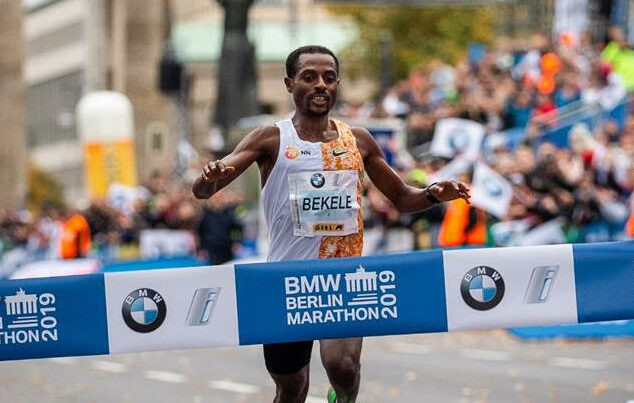
Sept 26 – BerlinOct 3 – LondonOct 10 – ChicagoOct 11 – BostonNov 7 – New York
Tokyo Marathon, which is also one of the Marathon Majors, was due to take place on October 17 too, but has been called off due to the pandemic. However the TCS Amsterdam Marathon is still on October 17 – and this Dutch race often sees fast times.

First comes Berlin, though. Bekele has not raced since March last year and during this time he has seen his world 5000m and 10,000m records fall to Joshua Cheptegei. Last October he was due to race in London but withdrew on the eve of the race with a calf injury. He is now aged 39 but don’t write him off. People thought he was a spent force in 2019 but he came within two seconds of the world record with 2:01:41 in Berlin.
“I will come back with good energy and motivation,” says Bekele. “The last race in Berlin motivated me a lot, so I hope I will fulfil my plan this year.”
Bekele will be among around 25,000 runners in Berlin as mass participation road running emerges from the pandemic. His opposition on Sunday includes Guye Adola, an Ethiopian who ran the world’s fastest ever debut marathon of 2:03:46 in Berlin four years ago but has struggled to improve since.
There is also Eliud Kiptanui of Kenya, who has run 2:05:21, plus a further eight men who have run inside 2:07 such as Philemon Kacheran and Festus Talam of Kenya, Olika Adugna and Tadu Abate of Ethiopia, plus Hidekazu Hijikata of Japan.
Adugna won his debut marathon in Dubai in 2:06:15 while Hijikata took the Lake Biwa Marathon victory earlier this year.
The women’s race, meanwhile, includes Hiwot Gebrekidan, who won the Milan Marathon this year in 2:19:35, plus fellow Ethiopian Shure Demise, together with Kenyans Fancy Chemutai and Purity Rionoripo.
Just seven days after Berlin, the Virgin Money London Marathon takes place with the fields led by women’s world record-holder Brigid Kosgei together with fellow Kenyan Joyciline Jepkosgei and Ethiopians Roza Dereje and Birhane Dibaba.
The men’s race in London features Ethiopians Shura Kitata, Mosinet Geremew and Birhanu Legese plus Kenyans Titus Ekiru and Evans Chebet, whereas Brits like Charlotte Purdue and Jonny Mellor will create plenty of home interest.
Chicago includes world champion Ruth Chepngetich of Kenya in the women’s race alongside American hope Sarah Hall, while another home nation hope, Galen Rupp, takes on Ethiopians Getaneh Molla and Seifu Tura in the men’s race.
(09/21/2021) ⚡AMP
by Athletics Weekly
BMW Berlin Marathon
The story of the BERLIN-MARATHON is a story of the development of road running. When the first BERLIN-MARATHON was started on 13th October 1974 on a minor road next to the stadium of the organisers‘ club SC Charlottenburg Berlin 286 athletes had entered. The first winners were runners from Berlin: Günter Hallas (2:44:53), who still runs the BERLIN-MARATHON today, and...
more...Five Ways to Mentally Prepare for a Race
You’ve put in the training miles. You kept up with the cross training and core work. And you have made it to race with injury free. What else can you do to help make sure you are ready to run a successful race? How about working on your mental strategy? It’s just as important to mentally prepare for a race as it is to do all the other little things.
1.- Prepare for a Race with Visualization.
Before the race spend some time picturing yourself running the race. Imagine yourself at different points in the course. Think about powering through the uphills, being cheered on by the crowds, and crossing the finish line with a smile on your face. Also think about the struggles you may endure and how you will overcome them.

2.- Use Positive Self-Talk as a Mental Strategy.
This is a strategy you can practice before the race (in any area of your life) and the use on race day. I wrote a post a few years ago about “BLUE” thoughts. The idea is that you learn to recognize some of the unhelpful thoughts and then replace them with a true thought. I like to say to myself “what would I tell a friend who was having this negative thought?” Often times it’s easier to help someone else to stay positive than it is for us to do it for ourselves. I gave some more details in examples in that post so if you are interested you should check it out!

3.- Prepare for a Race with Relaxation.
Relaxation is a strategy that can be used in many areas of our lives but there isn’t one strategy that will work for everyone. When I get stressed out I notice the physical symptoms in my body (and also my mind). While the above strategies more directly calm the mind, it’s all connected. So if you do something to relax your body, like deep breathing, yoga, going for a walk, etc. it should also help to relax your mind. The reverse is usually true as well.
I like to focus on my breathing as a way to relax. This is something that can be done in any situation, even during a race. Often times in yoga we hear “come back to your breath”. It’s comforting to know that no matter what you can always come back to your breath. Deep breathing can be helpful for relaxation if you’re in the right situation. (This won’t really work when you are racing). However, practicing these skills leading up to the race will help you to use the strategies you need during the race.
4.- Remember Past Races as a Mental Strategy.
Take some time to reflect back on other races. What went well? What was a struggle for you? Think about times in the race when you struggled mentally. If you could go back in time, what would you do differently? You can even use the visualization technique to imagine yourself getting through that moment more successfully. Remind yourself of the feeling of accomplishment after putting it all out there in a race.
5.- Choose a Mantra to Mentally Prepare for a Race.
Having a mantra will give you something to say to yourself when the race gets challenging. Before the Philadelphia Marathon I chose “Run Strong”because it made me remember to focus on physical and mental strength (good form, smart pacing, and positive thinking). Once you have your mantra you can figure out a creative way to carry it with you on race day. I had a Momentum bracelet made, but you could even just write it on your hand.
Hopefully these strategies will help you to stay mentally strong and focused during the race. Remember that there are a million factors that can come into play on race day and many are out of our control. Focus on the things you can control, and try to let the other stuff go and enjoy the experience!
(09/21/2021) ⚡AMPby Mile by Mile Running
Kenya´s Helah Kiprop eyes podium finish in Boston Marathon after long hiatus
Former Tokyo marathon champion Helah Kiprop says she is going for nothing less than a top finish at October's Boston Marathon on her return from maternity leave.
Kiprop said she is raring to go and hungry for glory despite being out of action for a long time.

The 2015 world marathon silver medalist has been training Iten, Elgeyo Marakwet County under head coach David Marus.
"It has been a while since I competed in a race and this time, I hope I will run well. Three years out of competition is quite a long time but that has not killed my spirit; am still strong. I am training hard to ensure I get good results,” Kiprop said.

In June, she was among hundreds of athletes who ran in the Eldoret City Marathon although the 2014 Seoul Marathon champion said the race was simply a test drive for her body.
“I was at the Eldoret City marathon not for the prize money but to gauge my speed and form. That is why I did not finish the race. From my assessment, I was fit and ready for more major races,” she said.
Kiprop also competed at last year's edition of the Boston Marathon, which was held virtually due to the coronavirus pandemic.
In this year's edition, she will face off with fellow countrywomen, former champion Ednah Kiplagat, Diana Chemtai, Purity Changwony, Caroline Chepkoech and Monica Wanjiru, among others.
She boasts a personal best of 2:27:29 — set at the Seoul Marathon in 2014.
(09/21/2021) ⚡AMPby Emmanuel Sabuni
Boston Marathon
Among the nation’s oldest athletic clubs, the B.A.A. was established in 1887, and, in 1896, more than half of the U.S. Olympic Team at the first modern games was composed of B.A.A. club members. The Olympic Games provided the inspiration for the first Boston Marathon, which culminated the B.A.A. Games on April 19, 1897. John J. McDermott emerged from a...
more...Three years after retirement, Shalane Flanagan will run Berlin, London, Chicago, Boston and one other marathon this fall
Nearly three years after Shalane Flanagan officially retired from elite racing, she’s toeing the line of her marquee event again — not once, but six times in 42 days. With five of the six World Major marathons coming up in the next few weeks, the 16-time national champion will be aiming to run each of them in less than three hours, and then to run a sixth to make up for the postponed Tokyo Marathon.
Because of delays caused by COVID-19, five of the six World Majors are being crammed into a tightly packed fall schedule. Flanagan’s marathon of marathons will start in Berlin on September 26, the same course where she ran her personal best of 2:21:14 in 2014 and became the fourth-fastest American marathon runner of all time.
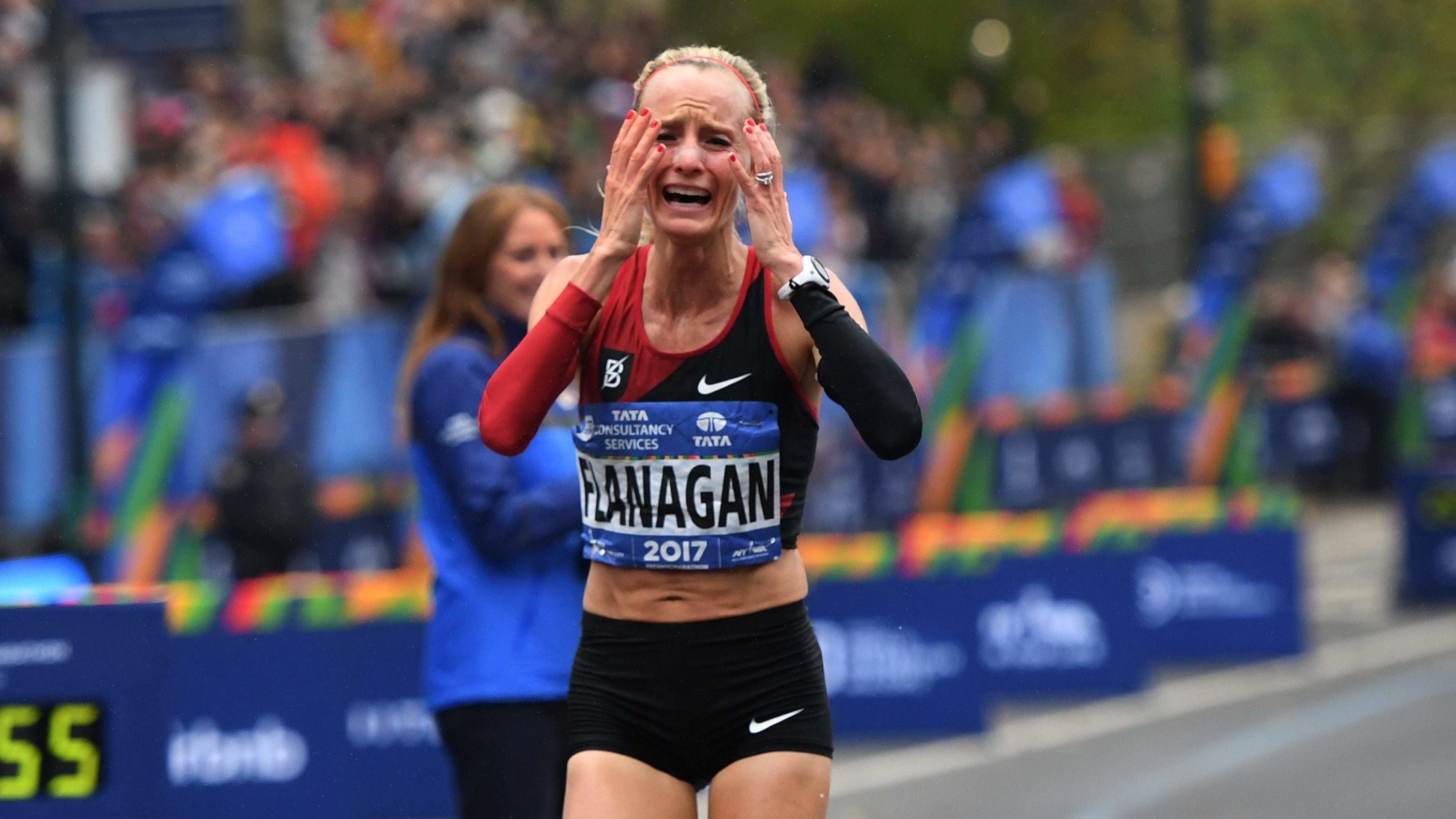
She’ll have one week of recovery before heading to the U.K. to compete in the London Marathon, and from there she’ll return to North America where she’ll run the Chicago Marathon on October 10 and turn around the very next day to run the Boston Marathon on October 11.
The Tokyo Marathon was to be her next race on October 17, but organizers postponed the race again until March 2022. In its place, Flanagan will travel to Portland, Oregon to run her fifth marathon in four weeks.
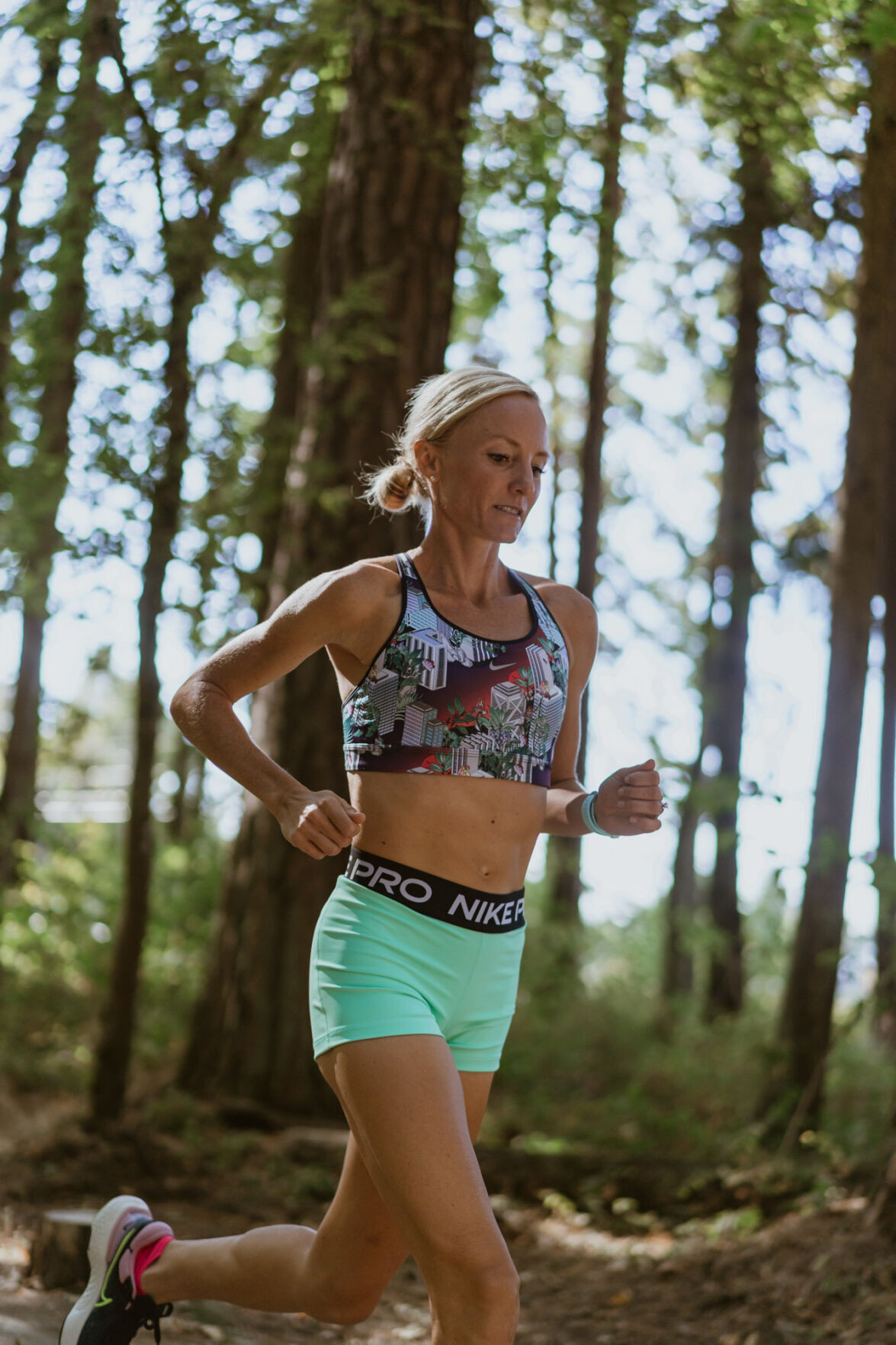
She’ll then have three weeks of recovery before completing her challenge at the New York City Marathon on November 7. New York will be a special place to end her grueling series, since it was there that she became the first American woman to win the race in 40 years in 2017.
Flanagan retired from professional running in 2019, and since then has had two reconstructive knee surgeries, become a coach with the Bowerman Track Club and adopted a baby boy. In an interview with Self, she explained that she’s taken on this challenge as a way to “reunite” with running after retirement and knee surgery.
“I felt the need to set some goals again,” she said. “Realizing this was a once in a lifetime opportunity presenting itself, with six major world marathons in 42 days, I feel like I’m doing it for myself, for my son, and for young women to showcase the connection between mental and physical health and how important of a role athletics can play in your life.”
(09/21/2021) ⚡AMPby Brittany Hambleton
TCS London Marathon
The London Marathon was first run on March 29, 1981 and has been held in the spring of every year since 2010. It is sponsored by Virgin Money and was founded by the former Olympic champion and journalist Chris Brasher and Welsh athlete John Disley. It is organized by Hugh Brasher (son of Chris) as Race Director and Nick Bitel...
more...2021 Berlin marathon to atract 25,000 runners
Berlin Marathon organizers expect around 25,000 runners to take part on Sunday, making it the biggest marathon since the start of the coronavirus pandemic.
The event was cancelled last year because of the global health crisis but returns on the streets of the German capital.

"The time is ripe for us to send a signal to the outside world that we are still a sports metropolis," Juergen Lock, managing director of organiser SCC Events, said.
He expects more than 90 per cent of participants to be either fully vaccinated or to have recovered from a coronavirus infection.

All others must undergo a PCR test no earlier than 48 hours before the start.
Wearing masks in the start and finish areas is mandatory for runners, as well as for all spectators along the 42.195km course.
"All runners can run liberated," Lock said.
With two smaller events in recent weeks including a half marathon, the organizers have gained experience for the big event, which will be held on the same day as the German general election.
The most prominent runner is Ethiopian Kenenisa Bekele.
The 39-year-old missed the world record of Olympic marathon champion Eliud Kipchoge of Kenya by only two seconds in his victory in 2019 in two hours one minute 41 seconds.
Kipchoge set the mark in Berlin in 2018.
The women's field is led by Hiwot Gebrekidan, the Ethiopian who ran a year's best 2:19:35 in Milan.
(09/20/2021) ⚡AMPBMW Berlin Marathon
The story of the BERLIN-MARATHON is a story of the development of road running. When the first BERLIN-MARATHON was started on 13th October 1974 on a minor road next to the stadium of the organisers‘ club SC Charlottenburg Berlin 286 athletes had entered. The first winners were runners from Berlin: Günter Hallas (2:44:53), who still runs the BERLIN-MARATHON today, and...
more...Kenyans Langat Clement Kiprono and Peris Cherono Lagat won the men's and women's Rome Marathon, respectively, on Sunday
A one-year pause due to the coronavirus pandemic didn't have a big impact on the victory stands at the Rome Marathon, with African runners continuing their long dominance of the race on Sunday, which was first run in 1982.
Kenyan Clement Langat Kiprono took the overall championship for the 42.2-kilometer (26.2-mile) race in 2 hours 8 minutes and 23 seconds. Kiprono came in five seconds ahead of Tanzanian Emmanuel Naibei, who finished in 2:08:28, followed by Ethiopian Ulfata Deresa Guleta, who took third in 2:08:42.

Kiprono's compatriot Peris Lagat Cherono won her race by a more comfortable margin, finishing in 2:29:29, well ahead of Judith Jurubet, also from Kenya, who crossed the finish line in 2:30:50, and Jifar Fantu Zewunde of Ethiopia, who finished in 2:32:02.
All told, more than 7,500 runners were on the early-morning starting line in the shadow of Rome's Colosseum. The city's mayor, Virginia Raggi, was the race's ceremonial starter.

Last year's race was canceled due to the coronavirus pandemic, and this year's edition was pushed back from April, its normal spot on the calendar, for the same reason.
Runners who registered for the 2020 race were automatically entered in this year's edition, and race finishers were awarded two medals: one for 2020 and one for 2021.
Kiprono was the fifth consecutive Rome Marathon champion to run under 2 hours and 9 minutes in his victory, but he was still short of the course record of 2:07:17 set by countryman Benjamin Kiptoo in 2009. Cherono was also slower than the course record of 2:22:52 run by Ethiopian Alemu Megertu in 2019, the previous edition of the race.
African runners have won the men's title in 15 consecutive races, starting after Italian Alberico Di Cecco won in 2005, and they have won 12 straight races in the women's division, following the victory of Russian Galina Bogomolova in 2008. Cherono's win broke a six-race streak of victories by Ethiopian runners in the women's division.
(09/20/2021) ⚡AMPby Xinhua News
Run Rome The Marathon
When you run our race you will have the feeling of going back to the past for two thousand years. Back in the history of Rome Caput Mundi, its empire and greatness. Run Rome The Marathon is a journey in the eternal city that will make you fall in love with running and the marathon, forever. The rhythm of your...
more...ASICS and Schneider Electric Marathon de Paris renew partnership until 2025
Since a first partnership agreement signed for the 2009 edition of the Schneider Electric Marathon de Paris, the popular marathon has renewed its contract with ASICS for the third consecutive time. The new partnership will extend until 2025.
In a release, the event organiser noted… ‘A 16-year commitment (while waiting for more!) is a first in the history of the event and the Japanese brand that reaffirms through its loyalty the link it has with France and its capital city.’

ASICS, a leader in the running market, has experienced growth that follows along with the evolution of the premier running race in France. In 2019, 30,000 runners gathered at the start line on the Champs-Elysées, while 65,000 race numbers were sold for the 2020 race that was postponed, then cancelled due to the Covid-19 pandemic.

Since 2009, the event reports that nearly 150,000 runners have trusted ASICS to reach the finish line in Paris, making it the most popular brand.
Over the years a number of initiatives have aimed at accompanying all marathon runners in their challenge. These include: advice on choosing the right equipment, personalized training plans, etc.
(09/20/2021) ⚡AMPSchneider Electric Paris Marathon
The Schneider Electric Marathon de Paris offers a unique opportunity to make the city yours by participating in one of the most prestigious races over the legendary 42.195 km distance. The Schneider Electric Marathon de Paris is now one of the biggest marathons in the world, as much for the size of its field as the performances of its runners....
more...Abu Dhabi Marathon makes return with $303,000 up (Dhs1.11 million) for grabs
Organizer, Abu Dhabi Sports Council (ADSC), and race title sponsor, the Abu Dhabi National Oil Company (ADNOC), have announced the race routes, prize purse and official T-shirt design for the third edition of the Adnoc Abu Dhabi Marathon, set to take place on Nov.26 (Friday).
The announcement took place during a press conference held at the ADNOC Business Center on Sunday, and was attended by Aref Hamad Al Awani, General Secretary of Abu Dhabi Sports Council, Andrea Trabuio, Adnoc Abu Dhabi Marathon Race Director and Kinan Abou Hamdan, Marketing Director of Nike Middle East and Gulf Marketing Group.

There are several race categories available for runners to choose from, including the individual 42.2KM marathon distance, a marathon relay for teams of two, 10KM, 5KM and 2.5KM, as well as a wheelchair race category.
As title sponsor, the marathon reinforces Adnoc’s commitment to elevating the health and wellbeing of the community as the company continues to support the UAE’s efforts to promote healthy lifestyles and achieve UN Sustainable Development Goal #3.

The total prize fund for the 2021 Adnoc Abu Dhabi Marathon is worth $303,000 (Dhs1.11 million) and will be shared across the various categories, with both elite male and female marathon winners taking home $50,000 (Dhs183,500) each.
A bonus cash of $30,000 is also being awarded, should they break the current course records of 2:04:40 and 2:21:01 for the male and female races respectively. Cash prizes of $ 8,500 and $ 11,000 will be awarded to winners of the wheelchair and 10 KM categories respectively.
Awani said: “The third edition of the Adnoc Abu Dhabi Marathon is witnessing a great turnout of more than 4,000 participants, despite the challenges posed by the pandemic. It’s an indication of the keenness and interaction of the Abu Dhabi community to participate in the event and express the extent of the growth and increase of runners in Abu Dhabi in particular, and the UAE in general.
“And with the launch of the upcoming event, Abu Dhabi once again proves its pioneering role in the sports industry, by hosting a large number of sporting events and earning praise for its organisational capabilities and infrastructure.
“We are delighted with the partnership with Adnoc which already embodies its corporate identity and its strategy through its sponsorship and support for the marathon and all global and community sporting events.
“We are also thankful for the presence of the sports brand Nike among the list of sponsors of the Adnoc Abu Dhabi Marathon, as well as for the support of the Department of Community Development, General Command of Abu Dhabi Police, Department of Municipalities and Transport, Tadweer and Al Ain Water.
“Last but not the least, the authorities that worked to uphold all precautionary measures in order to ensure the safety of all participants.” Yaser Saeed Almazrouei, Adnoc Upstream Executive Director, added: “The unveiling of the race routes and prize fund for the third edition of the Adnoc Abu Dhabi Marathon marks an important milestone as we prepare for the return of this unique community event. The size of this year’s fund is testament to Adnoc and the Abu Dhabi Sports Council’s commitment to attracting world-class athletes to the event and encouraging community participation. The marathon is a perfect example of how Adnoc is focused on making a positive and lasting contribution to the wellbeing of our community, through a diverse and integrated program of health and fitness initiatives.”
The 2021 Adnoc Abu Dhabi Marathon will start in front of the iconic Adnoc headquarters, offering direct views of the Founder’s Memorial, while runners participating in the 2.5KM, 5KM and 10KM races will begin in 18th Street.
Following the start gun, runners will head out along the Corniche and loop around Qasr Al Hosn, one of Abu Dhabi’s oldest and most beautiful historical stone buildings.
Participants will then pass the Emirates Heritage Village, home to one of the tallest flagpoles in the world, before making their way behind Marina Mall and up and down King Abdulla Street before returning to the Corniche for a final loop of Qasr Al Hosn.
Marathon runners will cross the finish line in the event village, located in the South Plaza of the Adnoc headquarters Campus, while all other participants will finish in 18th Street, opposite the Adnoc Welcome Center.
(09/20/2021) ⚡AMPADNOC Abu Dhabi Marathon
The Abu Dhabi Marathon is shaping up to being first class marathon for both elite runners and average runners as well. Take in the finest aspects of Abu Dhabi's heritage, modern landmarks and the waters of the Arabian Gulf, at this world-class athletics event, set against the backdrop of the Capital's stunning architecture.The race offered runners of all abilities the...
more...American man celebrates turning 80 by going for 80-mile run
This was the 40th consecutive year that Hoefgen used exercise to celebrate his birthday
Bernie Hoefgen of Eau Claire, Wis. turned 80 and instead of celebrating with a birthday cake, he celebrated the milestone by doing something that not many could do, running 80 miles (130 kilometres).

This was the 40th consecutive year that Hoefgen used extensive exercise to celebrate turning another page on the calendar. The 80-mile journey took him over four days to complete.
In an interview with the Indiana Gazette, Hoefgen said that he began this running tradition when he turned 40 in 1981, as a way to promote physical activity among adults. Although it’s turned into a walk/jog for Hoefgen due to his age, the distance is remarkable.
He usually treks alone and carries his food in a small backpack. He will take the occasional break to eat at a restaurant or hit the convenience store for hydration and snacks.
Hoefgen has been training every day over the past couple of years to prepare for his 80th birthday journey. Each year, he has changed the route but he especially enjoys the trails around Eau Claire.
(09/19/2021) ⚡AMPby Running Magazine
British marathon runners went the distance, as race was 586 metres too long
The error comes four years after the course was measured 146 meters short
Last Sunday, the Brighton Marathon was held in Brighton, England, hosting over 7,000 runners. Despite the route being measured correctly before the start of the race, a cone line was moved over the final stretch, diverting runners to run an extra 586 metres.

After the race, organizers mentioned to runners that there had been a mistake with the course measurements and that it was half a kilometre too long.
In an online press release, event organizer Tom Naylor said, “We are wholly disappointed that this has affected our runners & hope that it hasn’t marred the experience, at what has been a fantastic comeback event after 18 months.”
In the men’s race, Neil McClements overtook the then leader Ollie Garrod 200 metres before the finish line to win the race. Garrod would have won the race if the distance wasn’t incorrect. Despite losing the race over the final extra stretch, Garrod was in good spirits about placing second and congratulated McClements for his victory, saying he won “fair and square”.
Canadian Lauren Reid of Uxbridge, Ont. finished third in the women’s marathon, in 3:09:31. “I knew it was long after I passed the halfway mark three minutes behind the halfway point on my watch,” Reid says. ” I tried to keep my focus on racing, knowing the distance was beyond my control.”
The error comes four years after the Brighton Marathon course was measured 146 metres short. “In the next few weeks, all finishers will be given more information on their times, and that the course length would be adjusted for results,” Naylor said.
(09/19/2021) ⚡AMPby Running Magazine
Brighton Marathon
The Brighton Marathon is one of the UK’s favorite marathons. With stunning coastal scenery in one of the country’s most energetic cities, this is the perfect race for runners with all different levels of experience. The fast and beautiful course of the Brighton Marathon makes this a ‘must do’on any runners list. Come and experience it for yourself over 26.2...
more...Gemechu breaks course record at Copenhagen Half Marathon
sehay Gemechu set a course record while Amedework Walelegn made it an Ethiopian double at the Copenhagen Half Marathon, a World Athletics Elite Label Road Race, on Sunday (19).
Making the most of the flat course in Denmark’s capital city, Gemechu took 52 seconds off her almost two-year-old PB, running a dominant 1:05:08 to improve the course record set by Sifan Hassan in 2018 by seven seconds. Walelegn, meanwhile, won a much closer men's race, holding off a challenge from Kenya’s Keneth Renju to win by two seconds in 59:10.

Running behind her pacemaker Roy Hoornweg, who also paced Yalemzerf Yehualaw to her world half marathon record in Larne last month, Gemechu had her sights on the 1:05:15 race record set by the now double Olympic champion Hassan three years ago, but the big pre-event favourite wasn’t alone in the opening stages. Her fellow Ethiopians Hawi Feysa, Gete Alemayehu and Beyenu Degefa, plus Kenya’s Vivian Kiplagat, joined her in a lead group which went through 5km in 15:16 and by 10km (30:48) the pack was starting to stretch, with Alemayehu having been dropped and Gemechu still to the fore and looking comfortable.
A couple of kilometres later Gemechu, who finished fourth in the 2019 world 5000m final in Doha, had broken away and was running clear ahead of her compatriot Feysa, the 2017 U20 world cross country silver medallist. By 15km Gemechu, now running without her pacemaker, had a 13-second lead ahead of Feysa, with Kiplagat another 22 seconds back. That is how the positions remained to the finish line, but with Gemechu’s advantage having grown to half a minute.
Feysa, who has a 2:23:36 marathon PB from Dubai last year but was making her half marathon debut, finished second in 1:05:41, with Kiplagat clocking 1:06:07 to take 31 seconds off her PB in third. Degefa was fourth (1:08:15) and Ethiopia’s Yitayish Mekonene fifth (1:08:53).
“I was hoping to break my personal best and run close to 65 minutes, and beating Sifan Hassan’s race record of course is something special,” said Gemechu. “I am very happy. It was a bit windy, so I had to work hard.”
The men’s race saw a group of nine athletes, plus pacemaker Abel Sikowo, pass the 5km mark in 13:55 and the 10km point in 28:01. As Sikowo dropped back just before 15km it was the pre-race favourite Walelegn, who claimed bronze at last year’s World Half Marathon Championships in Gdynia, who took control, taking the field through that checkpoint in 42:15.
The podium was decided over the next kilometre, with Walelegn making a move along with Kenya’s Daniel Mateiko and Renju. With around two kilometres remaining, Walelegn tried to break away but with a glance over his shoulder he could see it wasn't enough to lose his rivals. Then it was Renju’s turn to push the pace and while Walelegn stuck close behind him, Mateiko was dropped and the race was down to two.
Covering Renju’s move, Walelegn was determined to take the top spot and with another look over his shoulder at 21km he strode down the final stretch to victory. Renju’s runner-up time of 59:12 was a PB and his first half marathon under the hour, while Mateiko was third in a PB of 59:25. The top four all ran under 60 minutes, with Ethiopia’s Abe Tilahun finishing fourth in a PB of 59:46, while Norway’s Zerei Kbrom, returning to the half marathon for the first time since 2016, ran a more than six-minute PB of 1:00:07 for fifth.
The event incorporated the Danish Championships, with Annah Ritah Nagadya (1:16:49) and Abdi Hakin Ulad (1:03:30) claiming the national titles.
Behind the elite action, the mass event had close to 20,000 entries.
(09/19/2021) ⚡AMPCopenhagen Half Marathon
The Copenhagen Half Marathon was the first road race in Scandinavia and is one of the fastest half marathons in the world. The Copenhagen Half Marathon has been awarded with the International Association of Athletics Federation's (IAAF) most distinguished recognition - the IAAF Road Race Gold Label. Copenhagen Half Marathon was awarded the IAAF Road Race Bronze Label in January...
more...The Anatomy of a Perfect Marathon Taper
5 facts about reducing training load and maintaining fitness as your marathon approaches. Plus, a proven 4-week marathon taper plan.
Fall marathons are looming, and tens of thousands of runners are finally preparing to toe the line to see just what they can do after all these months of waiting. A big piece of success lies in the final stages of preparation where you execute the marathon taper, a stage of training when you back off and try to walk the tightrope between going into the race well-rested, but not so rested that you go stale.

Going stale occasionally happens, but most runners err in the opposite direction by not trusting the marathon taper process, trying to do too much when they should be resting. It’s a mistake that can make the difference between a PR and a disappointment.
Luckily, there are a few basic principles you can remember when the fears we all face about being lazy or missing training tempt you to do too much.
5 Facts About the Marathon Taper
1. Tapering works.
A 2007 study led by Laurent Bosquet, then at the University of Montreal, Canada, found that a taper can speed you up by more than 5.6 percent. That’s the difference between a 3:20 marathon and a 3:31 marathon. Note, however, that 5.6 percent benefit is an extreme case. You shouldn’t expect to get that much, but trust that proper tapering will result in a better time.
2. In the final days, extra training won’t help.
The hay is in the barn and your goal is to rest, while not letting your “training” hay go moldy. It’s too late to try to make up for lost training earlier in your training cycle, and if you try to do that, all you can do is to blow your taper…and with it, your race.
3. The ideal taper comes from reducing volume, but not intensity.
You need to do some speedwork during the taper in order to keep all your energy and neuromuscular systems sharp. This means a mix of everything from strides to aerobic work. What you don’t need is to push any of these to the max.
4. It works best by cutting down progressively, not all at once.
Bosquet’s paper found that the ideal taper eventually cut down total volume by 40-60 percent by the final week, including speed workouts. In the ideal taper, you run as many days a week as you normally do (maybe with one or two extra, judiciously timed, rest days), but reduce volume in everything from workouts to long runs, as well as your weekly total mileage.
5. Don’t sweat it if you make minor errors.
“Let’s say you’re scheduled to go six miles at 7:00 pace,” says Thom Hunt, a former American 10K red-holder who now coaches at Cuyamaca College in San Diego. “If you run 6½ at 6:45, you’re not going to blow the whole thing.” Hunt was talking specifically about 5K/10K tapers but the same applies to the marathon. In fact, it probably doesn’t matter all that much if you get lost on what’s supposed to be an 8-mile run ten days before the race and accidentally wind up running, say, 11 miles. The stress of fretting about the error will probably cost you more than the error itself.
The Four-Week Marathon Taper
You won’t find much talk in the literature about tapers longer than 2-3 weeks. That’s largely, Bosquet says, because it’s hard to get enough runners to consent to tapers longer than 14 days to conduct a meaningful study.
But a 1996 French study of swimmers found benefits from a 28-day taper, something I find very interesting because I’ve long prescribed a four-week marathon taper.
Not that it’s what most people conventionally think of as a taper, because it begins, four weeks out, with an extremely tough workout. It then returns to normal baseline in volume with reduced intensity for one week, followed by a 21-day progressive taper. If you prefer, you could think of it as a final push, followed by a taper.
Here’s how the four-week marathon taper works:
• 28-29 Days Before the Race
On Saturday, even if the race is on Sunday, because there’s another workout next Tuesday, and you need at least three days to recover, do a long run of 20–22 miles, finishing with 13–18 miles at marathon pace. That’s a wide range, I realize; being more specific depends on your experience. For a seasoned marathoner doing at least 70 miles per week on average over the past few months, hold the marathon pace part for 16–18 miles. For lower-mileage runners and new marathoners, drop down to 13. This is not only a major workout, but a critical test of your marathon goal. If you can’t hit your target pace, it probably needs to be adjusted.
• 27-21 Days Before the Race
Workout days:
Tuesday: Do a normal speedwork session, IF you’re recovered from the long/fast run 3 days ago. If sore or fatigued, reduce intensity and or volume.
Friday: Do a tempo run. Normal volume.
Sunday: Go long, reducing intensity to easy. Do 20-22 miles max. The marathon is now 20-21 days away.
Total weekly volume: Normal.
• 20-14 Days Before the Race
Workout days:
Tuesday: Normal speed workout.
Friday: Tempo. Slightly reduced volume (maybe by 10-15 percent).
Sunday: 16 miles, ending with 50-60 percent as many marathon-pace miles as two weeks ago. This should not be super-hard.
Total weekly volume: 10 percent below normal.
• 13-7 Days Before the Race
Workout days:
Tuesday: Normal workout adjusted to about 2/3 of total volume.
Friday: Tempo. Reduced to about half of normal volume.
Sunday: 10-12 easy.
Total weekly volume: At least 20 percent below normal.
• Final week (assuming Sunday race)
Workout days:
Tuesday: 6-8 x 600m @ tempo pace (no faster than 12K pace) with 20-25 sec recovery between reps. Plus, up to 4 x 150m, fast but relaxed. Stop while still turning over quickly without stress.
Wednesday, Thursday, Friday: Two days easy. Take one day off.
Saturday: 20–30 min. easy, with 4 x 100m strides. 20 minutes is enough for most runners to feel warmed up and striding smoothly.
Sunday: Race.
Total weekly volume: For the last 7 days before the race (counting the long run last Sunday), 50 percent of normal.
Other Tapers
Not that this is the only way to do it. Hunt says, “If there was one way, we would have had a form years ago about what to do, and just follow that.” But even top runners with the best coaching follow a variety of tapering patterns.
Lindsey Scherf, for example, who holds the world record for the indoor marathon, does a quite different taper, though the overall effect is remarkably similar. Rather than tapering progressively from 2–3 weeks out, she finds that she’s done best by taking the big drop in mileage (50 percent) three weeks ahead of the race, then returning to 85 percent of normal for the remaining two weeks. “I inject rest, but then return to a non-overtraining routine where I know I’m in a good rhythm,” she says.
The real key, Hunt says, is to allow your body to rest and be physically (and mentally) relaxed, focused, and ready to go on race day. To this end, he stresses that it’s important to make sure that your final long run isn’t too long. “You need to keep it short enough that you’re not breaking down the body.”
And, he says, the key thing is to trust the processes: “Getting a 100 mile per week runner to go down to half of that mentally freaks them out.” Cutting back from 50s to 20s is no less stressful.
“Each athlete is different,” Hunt says. “But you still have to follow the general physiological principles.”
Scherf concurs, adding an interesting note: Try out the taper before race week.
We’ve all been told never to do anything in an important race that we’ve not tested in training. Usually, that’s discussed in terms of nutrition, hydration, footwear, or clothing that might unexpectedly chafe. But why not also apply it to your taper, Sherf suggests, testing it on a less important (and presumably shorter) race beforehand, just to see how your body reacts.
After all, Bosquet’s study found that the ideal taper ranged from a 40 percent to 60 percent cutback. 40 to 60% is also a wide range, so Scherf is onto something when she says you need to find what part of that range works for you. “Not every runner responds the same way,” she says.
The key takeaway from Bosquet’s study, however, is that 40–60% is a lot more than most mileage-obsessed runners want to do. Don’t be one of them: Trust the taper, and run your best marathon.
(09/19/2021) ⚡AMPby Podium Runner
Philemon Kiplimo reigns in 10,000m and Margaret Chelimo destroys the pack at Kip Keino Classic
The 2019 Boston Half Marathon champion Philemon Kiplimo charged from behind before the bell to win the men's 10,000m at the Absa Kip Keino Classic at the Moi International Sports Centre on Saturday.
Kiplimo clocked 28 minutes and 37.96 seconds to triumph, beating Reuben Longosiwa to second place in 28:38.97.

Geoffrey Kiprotich settled third in 28:38.99.

"I am happy to win. I just decided to stay behind the pack to rest my rivals before bursting to the front with the last lap to go and the tactics worked,' said Kiplimo, adding that he was using the race as part of his preparation for a series road races soon.
"I was just trying my speed and it looks good," said Kiplimo.
Elsewhere, World 5,000m silver medalist Margaret Chelimo destroyed the field to win women's 5,000m race. Chelimo took command early to lead with six laps to go and triumphed in 14 minutes and 55.27 seconds.
Eva Cherono came second in 15:12.16 as Tokyo Olympics 5,000m representative Lilian Kasait settled third in 15:17.71.
"It was a good race even though the weather proved heavy," said Chelimo, adding that it was a great way to end her season before focusing on a busy next year.
Chelimo said she will be going for nothing short of victory at the World Athletics Championships next year in Oregon, United States after she claimed silver in 2019 in Doha.
"I plan to work on my speed in the last 800m since that is where my weakness is," explained Chelimo, who cashed on the absence of the defending champion Hellen Obiri to win.
(09/18/2021) ⚡AMPby Ayumba Ayodi
Run Rome Marathon back for 2021 edition
The Acea Run Rome Marathon will take place on Sunday 19 September with a 42-km route beginning and ending at the Colosseum.
The 26th edition of the marathon, which starts at 06.45, is the first such event since the March 2020 race was cancelled due to the covid-19 pandemic.

The 7,500 participants registered for the marathon - all of whom require a Green Pass - include 2,200 runners from more than 60 countries around the world.

After Italy, the country with the most participants is France with 300 runners, Britain with 266 and the US with 202.
The marathon route takes in some of the city's best known landmarks including the Circus Maximus, St Peter's, Piazza del Popolo and Piazza di Spagna, with a race village set up at the Terme di Caracalla stadium.
The event will result in road closures, the re-routing of bus lines and the temporary closure of the Colosseo metro station.
(09/18/2021) ⚡AMPRun Rome The Marathon
When you run our race you will have the feeling of going back to the past for two thousand years. Back in the history of Rome Caput Mundi, its empire and greatness. Run Rome The Marathon is a journey in the eternal city that will make you fall in love with running and the marathon, forever. The rhythm of your...
more...Moscow Marathon postponed until 2022 amid COVID-19 restrictions
The Moscow Marathon has been postponed until 2022 amid ongoing COVID-19 restrictions in the Russian capital.
The event had been scheduled to take place on September 26.

Organisers have confirmed that "due to the epidemiological situation, the city is forced not to hold mass events", resulting in the postponement of the event.
Under current restrictions in Moscow, there is a temporary ban on concerts, entertainment and sports events involving more than 500 people.
"Throughout the season, we fight for our every start and do everything possible to make the planned races take place," said race director Dmitry Tarasov, according to the Russian state news agency TASS.
"But we live in a situation where circumstances can change every day.
"These changes concern not only sports, but also our daily life.
"The team of the running community was preparing a large-scale sports event for you, but this year it will not take place.
"We are grateful to everyone who supports us and understands the events that are taking place at the moment.
"We are looking forward to holding all the events planned until the end of the year, and we will be happy to meet you at the start."
The event would have been the ninth staging of the Moscow Marathon, which was first held in 2013.
The race takes runners across the Crimean bridge, through Tverskaya Street and Teatralniy Proezd to the walls of the Kremlin.
Organisers say the route features major landmarks in the city, including the Moscow City skyscrapers, four of the seven Stalinist skyscrapers and the Bolshoi Theater.
Despite the COVID-19 pandemic, the event took place last year.
Organisers say the event will take place next year, but remain hopeful of holding upcoming events until the end of 2021.
This includes the fast dog and fox mountain cross-country events, which are scheduled for October 2 and 3, as well as the night run on October 9.
The Moscow Half Marathon is still scheduled to take place on October 24.
(09/18/2021) ⚡AMPMoscow Marathon
The Absolute Moscow Marathon is the biggest event of its kind in Russia that also attracts runners from all over the world. It is a citywide celebration of sports, camaraderie and healthy lifestyle. For the last 5 years the event has grown from a small local race to an important international running event. Over 20 000 participants from all over...
more...1500m Star Cole Hocker Turns Professional, Signs With Nike
After a season in which he won three NCAA titles and a US title and finished sixth in the Olympic 1500-meter final, star American miler Cole Hocker announced on Monday that he has forfeited the remainder of his NCAA eligibility and signed a professional contract with Nike. Hocker will be represented by agent Ray Flynn.
The 20-year-old Hocker, the 2018 Foot Locker Cross Country champion as a high schooler, burst onto the scene in 2021 during his second season at the University of Oregon. Indoors, he ran 3:50.55 for the mile — #2 all-time by a collegian — and won NCAA titles in the mile and 3000 meters in the span of an hour, setting a meet record of 3:53.71 in the former. Hocker was even better outdoors, winning the NCAA outdoor title at 1500 meters on his home track in Eugene. Sixteen days later, he returned to Hayward Field and won the US 1500-meter title in a memorable duel with 2016 Olympic champion Matthew Centrowitz. Then, in his first Olympics, Hocker ran personal bests in the semifinal (3:33.87) and final (3:31.40) to finish sixth overall.
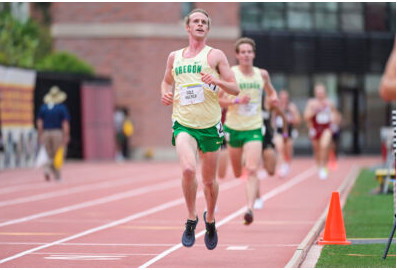
by Let’s Run
The Science Of Why Consistency Creates Fitness (Even 10 Minutes At A Time)
There are 4 physiological reasons why consistent runs have an oversized effect on long-term growth. On a tough day, even 10 or 20 minutes can be plenty to spur progress.
In 2006, a few months after quitting football in college, I went for the first endurance run of my adult life. I had big dreams! During that downtime between sports, I read training books and message boards, planning my next athletic steps. It was like “The Decision” by LeBron James when he announced he was taking his talents to South Beach–I was going to take whatever talents I had to running.

Maybe I’d walk onto the track team. Maybe I’d win some races! Running watched my announcement on ESPN, and as I put on my old basketball shorts and laced up my new Nikes, it responded like only running can:
“Go screw yourself. This is hard.”
I got a few minutes up the driveway before I sputtered to a stop. My calves were sore for days. Those dreams were going to need to be on a delayed fuse.
But something started on that run, deep in my physiology. The next one a few days later was a bit easier. It was still impossible and terrible, but at least I could walk the next day. Mile or two by mile or two, I got a bit stronger and a bit faster. In those training books, I had read about weekly miles and workouts and all of these complex training principles that made me miss the forest through the trees.
I didn’t need to have a forest on day 1, or even on day 1000. I just needed saplings. Hundreds of saplings. Thousands of saplings! It’s all about those bomb-ass saplings!
For me, a little over 2000 days later, it led to an overnight success at the 2012 US 10k Championships, where I won and was interviewed by Alex Kurt for Trail Runner Magazine. Those little runs led to adaptations which supported bigger runs, which supported bigger risks, and one of those risks led to a post-race interview with this magazine. A few years later, Alex helped me find a writing opportunity, and that writing opportunity is why you are reading this article today. Give a sapling 15 years, and very cool things can happen.
We see that process over and over in coaching.
An athlete will break out onto the international stage, with an overnight success that was thousands of days in the making. To paraphrase Once A Runner, everyone wants to know The Secret. The unglamorous answer is that there are two ingredients that really matter: consistency and time. Remove the molecules on the bottoms of many pairs of training shoes, one little run at a time.
Those first runs I did were 10 to 20 minutes, and I owe them everything. Even now, I’ll often do very short runs as doubles, or on busy days when nothing else works. Seeing how these short runs can support long-term adaptation, my wife/co-coach Megan and I made a rule for our athletes: “give us 10 minutes” (we talk about it on our podcast here). If there’s a run on the plan, even when life happens, try to do a short jog.
It can be up and down the stairs in your work clothes while preparing for a trial, barefoot around the house on a smoky day with no treadmill available, a lap of the block when anxiety makes it impossible to think about more. Whatever the cause of the compressed run, it’s not a mental trick. We aren’t saying: “Maybe they’ll actually do the full run after they get out there.” We definitely aren’t adding: “Mwhahahahaha!”
For us, it’s all about the physiology of how an athlete can adapt to frequent, consistent running over time. There are four general mechanisms we focus on.
One: Musculoskeletal adaptations
In the endurance world, running is unique because of impact forces. Each step involves the absorption and transmission of multiple times body weight! Don’t think about that too hard, or you’ll start having erotic dreams about joint pills.
That force causes massive stress on bones, tendons, ligaments, and muscles. With bones, osteoblasts and osteoclasts adapt to each minor stress. But the line between a stress reaction and healthy adaptation is blurry. For example, a 2006 study found that 9 of 21 collegiate runners measured had asymptomatic tibial stress reactions on MRI, with no correlation to subsequent clinical outcomes. In other words, the constant force absorption of running created a background stressor on the bone that likely made it bounce back stronger for those athletes. But it easily could have resulted in full-blown stress fractures too. Consistent, low-level stress helps the body manage these adaptation processes without needing a punch card at the local MRI joint.
Soft tissues work the same way, with each low-level stress spurring strengthening processes. Muscle fiber growth and recruitment is enhanced by consistent stress/recovery cycles, and when the body is transmitting so many tons in such a short time, those stresses don’t need to be long to encourage adaptation. If hypothetical runner A goes out for 1 hour 3 times per week and runner B does 30 minutes 6 times per week, I think runner B not only stays healthier, but goes way faster too, even at longer distances.
Two: Aerobic and metabolic adaptations
A major friction point for aerobic development is the transportation of oxygen-rich red blood cells to working muscles via capillaries. Running induces angiogenesis, or increased capillarization. Studies on mice involving deep muscle biopsies show that the adaptations can happen with relatively short bouts of exercise on the most adorable mouse treadmills, and the adaptations start to reverse with significant downtime. It works similarly in humans, but there aren’t too many volunteers for the study protocols. While lots of aerobic time is good, any amount can keep those adaptations going. That’s why 10 or 20 minutes can be so much more valuable than taking a zero, especially over longer time horizons.
Simultaneously, after consistent stress, cardiac output increases, with blood volume increasing by up to 20%. Those adaptations don’t take much time investment either, with the bulk of the changes happening relatively early in runs. Running also jump-starts the metabolic system, increasing metabolic rate at rest and reducing it during activity, with improved fat oxidation from repeated endurance stress.
Endurance athletes are sometimes hurt by the attitude that “if some is good, more is better.” That impulse may lead to athletes getting into endurance in the first place, because why else pursue these wild feats of force absorption and aerobic demand? But I think that the statement implies a faulty adaptation relationship. If more is better, then each subsequent mile is more valuable than the one before it, right?
That’s likely untrue. Each subsequent mile is probably slightly less valuable than the one before it from an adaptation perspective, with rapid initial stress causing a boatload of early adaptations. A more accurate physiological description might be: “if some is good, more isn’t quite as good as a per-unit measure, but it will accumulate on top of the good as long as an athlete avoids overstress.” I am not fun at parties.
Three: Neuromuscular and biomechanical adaptations
The nervous system is wild. Through an immensely complex layering of voluntary and involuntary signals, the brain coordinates running, playing the piano, and masturbation, sometimes in sequence with transition areas if you don’t understand all the rules to triathlon. And it’s not just coordinating movements, but also determining how an athlete perceives effort, responds to stress, and adapts over longer-term cycles. It’s not all in our heads, but a lot of it is, just not in a way we always control.
With consistent training stress, running economy improves dramatically as a given output takes less energy. That’s what happened to me when I first started. I was able to get faster while going longer and using less energy because the nervous system interacted with the musculoskeletal and aerobic systems to make running more efficient. That’s a journey every runner faces at first, and it’s so daunting because the simple act of running is actually very, very complex. Whether it’s running or dancing, repetition is a key element for nervous system changes.
Consistent reinforcement is key, and even short runs do the trick. Add some intensity like hill strides, and running economy can go through the roof relatively quickly.
Four: Epigenetic and cellular-response adaptations
Genetics is like being dealt a hand of cards. Epigenetics is finding out that it’s you’re working with a special deck, where you can swipe a jack into an ace, or a heart into a spade. Environment and behavior influence the expression of our underlying genetic codes, with extra-long-term changes likely stemming from weakly understood interactions at levels way, way smaller than cells.
How can we determine our genetics? Take a spit test and wait a few decades as the algorithms determine what base pairs are generally associated with athletic performance.
How do we determine our epigenetics? Run consistently for thousands of days and see what happens.
While we are probably not that far from being able to correlate complex individual skills to genetic predispositions, it will be impossible to do with certainty for the foreseeable future because of the murky world of epigenetic interactions. Small, consistent stimuli may help turn some of those epigenetic switches toward endurance. That could explain how athletes can undergo such stunning changes over time (like my own personal change from a bench-pressing football player to a feather-pressing mountain runner).
Throw in other uncertain variables, like endocrine system changes and protein expression shifts. Then mix all of that with the psychology of habit formation, goal-setting, and time management.
Put all of that together, and I am still not sure the exact best way to find your ultimate potential. But I know it involves the consistent accumulation of thousands of running days.
And 10 minutes can get you one day closer.
(09/18/2021) ⚡AMPby Trail Runner Magazine
World Athletics Cross Country Championships in Bathurst postponed until 2023
World Athletics and the local organising committee (LOC) for the World Athletics Cross Country Championships Bathurst 2022 have agreed to postpone the championships, which was scheduled to be held in Bathurst, Australia on 19 February 2022.
The event will now take place on Saturday 18 February 2023 in Bathurst.

The postponement is due to the biosecurity measures and travel restrictions currently in place to prevent the spread of Covid-19 in Australia. Australian borders are closed to international visitors.
“Athletics Australia and the LOC are delighted that World Athletics and its partners have agreed to the postponement, which allows us to plan and deliver a world-class celebration of cross country running in February 2023. This is one of the most exciting athletics events in the world and the iconic course at Mount Panorama will see some incredible racing,” said LOC Co-Chair and Athletics Australia Board Member Jill Davies.
“We would like to thank World Athletics and the New South Wales Government for their continued confidence in our ability to deliver a world-class event in February 2023. We will continue to work hard over the next year to be ready to welcome the world’s best cross-country athletes and athletics fans to Bathurst for a global celebration of cross country running.”
The World Athletics Cross Country Championships is regarded as the toughest race on the calendar, combining the world’s greatest distance runners and challenging terrain to create a unique spectacle in sport. The 2023 event will be the 44th edition of these storied championships and will welcome more than 550 elite athletes from more than 60 countries to the famed Mount Panorama venue at Bathurst.
“We’re looking forward to hosting the World Athletics Cross Country Championships in 2023,” said Mayor Ian North of Bathurst Regional Council.
“Mount Panorama is a world-famous international racing track venue, attracting competitors from across the globe and is the perfect backdrop for the most important cross-country event in the world.
World Athletics and the LOC are committed to the responsible planning and delivery of the event, which includes ensuring that athletes from all international federations are able to participate and enjoy an experience that is befitting of a World Athletics Series event. The health and safety of the entire running community and the host region is at the forefront of this postponement. While it is acknowledged that international events are currently scheduled for early 2022 in Australia, the 14-day quarantine requirements for international visitors to Australia are not practical for a one-day event.
The World Athletics Cross Country Championship Bathurst 2023 will comprise the U20 men’s (8km) and women’s (6km) races, the universal mixed relay (8km) and the senior individual men’s and women’s races (10km). These World Championship events will be supported by a series of mass participation races.
Information regarding ongoing event planning, including ticket sales, course information, mass participation events and entertainment, will be provided regularly on the event website and social media channels.
(09/18/2021) ⚡AMP
by World Athletics
Tips To Finish Strong In Running Races
Most runners don't expect a podium finish when they participate in a running race. But that doesn't mean finishing strong doesn't matter. It's satisfying to feel fast and steady when you cross the finish line.
But often, we lose steam and end the race gasping for breath and feeling spent. So how do you train to gain speed and finish fast? Use these tips to improve your finishing kick and feel confident at the end of your races.

Tips to Improve Your Race Finish
Regardless of your experience in the sport, every runner wants to feel proud of their race-day accomplishments. These training strategies are used by athletes of all levels to improve speed and endurance so you finish with confidence.

Practice Finishing Fast
Practice running negative splits during some of your runs. A split is a time it takes you to run a specific distance. For example, if you run a mile in nine minutes, your split time is 9:00. A negative split is a split time that is faster than the previous split time.
For example, when you run negative splits during a three-mile run, your first split (mile) might be 9:00. As you continue to run, increase your speed just slightly so that you finish your next mile in slightly less time. For example, if you reach mile two at 17:55, that means that your second mile split was 8:55. You might try to increase speed again to 8:50 for the last mile, finishing the workout in 26:45 with negative splits.
Running negative splits can be tricky for a newer runner. If you have less experience, you might want to focus on running consistent splits first (meaning that each time you run the distance, your time stays the same).
Once you know what a reasonable split time is, then focus on negative splits. Complete your first split at a fast but manageable speed. Then increase your speed on subsequent splits so that your last split is your hardest and fastest.
Improve Mental Toughness
While it might sound easier said than done, learning to tolerate physical discomfort to reach your goals can have a big impact on your ability to finish strong on race day. There are specific strategies you can use to boost your mental toughness.
On your training runs, practice framing each challenge as an opportunity to improve. Self-dialogue is one way to do this. Your internal self-talk can make a big difference in your ability to withstand difficult tasks.
For example, if you often quit long runs before you reach your goal mileage, you may have a habit of practicing self-talk where you list the reasons why quitting makes sense.
Instead, use the internal dialogue to remind yourself that finishing your miles improves your physical and mental endurance. Picture yourself crossing the finish line at your next race, proud of the training miles you put in to get there.
You can even practice this technique on race day. Repeat a mantra to yourself that helps push you through to the finish.
There are also other methods that will help boost mental toughness. You might try to focus on intrinsic goals, learn to ignore distractions on your runs, and practice overcoming running challenges.
For example, include speed work in your training to improve strength and confidence. Doing a few miles of your long runs at race pace is another way to build your confidence and strength.
Run Hills
Doing hill repeats will make you stronger, as well as improve your running efficiency and increase your lactate threshold. Hill repeats are exactly what they sound like. You choose a hill—or a series of hills—and run up the incline several times.
For example, you might have a hill in your neighborhood that is roughly 200 meters in length with a steep incline. After a short warm-up, start at the base of the hill and run up and over the crest of the hill at a challenging pace. Then turn around and slowly jog to the bottom, take a short break and repeat.
Runners might complete six, eight, or more hill repeats to build strength and endurance. The training means you'll feel a lot more confident and strong in the home stretch of your race. Once you've built an endurance base in your running program, you can incorporate hill training once or twice each week to gain benefits.
Increase Strength and Power
Tired, sore muscles can derail a strong finish. In the final stretch, your muscles are fatigued, but they still need to work hard to cross the mat.
One of the smartest ways to improve muscular strength and power is to include strength training in your weekly workout schedule. But don't worry, you don't necessarily have to go to the weight room.
Body weight exercises force you to use large muscles at the same time. Incorporate exercises like lunges, or squats at the end of your runs. You might also practice plyometric drills, such as high knees or skipping, into your training to build strength and explosive power.
Find Your Next Gear
Do you do all your training runs and races at a consistent pace? Many runners do. While consistency can be good, there comes a point at races when you don't have to hold back anymore. You should find your next gear and increase speed for a strong finish.
The tricky part of this strategy, however, is finding your sweet spot. The place where you should pick up the pace is different for everyone. It might also depend on the distance of the race. For example, you might have more energy to sprint to the finish after a 5K rather than a marathon.
During your tempo runs, practice picking up the pace at different distances from your finish spot. Use your training journal to jot down the distance where you increased speed and add notes about whether or not you were able to finish and if you had energy at the end. If you had a bit of energy when you completed the run, try picking up the pace sooner next time.
If you've done some training to run faster, then it will easier to get into gear with confidence on race day.
(09/17/2021) ⚡AMPby VeryWell Fit
CAS releases official report on Salazar ban
Reports on Wednesday announced the Court of Arbitration for Sport (CAS) had upheld the four-year suspension imposed on former Nike Oregon Project coach Alberto Salazar and former team endocrinologist, Dr. Jeffrey Brown for doping violations, and less than 24 hours later the official CAS report has been released.
In its report, the CAS ruled that Salazar had committed three anti-doping rule violations, including possession of testosterone, complicity in Brown’s administration of a prohibited method and tampering with the doping control process with respect to the issue of L-carnitine infusions/syringes. Similarly, Brown was charged with four violations, including complicity in Salazar’s possession of testosterone, trafficking of testosterone to Salazar, administration of a prohibited method and tampering with the doping control process.

The investigation into Salazar and the NOP began in 2015 when a BBC Panorama documentary entitled “Catch Me If You Can” alleged the coach used prescription drugs and therapeutic use exemptions (TUEs) to push the boundaries of performance.
The film interviewed former NOP athlete Kara Goucher and former coach Steve Magness, who described the experiments Salazar performed to determine exactly how much testosterone cream could be applied to an athlete’s skin without triggering a positive test. An experiment was also done to test a rapid-acting (and illegal, under WADA rules) infusion of a supplement known to boost the body’s L-carnitine levels, which in turn helps the body convert fat to energy.

In 2017, a leaked U.S. Anti-Doping Agency (USADA) report from 2016 indicated that Salazar had been giving his athletes, including Sir Mo Farah, the amino acid L-carnitine, via an IV drip. L-carnitine is not a banned substance, but infusions of more than 50 mL in the span of six hours are prohibited, and reports claimed the coach “almost certainly” broke those rules.
Throughout the process, Salazar has continued to deny the allegations, and none of his former athletes, including Farah, Galen Rupp, Sifan Hassan, Matthew Centrowitz and Canada’s Cam Levins have ever tested positive for illegal substances, which the CAS notes in its report.
It also acknowledged that the way in which USADA’s investigation was conducted was “out of proportion and excessive when compared to the severity and consequences of the ADRVs [anti-doping rule violations] that have been established,” yet it still upheld the bans: “the Panel was satisfied that the rules have been properly applied, and that, on the basis of the ADRV’s found by the CAS Panel, the sanctions have been determined in accordance with the relevant version of the WADC.”
(09/17/2021) ⚡AMPby Brittany Hambleton
Calgary Marathon to host 4,000 runners this weekend
On Sunday, Sept. 19, the Calgary Marathon will host the largest Canadian race since the pandemic.
After more than two years without an in-person event, the race will return with a 50K, marathon, half-marathon, 10K and 5K races. 4,000 runners are registered across the five races with more than 1,000 runners starting in the 10K and half marathon.

Right now, Alberta is in the midst of the fourth wave of COVID-19, reporting 1,600 new cases on Sept. 15, in addition to the 11,500 active cases across the province. A province-wide state of emergency was issued earlier this week, but there are no restrictions on outdoor events.
The race published a statement to social media earlier today. “We are moving forward with plans to host the 2021 Calgary Marathon this Sunday, September 19th,” said race officials. “The race worked with health officials to ensure the safest possible event for participants, staff and volunteers.”

“Our plan isn’t to break the rules or offer a world-class event. This is a restricted safe event to celebrate personal accomplishment and achieve fundraising,” says race director Kirsten Fleming. “Our policies were already in place to meet the provincial guidelines set by the Alberta government.”
“We have worked with Alberta Health to ensure that this event is run safely. All aspects of the race will be held outdoors (besides race kit pickup), with no pre-or post-race celebrations,” says Fleming. Precautions will include masking at the start and finish lines, and at least six feet of separation between runners, in their corrals.
A live broadcast of the event will be streamed online to minimize the number of spectators on the course. Spectators are also welcome to watch at the finish line of Stampede Park, which seats 17,000.
The Calgary Marathon offers a virtual race option, which 1,000 runners have chosen to participate in from across the country.
(09/17/2021) ⚡AMPby Marley Dickinson
Scotiabank Calgary Marathon
This is Canada's oldest marathon, Canadians and runners from around the world love this race, consistently voting in the Best Road Race in Alberta. There is a 50k, full-marathon, half-marathon, 10k, 5k family walk/run and kids races. You expect the route to be packed with participants and enthusiastic spectators. ...
more...Janeth Jepkosgei is nurturing young runners in Kenya
For what she is doing for young runners and the community, Janeth Jepkosgei remains a heroine even after changing her career from an athlete to a coach and mentor.
“I am doing this because of the love I have for running and for the athletes. Running changed my life in a big way. I find great joy in nurturing and guiding young runners and in seeing them begin to excel in their careers as well,” said 2007 world 800m champion Jepkosgei, referring to the numerous selfless contributions she has made to support young runners from different levels and backgrounds and the training camps she has set up to do so.

“For me to become a successful runner, I had to go through a number of good people in my life that helped me, including some of my relatives, my first coach Paul Ereng and later on, coach Claudio Berardelli. I want to be able to give out the same help I received and change lives as well.”
Jepkosgei recalled one incident that moved her to tears, when a young talented runner they had identified attended camp with hardly any belongings.

“The runner came into the camp with one half of an old blanket that she had cut in two pieces and left the other half for her mother to use at home. Eunice Sum (the 2013 world 800m champion) immediately rushed to town and came back with some new bedding for the young runner,” she said.
Around two and half kilometres along the Kapsabet to Nandi Hills road lies some of the most prime lands surrounded by beautiful and evergreen landscapes. Land here could easily be turned into a tea farm, a real estate, a big hotel, a hospital, or anything, given its proximity to town and other social amenities in the area. This is where Jepkosgei’s camp is situated.
Arriving at the camp, which features a big house on the green and a serene environment that Jepkosgei has given out freely to 20 young runners to use for their accommodation, plus a van that takes them to the track facilities and on some of their long runs, there arose a burning question: Why did she decide to establish a free camp for the young runners?
From the way she interacted with the runners, who were clearly elated to see her arrive, one could have easily mistaken her for being just another random runner in the camp as they exchanged a few greetings and some light moments.
Besides this camp, Jepkosgei is also involved with other runners of different levels in different places, including a school holiday camp that hosts and trains around 86 runners when schools close. There are a number of senior runners who went through her hands to the level they are now, and who are still closely connected with her in their training and in guiding the young runners. They include Sum, 2019 world 5000m silver medallist Margaret Kipkemboi and 2013 world 5000m silver medallist Mercy Cherono, among others.
The results from the recent World Athletics U20 Championships in Nairobi were great news and a great motivation for Jepkosgei and the young runners in the camp to aim for better things in the future. Four runners in the camp qualified for the event and three of them won medals. Emmanuel Wanyonyi won gold in the men’s 800m, Sylvia Chelangat claimed bronze in the women’s 400m and Levy Kibet achieved another bronze in the men’s 5000m. If the camp had entered itself as an individual country, it would have placed joint 15th out of the 114 teams that participated.
Jepkosgei, however, is not letting the one-time victories distract them from focusing on the future. She likes to see patience, long-term continuous progress and success in her runners.
Wanyonyi, who ran an impressive 800m race in Kasarani last month to register a championship record and personal best of 1:43.76, is clearly already a good student of Jepkosgei and he explained how his main focus now is on winning the Olympic title at the Paris Games in 2024.
“Both Wanyonyi and Chelangat seem to have great mindsets that will take them far. Despite not coming from a family or a region that has a history in running, Wanyonyi is already special in showing that talents don’t have to come from a particular region or tribe. Chelangat on her part is specialising in the 400m, which is not a common event among the Kenyan stars,” Jepkosgei said.
While focusing more on coaching the young runners, Jepkosgei still works closely with her former coach, Berardelli, in exchanging notes on how best to guide them. She also has an assistant coach, Hillary Lelei, who is usually stationed at the camp.
“With my past experience as a runner and the working relationship I still have with my former coach, I believe I have what it takes to guide these runners to reach their full potential. But it still is a continuous learning experience. I am learning that it is not obvious that whatever worked for me will work for others, that different training methods may apply differently to different runners,” she said.
“I believe that we need more female coaches in Kenya who can understand and handle young girls well. There are some issues that the girls may feel more comfortable sharing with a female coach than with a male coach.”
(09/17/2021) ⚡AMPby World Athletics
Nigerian sprinter Blessing Okagbare loses appeal, begins four-year ban over banned drugs, but she may return before Paris 2024 Olympics
Blessing Okagbare, may have lost her battle to upturn the suspension placed on her by World Athletics (WA) after failing an out-of-competition test.
The U.S.-based sprinter was thrown out of the Tokyo Olympics Games on the eve of the semifinals of the women’s 100m after testing positive for human growth hormone. The Athletics Integrity Unit (AIU) revealed then that Okagbare failed an out-of-competition test taken on July 19. She appealed against the suspension immediately, insisting on seeing the result of her B Sample.

The Guardian learnt yesterday that Okagbare, a medallist at the Beijing 2008 Olympics, was allegedly handed four-year ban after the result of her B Sample came out with the same result.
“Okagbare started her four-year ban long ago,” a source close to World Athletics (WA) said in a chat with The Guardian. “It is just unfortunate Blessing Okagbare found herself in this mess. When the result of her A Sample came out, Okagbare had the option of accepting it, which could have seen her ban reduced to two or three years, but she insisted on her B Sample. I pity her though, but WA wants all athletes to compete and win clean. Okagbare’s ban may elapse before the Paris 2024 Olympics,” the official stated.

Okagbare had won her heat on Friday (July 30), and was meant to compete in the women’s 100 metres semifinals the next day, when the Athletics Integrity Unit (AIU) officially announced her suspension in the morning.
The AIU explained then that the Growth Hormone is a non-specified substance on the 2021 World Anti-Doping Agency (WADA) prohibited list, and a provisional suspension on Okagbare was mandatory following an adverse analytical finding for such substance under the World Athletics anti-doping rules.
“The WADA-accredited laboratory that analysed the sample notified the AIU of the adverse analytical finding at midday Central European Time on Friday, July 30.
“The athlete was notified of the adverse analytical finding and of her provisional suspension this morning in Tokyo.”
Efforts to speak with Blessing Okagbare were unsuccessful yesterday.
(09/16/2021) ⚡AMPby Gowon Akpodonor
2021 Marine Corps Marathon live event sells out
More than 13,000 runners from all 50 US states and the District of Columbia are now set to run live during Marine Corps Marathon (MCM) Weekend.
The reduced number of participants is part of the COVID-19 precautions taken by the Marine Corps Marathon Organization (MCMO) to safely execute a live event for runners in 2021.
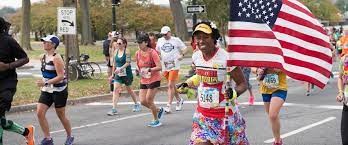
Runners ranging from ages 7 to 86 in 28 countries around the world will be running the popular MCM events live on October 31. All participants who complete the live event will receive the official event shirt, a commemorative bib, a personalized digital finisher certificate and an impressive finisher medal. Runners will also have access to a digital event program, Track your Runner and MapTrack.

“This year marks the 46th anniversary of the race and we couldn’t be more excited to host the live event on Halloween,” said Rick Nealis, director of MCMO. “Coming out of the pandemic, this will be a treat, not a trick. Runners enjoy yourselves, be strong, adapt and overcome whether you run live or virtually.”
Virtual entries are still available for the 46th MCM, MCM50K and MCM10K. Interested participants can register here. Runners previously registered for any of the MCM Weekend events can still secure the MCM Trifecta by entering the other two virtually. This challenge rewards finishers with a stunning challenge coin in addition to the corresponding finisher medal.
(09/15/2021) ⚡AMPMarine Corps Marathon
Recognized for impeccable organization on a scenic course managed by the US Marines in Arlington, VA and the nation's capital, the Marine Corps Marathon is one of the largest marathons in the US and the world. Known as 'the best marathon for beginners,' the MCM is largest marathon in the world that doesn't offer prize money, earning its nickname, “The...
more...YCMA is Holding their 43rd Annual Whiskey Row Marathon
Get ready to run! Last year, many were “tough enough” to do the virtual marathon. Now, it’s time to put your feet to the pavement instead of hands to the keyboard and prove it. On October 9, 2021, the James Family Prescott YMCA presents the 43rd annual Whiskey Row Marathon – the oldest continuously run marathon in Arizona and one of the toughest in the U.S. The 43rd annual Whiskey Row Marathon is proudly sponsored by Dignity Health Medical Regional Medical Center.
In the late 1800s, booze poured freely down Prescott’s Montezuma Street, which came to be known as Whiskey Row. Now in 2018, Montezuma Street hosts a slightly healthier activity, the Whiskey Row Marathon and its associated Half Marathon, 10K, 5K, and a .3 Mile Dash.
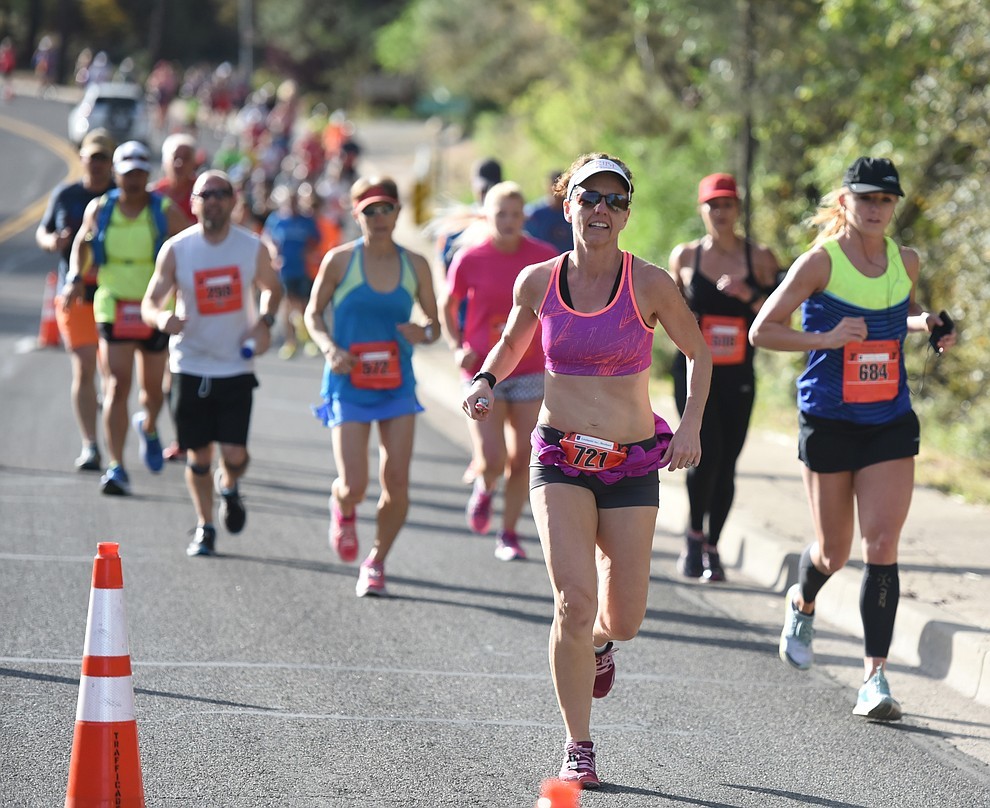
By the end of the longer races, runners will yearn for the “good ol’ days” when you could drown your pain with a glass of stiff whiskey in the neighboring saloons. Instead of whiskey, runners of the Half Marathon and Marathon will be treated to a post-race massage, delicious refreshments, and finish line Expo, which will be happening on the Mile High Middle School Football Field. The free food and massage will be welcomed after running up and down 3,000 feet or so in the thin mountain air.

The first and last five miles are run along open, paved roads, while the remainder of the race cuts through the Ponderosa pine-covered Prescott National Forest on dirt roads.
This event spans two generations of Prescottonians, and it’s a great way to introduce newcomers to the area to see the beauty of Prescott firsthand and not whizzing along in a car at 40 miles an hour.
To make this a full weekend of fun and fitness, this year’s marathon also includes a variety of events:
Friday, October 8th
3:00 pm-8:00 pm: Packet pick-up and Sports Expo at the YMCA
Get last-minute tips from people who know the course best, meet the event sponsors, and pick-up your swag bag and commemorative shirt.
Saturday, October 9th
5:00 am-7:30 am: Saturday morning packet pick-up at Matt’s Saloon
5:00 am: Full Marathon Early Start
6:00 am: Full Marathon Start
7:00 am: Half Marathon Start
7:10 am: .5 Mile Dash Start
7:30 am: 10K Start
8:00 am: 5K Start
Finish Line Expo (at Mile High Middle School Field)
This community event would not be possible if it were not for the generous sponsors. Recognition and special thanks go to Signature Sponsor: Dignity Health Yavapai Regional Medical Center. Community Sponsors: City of Prescott, Guild Mortgage. Family Sponsors: Rox Media Group, Prescott Periodontics & Implant Dentistry. Youth Sponsors: Maggin 99.1, Damon Olsen & Family, Stacey Haggart Realtor Better Homes & Garden/Bloomtree Realty, Better Homes and Garden/Bloomtree Realty, Laura Winniford, Papa John’s Pizza, ASIS Massage, Natural Healing Garden, Sparklight Advertising, Life Line Ambulance, Pepsi, and more.
For more information about running the race or volunteering to help at the water stations, registration, finish line, and course set-up and clean up, visit whiskeyrowmarathon.com or call Jaime DeJoseph, Race Director at 928-445-7221 or jaime.dejoseph@prescottymca.org.
(09/15/2021) ⚡AMPWhiskey Row Marathon
Come join runners from all over the country in this prestigious event – and show your friends and family that you are "Tough Enough"! Are You Tough Enough? As an Arizona running tradition, the Whiskey Row Marathon is among the toughest races in the country. Featuring rugged terrain, an altitude in excess of one mile above sea level and, on...
more...Burundi Francine Niyonsaba breaks 2,000m world record
In her last race of the season, Francine Niyonsaba broke the women’s world record in the 2,000m, running 5:21.56 at the Continental Tour meet in Zagreb, Croatia. Although this distance is uncommon at most track meets, her time is outstanding, as she averaged 2:40 per kilometer during the race, hitting the one-mile marker in 4:17.
This is icing on the cake for Niyonsaba, who made a transition from the 800m to distance running to compete in the Diamond League and Olympics. She remarkably finished fifth in the Olympic 10,000m and has won her last four races, including the Diamond League 5,000m title, where she took down race favorite Hellen Obiri of Kenya.

The previous outdoor 2,000m record was held by Irish runner Sonia O’Sullivan, who ran 5:25.36 in 1994.

The indoor record, which is 5:23.75 (set by Genzebe Dibaba in 2017), was faster. Today Niyonsaba’s 5:21.56 today surpasses both records.
Canadian record holder Matt Hughes competed in the 3,000m steeplechase in Zagreb and finished fifth, in 8:28.14. Hughes caps off a personal best season, finishing sixth in the steeplechase at the Tokyo Olympics in August.
(09/15/2021) ⚡AMPby Marley Dickinson
Oregon’s Cole Hocker goes pro, he has signed with Nike
University of Oregon sophomore no more, as Cole Hocker announced on his Instagram on Monday that he has signed a professional contract with Nike.
The former University of Oregon Duck follows in the footsteps of other former American Oregon Ducks Matt Centrowitz, Galen Rupp and Andrew Wheating to go professional before finishing university.

Hocker has had a phenomenal season, winning the U.S. Olympic Trials as a 20-year-old and placing sixth in the 1,500m at the Tokyo Olympics, where he ran a personal best time of 3:31.40.
He is also a three-time NCAA champion on the track in one season, winning the mile and 3,000m indoors, and the 1,500m outdoors.
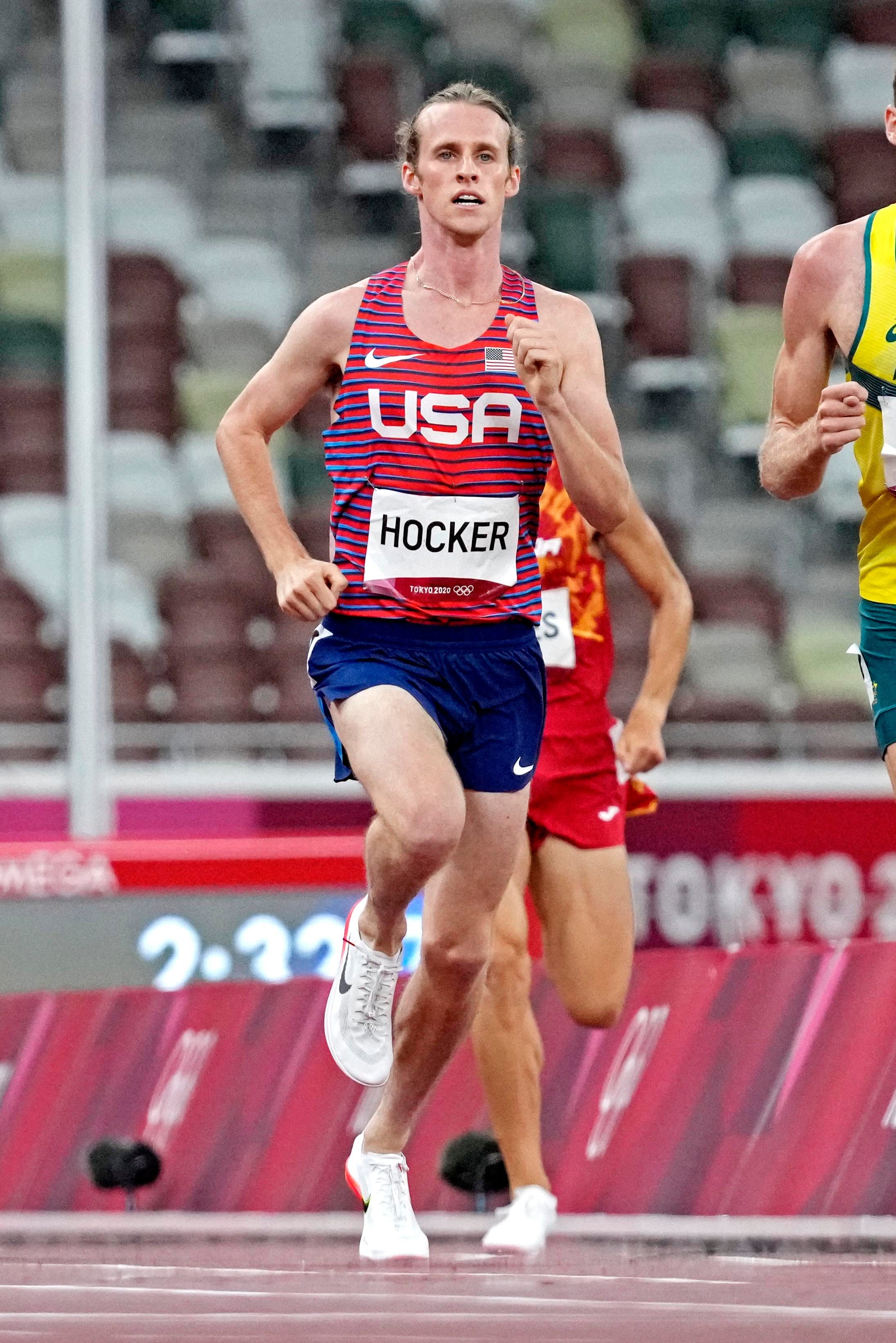
If Hocker chose to return to Oregon, he had three years of eligibility remaining for cross country and outdoor track. He was redshirted (held from competition) in 2019 due to the pandemic, saving him a season of eligibility.
It has not been announced which club Hocker will be training with or if he will continue training with the University of Oregon team.
(09/14/2021) ⚡AMPby Marley Dickinson
Ready, Set, Explore! Trail Running Preparation Tips
While trail running is all about enjoying the moment and having fun, taking a low-key approach to trail running doesn’t necessarily equal no preparation whatsoever.
Trail running is an easy way to explore and enjoy nature, suitable for just about everyone, but there are a few key things to keep in mind before heading out on such an adventure.

Everyone can give it a try – just make sure you’ve done the right trail running preparation.
1. PICK A TRAIL IN A FAMILIAR AREA

Especially if you’re new to trail running, stay in an area you’re familiar with or stick to well-marked trails and bring an offline map.
Also prepare for the possibility of getting lost by bringing along some extra water and snacks. Stick to well marked trails unless you have a solid knowledge of the area and make sure you have the gear and skill set needed for where you plan to go.
2. PREPARE FOR GETTING LOST
Whether you plan to run trails nearby or somewhere more remote you’ve never been before, make sure you know where you’re going and can find you’re way back.
Marked hiking trails are a safe way to start, but as it can be tricky to find your way around in new places. Also, the markings on trails are not always the best, so make sure you have some sort of a backup (like an offline map) in case you get lost. This is essential for trail running preparation.
3. BRING EXTRA WATER AND SNACKS
Before trail running, you don’t need any specific pre-run nutrition – fuel as you normally would. What you can do before you hit the trail is find out if there’s water in wells along the way or if the water in streams is drinkable.
If not, you’ll need to bring enough water to cover your run and then some. Same goes for nutrition – pack a lot of calories in small size, like gels or bars, and make sure you bring enough to carry you through the run and some extra calories for unexpected situations. There’s always the possibility of getting lost or the environment may slow you down and the run can get a lot longer than planned.
4. BE REALISTIC ABOUT YOUR FITNESS LEVEL
Before you head out into the wild, you need to be honest to yourself and realistically assess your experience and fitness level.
Exposed and extreme environments require great outdoor experience and specific fitness – of course, this depends on where you plan to run.
Going for a couple of hours run on a well-marked trail in a recreational area doesn’t pose quite as much challenge as climbing some serious mountains.
5. ADJUST THE LENGTH OF YOUR RUN
If you plan to run in a hilly area, it will be harder than running on flat road. But, the beauty of trail running is that it’s about enjoying the experience so keep in mind that you’re not in a hurry and just take it easy.
Soft trails and hills are easier on the joints than hammering the tarmac, but you’ll still see your heart rate climbing if you’re wearing an outdoor sports watch.
The trail running metrics I track are:
Time and elevation (distance isn’t applicable in the mountains).
For speed work, I will time an ascent and try to keep improving it.
6. ADJUST YOUR EXPECTED TRAINING TIME TO THE TERRAIN
Hilly running takes time and the terrain will slow you down. Even if you’re an experienced runner, you may still need to hike some of the longest and steepest hills.
Hilly terrain is great for strengthening your running in general. The soft surface of trail running is not as tough on the joints as road running, but your heart and lungs still get to work hard (if you want).
7. TAKE WEATHER CONDITIONS INTO ACCOUNT
You also need to plan for changing weather conditions, rain and/or wind, maybe bring a jacket. This all adds up and if you plan a longer trail run a running backpack is a great option.
Remember that the weather changes quick in some places, especially in the mountains.
8. TUNE INTO THE RIGHT MOOD
Mental prep for trail running means getting ready to relax and enjoy. Don’t obsess about running pace or distance, just focus on connecting with the nature.
Trail running is a chance to experience running wild and free in a more unstructured way than on the road.
It’s a playful form of running so the way to approach it could be: You have this amazing ability to run, so put it to some fun use!
LAST, BUT NOT LEAST, ENJOY!
Most importantly, just go out there and enjoy!
Trail running isn’t supposed to be complicated or hard – you can allow yourself to let go of the pressure to perform.
Instead of thinking about the training benefit, focus on enjoying the fresh air and being outdoors alone with your thoughts (or in great company).
(09/14/2021) ⚡AMPby Mimmi Kotka
A number of Tokyo Olympic medalists, including champions Faith Kipyegon and Peruth Chemutai, will be among the athletes in action at the Kip Keino Classic
Athletes from at least 28 countries are expected to compete when the final meeting of this year’s Continental Tour Gold series is held at the Kasarani Stadium, a World Athletics Continental Tour Gold meeting, in Nairobi, Kenya, on September 18, which recently hosted the World Athletics U20 Championships.
After winning her second Olympic 1500m title and then claiming the series crown at the Wanda Diamond League final in Zurich, Kenya’s Kipyegon will make her Kip Keino Classic debut. Uganda’s Olympic 3000m steeplechase champion Chemutai, meanwhile, returns to the event after her sixth-place finish in the inaugural edition of the meeting last year.
Both Olympic steeplechase champions will be competing, with Soufiane El Bakkali of Morocco having already been announced for the men’s race. He is set to be joined on the start line by Kenya's world U20 champion Amos Serem.

Like Kipyegon, USA’s Fred Kerley claimed a Diamond Trophy in Zurich, becoming the first athlete to ever win top series honours in both the 100m and 400m. Three years after his 400m success, Kerley won the 100m in 9.87 in Zurich and the Olympic 100m silver medallist is now set to race in Nairobi.
In men's 100m action will be the USA’s world leader Trayvon Bromell, Kenyan record-holder Ferdinand Omanyala and the USA’s Justin Gatlin, while Botswana’s Isaac Makwala has been announced for the 400m.

Namibia's Christine Mboma improved her world U20 record and African record to 21.78 to win the 200m Diamond Trophy in Zurich and the Olympic silver medallist returns to Nairobi, where the 18-year-old won the world U20 title last month.
The men’s hammer competition will also feature an Olympic champion, with Poland's Wojciech Nowicki among those who will be seeking more success when they compete in Kenya.
Ukraine’s world finalist Iryna Klymets will compete in the women’s event.
(09/14/2021) ⚡AMPby World Athletics
The Moscow Marathon has been postponed until 2022 amid ongoing COVID-19 restrictions in the Russian capital
The event had been scheduled to take place on September 26.
Organizers have confirmed that "due to the epidemiological situation, the city is forced not to hold mass events", resulting in the postponement of the event.

Under current restrictions in Moscow, there is a temporary ban on concerts, entertainment and sports events involving more than 500 people.
"Throughout the season, we fight for our every start and do everything possible to make the planned races take place," said race director Dmitry Tarasov, according to the Russian state news agency TASS.

"But we live in a situation where circumstances can change every day.
"These changes concern not only sports, but also our daily life.
"The team of the running community was preparing a large-scale sports event for you, but this year it will not take place.
"We are grateful to everyone who supports us and understands the events that are taking place at the moment.
"We are looking forward to holding all the events planned until the end of the year, and we will be happy to meet you at the start."
The event would have been the ninth staging of the Moscow Marathon, which was first held in 2013.
The race takes runners across the Crimean bridge, through Tverskaya Street and Teatralniy Proezd to the walls of the Kremlin.
Organisers say the route features major landmarks in the city, including the Moscow City skyscrapers, four of the seven Stalinist skyscrapers and the Bolshoi Theater.
Despite the COVID-19 pandemic, the event took place last year.
Organisers say the event will take place next year, but remain hopeful of holding upcoming events until the end of 2021.
This includes the fast dog and fox mountain cross-country events, which are scheduled for October 2 and 3, as well as the night run on October 9.
The Moscow Half Marathon is still scheduled to take place on October 24.
(09/14/2021) ⚡AMPby Michael Pavitt
Moscow Marathon
The Absolute Moscow Marathon is the biggest event of its kind in Russia that also attracts runners from all over the world. It is a citywide celebration of sports, camaraderie and healthy lifestyle. For the last 5 years the event has grown from a small local race to an important international running event. Over 20 000 participants from all over...
more...Nike has launched the most sustainable performance shoe
On Monday, Nike launched the Air Zoom Alphafly Next% Nature, which will provide runners with the same benefits as the original Alphafly, but it is more sustainable.
The Next% Nature is a part of Nike’s Move to Zero promise, which is the brands’ journey toward zero-carbon manufacturing.

Manufactured materials make up about 70 per cent of Nike’s total carbon footprint, and right now they are innovating and scaling to lower their use of carbon material. Nike plans on taking a circular approach to achieve its goal, by focusing on eliminating waste and creating products that are better for our planet and athletes.

The midsole of Next% Nature is constructed of 70 per cent of recycled foam, and the propulsive, stiff Flyplate is made of 50 per cent recycled carbon fibre. The upper is made of Flyknit, which features at least 45 per cent recycled polyester (through a process that reduces waste by 60 per cent compared to a traditional upper).
Nike athletes logged 600 kilometres of product testing simply to examine every aspect of this shoe and found that it will continue to make a big impact on their performance, while significantly reducing runners’ impact on the environment.
Each of the adjustments they made during the production of the Air Zoom Alphafly Next Nature move Nike closer to its goal of diverting 100 per cent of the waste it sends from landfills back into our extended supply chain, with at least 80 per cent recycled back into Nike products by 2025.
The Alphafly Next% Nature will be released with Nike’s full running line on Sept. 13.
(09/13/2021) ⚡AMPby Marley Dickinson
Kenyan Vibian Chepkirui: From sleeping on the floor in Doha to triumph in Vienna City Marathon
The 38th edition of the Vienna City Marathon delivered a great comeback for major international city marathon running during the pandemic. One of the stories of the day written in Austria’s capital was that of Vibian Chepkirui, who won her debut marathon in 2:24:29.
The 27 year-old Kenyan was clearly not among the hot favorites when she arrived in Vienna. She had never run a marathon before and in the past twelve months Vibian Chepkirui was only able to compete in a single international race due to the corona pandemic. It was a 10,000 m track event in Stockholm, where she finished eighth with a personal best of 31:09.42.

„It was a tough time because of Corona. I tried to qualify for the Olympics in Stockholm, but I did not manage. After that I decided to concentrate on a marathon,“ said Vibian Chepkirui, whose half marathon PB of 69:09 did not indicate either that something spectacular might be on the cards for her in Vienna.

Additionally she had to cope with a major obstacle on her way to Vienna. Flying via Doha from Nairobi Vibian Chepkirui and a group of Kenyan runners - among them Vienna’s men’s winner Leonard Langat as well - missed their connecting flight. The plane from Kenya had been delayed. „They were stuck in Doha and the airline did not care. So they had to sleep on the floor,“ explained Vibian Chepkirui’s coach Julien di Maria. „Obviously this is not ideal two days before a marathon.“
Despite all this Vibian Chepkirui ran a brilliant marathon debut and dominated a strong field. At 30 k she was well in the lead and her split time of 1:40:37 pointed towards a 2:21:30 finish, well inside the course record of 2:22:12. „I was surprised to win the race, but I started to believe by the half way mark. Of course this is the biggest win in my career,“ said Vibian Chepkirui, whose husband Wesley Kangogo was her pacemaker. „The heat was a problem though. In cooler conditions I could have run at least two minutes faster. Additionally I got problems with a calf muscle with around four kilometres to go.“ She finally finished in 2:24:29.
It was only in 2020 when Vibian Chepkirui ran her first international races. She clocked her half marathon PB in Prague, the home of her management group Ikaika. In Kenya she trains in Iten and one of her training partners is the three-time winner of the Vienna City Marathon and course record holder Nancy Kiprop. Vienna’s record winner could not return to the race due to a back injury. „Nancy gave me advice on Vienna. I was trying to break her course record,“ said Vibian Chepkirui, hoping that both of them will be on the start line at the next Vienna City Marathon on 24 April 2022. One thing is sure: They will avoid flying to Vienna via Doha.
(09/13/2021) ⚡AMPVienna City Marathon
More than 41,000 runners from over 110 nations take part in the Vienna City Marathon, cheered on by hundreds of thousands of spectators. From the start at UN City to the magnificent finish on the Heldenplatz, the excitement will never miss a beat. In recent years the Vienna City Marathon has succeeded in creating a unique position as a marathon...
more...Nell Rojas Outkicks Jenny Simpson at 2021 Credit Union Cherry Blossom Ten Mile
On a warm and crystal clear late summer morning in our Nation’s Capital, American Nell Rojas won a thrilling race among the top women runners at this year’s Credit Union Cherry Blossom Ten Mile (CUCB), while Kenyan Edwin Kimutai left the rest of the men’s field in his footsteps 25 minutes into the race to handily win the men’s race.
With his 33-second victory, Kimutai honored the recent passing of his wife, while Rojas surprised all the pundits when she sprinted away from Jenny Simpson with less than one half mile left in the race to win the 2021 USATF Women’s 10 Mile Championship Presented by Toyota.

“I had zero expectations on place or time,” said Rojas in a post-race interview. “At seven or eight miles, I could tell Jenny and the others were working hard, and I was like ‘I’m not working hard.’ At that point I was OK letting myself believe I could win.”

Rojas added: “With 800 to go, I knew Jenny was right there, I was really scared. I kicked around 600, and made that decision because I couldn’t let Jenny have the last 50-meter sprint. At that point, I was like ‘I’m fine with second, but just let me do this.’”
While she may have been a novice on the roads at anything longer than one mile, Simpson displayed confidence and savvy from the start. In fact, USATF.tv webcast commentator Carrie Tollefson remarked that Jenny cut the tightest tangent in the women’s lead pack of 14, going into a roundabout on the Virginia end of Memorial Bridge at a little more than 1 ½ miles into the race. Throughout the race, Simpson could be seen moving around the dwindling lead pack — side to side, forward and back — while eventual third place American Annie Frisbie oftentimes found herself in the lead, pushing the pace, or sharing pacesetting duties with Rojas and overall third place finisher Antonina Kwambai.
“When Nell pushed it up the last hill, once she got separation, I just couldn’t respond,” said Simpson. “She was really strong.”
Simpson added: “Sometimes the best thing that can happen with a new experience is to get second. I’m finishing hungry. Overall, the entire experience was 10 times better than I expected.”
In the men’s race, American Frank Lara —who would eventually finish fifth overall as fourth American — charged out hard from the start, and the men’s field quickly strung out. By 5K four men had broken away: Kimutai, Lara, and his fellow Americans Abbabiya Simbassa and Augustus Maiyo. By 10K, Kimutai had established a 17-second lead over the Maiyo and Simbassa, with Lara a few seconds adrift of his compatriots. As Kimutai’s lead grew, Maiyo and Simbassa continued to run side-by-side through 15K. Two minutes later, the 28 year-old Simbassa began to pull away from 38-year-old Maiyo, building himself a five second margin by the finish.
When asked if he felt guilty taking the 2021 USATF Men’s 10 Mile Championships title from the 38-year-old Maiyo, Simbassa replied: “I respect those guys, they know more than I do. I’m just out to do my best.”
Well, today, Simbassa’s best earned him the title of America’s best after so many recent second-place finishes in USATF Championship races, and elicited this comment: “It feels good. I’ve been hunting for a long time, and it finally happened today.”
Here’s a compilation of place, times and money earned by the top-10 American women and men as well as open prize money winners, and RRCA Roads Scholar-RunPro Development Award winners.
(09/13/2021) ⚡AMPby Running USA
Cherry Blossom Ten Mile Run
The Credit Union Cherry Blossom is known as "The Runner's Rite of Spring" in the Nation's Capital. The staging area for the event is on the Washington Monument Grounds, and the course passes in sight of all of the major Washington, DC Memorials. The event serves as a fundraiser for the Children's Miracle Network Hospitals, a consortium of 170 premier...
more...Scottish runners Jemma Reekie and Jake Wightman win 5th Avenue Mile
Athletes took to the streets of New York City on Sunday morning for the 5th Avenue Mile, one of the final races of the summer racing season.
It was the two Scottish runners who took the win, with Jemma Reekie taking the women’s race in 4:21.6 and Jake Wightman winning the men’s race in 3:49.6.

The women’s race

Alicia Monson took the lead early in the women’s race, gapping the field by several metres in the first half. The pack eventually reeled her in, and with one minute to go, Reekie, Hiltz and Van Buskirk began making a push for the finish.
With only a few metres left in the race, Reekie took over the lead, and after finishing 4th in Tokyo and 4th in the Diamond League final, she finally got her win. Hiltz finished in second place in 4:23.0 and Shannon Osika came third in 4:23.3. After making a strong push for a podium spot, Van Buskirk crossed the line in fourth in 4:23.9. Monson ended up in sixth in 4:25.4. Canada’s Julie-Anne Staehli finished in 11th in 4:29.1.
The men’s race
Wightman was the winner in a hotly-contested men’s race, where there was plenty of jostling for the lead over the 20-block race. Australia’s Oliver Hoare led in the early stages, but the rest of the pack were right on his heels. At about the 800m mark, Matthew Centrowitz made an aggressive move and created a sizeable gap on the field, but was unable to hold onto the lead.
Wightman cranked the pace up in the final meters of the race to take the win, followed by Hoare and Jake Heyward, also from the U.K., both in 3:50.4. Canada’s Charles Philibert-Thiboutot finished ninth in 3:53.2, and Centrowitz ended up in 14th in 3:56.4.
(09/13/2021) ⚡AMPby Brittany Hambleton
New Balance 5th Avenue Mile
The New Balance 5th Avenue Mile opens a beautiful 20-block stretch of 5th Avenue to runners of all ages and abilities who want to run their best mile in New York City. Special races include a youth mile, the George Sheehan Memorial Mile for runners age 60 and over, the NYRR Road Mile Championships, and Olympic-caliber professional men's and women's...
more...Tirop and Teferi smash world records in Herzogenaurach
Kenya’s Agnes Tirop took 28 seconds off the long-standing women-only world record for 10km*, while Ethiopia’s Senbere Teferi set an outright world 5km record of 14:29* at the adizero Road To Records event in Herzogenaurach on Sunday (12).
Tirop, the world 10,000m bronze medallist, put in a decisive surge with little more than two kilometres to go in the 10km, breaking away from fellow Kenyan Sheila Chepkirui before eventually winning in 30:01.

Teferi, the 2015 world 5000m silver medallist, ran away from her opponents after the first kilometre with an incredible solo effort, winning the 5km in 14:29.
Tirop and Chepkirui were part of a five-woman lead pack during the early stages of the 10km and passed through 4km in 12:07. A couple of minutes later, Tirop and Chepkirui had broken away from the rest of their opponents, reaching the half-way point in 15:00 after coving the fifth kilometre in a swift 2:54.

Chepkirui then moved in front of her compatriot and tried to force the pace but was unsuccessful in making a break. The duo continued to run side by side for the best part of three kilometres, but Tirop started her long run for home with about six minutes to go.
Tirop, who won the senior world cross-country title as a teenager back in 2015, passed through 9km in 27:07 with a comfortable lead and was still comfortably inside world record pace. She didn’t ease back for the final kilometre, though, and covered it in another 2:54 to reach the finish line in 30:01.
Chepkirui finished second in 30:17, also inside the previous mark of 30:29 set by Morocco’s Asmae Leghzaoui back in 2002. Nancy Jelagat was third in 30:50.
“I’m so happy to have broken the world record,” said Tirop. “I felt the pace was good and Sheila assisted me a lot. The course was very good too.”
Teferi, contesting the final race of the day, ensured the event ended on a high as she smashed the world 5km record with 14:29, winning by 25 seconds from Ethiopian teenager Melknat Wudu.
Six weeks after her sixth-place finish over 5000m at the Olympic Games, Teferi ran with the pack for the first kilometre, covered just inside three minutes. Then, sensing that the pace wasn’t quite fast enough to challenge the world record, set off on her own and covered the second kilometre in 2:49.
By 3km, which she reached in about 8:43, Teferi had an eight-second lead over the chase pack. She continued to forge ahead, passing 4km in 12:07 and then ended with a 2:52 final kilometre to cross the finish line in 14:29.
Not only did it break the women-only world record of 14:44 set by Beatrice Chepkoech and the 14:43 outright world record set by Sifan Hassan in a mixed race, she also bettered the fastest 5km clocking in history of 14:32, set by Joyciline Jepkosgei before the distance became an official world record event.
“I'm so happy,” said Teferi. “After the Olympics, I knew I was ready to go after this world record. I'm so happy.”
Wudu, a double medallist at the World U20 Championships, took second place in 14:54, just ahead of compatriot Nigisti Haftu.
In the day’s other races, world record-holder Rhonex Kipruto won the men’s 10km in 26:43, the fourth-fastest time in history, while recently crowned world U20 champion Tadese Worku was second in 26:56, an Ethiopian U20 record.
Abel Kipchumba was a convincing winner of the men’s half marathon in 58:48 with fellow Kenyan Alexander Mutiso Munyao taking second in 59:20, and Brenda Jepleting added to the Kenyan success with a dominant 1:06:52 victory in the women’s race.
Jacob Krop won the men's 5km in 13:06, breaking away from two-time world 5000m champion Muktar Edris in the second half to finish three seconds ahead of the Ethiopian.
Leading results
WOMEN
5km
1 Senbere Teferi (ETH) 14:29
2 Melknat Wudu (ETH) 14:54
3 Nigisti Haftu (ETH) 14:54
4 Agnes Jebet Ngetich (KEN) 15:02
5 Dawit Seyaum (ETH) 15:10
10km
1 Agnes Tirop (KEN) 30:01
2 Sheila Chepkirui (KEN) 30:17
3 Nancy Jelagat (KEN) 30:50
4 Betty Chepkemoi (KEN) 31:09
5 Dorcas Kimeli (KEN) 31:22
Half marathon
1 Brenda Jepleting (KEN) 1:06:52
2 Besu Sado (ETH) 1:08:15
3 Brillian Jepkorir (KEN) 1:08:28
4 Tgise Haileselase (ETH) 1:08:30
5 Irene Jepchumba (KEN) 1:09:02
MEN
5km
1 Jacob Krop (KEN) 13:06
2 Muktar Edris (ETH) 13:09
3 Hosea Kiplangat (UGA) 13:13
4 Geoffrey Kimutai (KEN) 13:22
5 Daniel Kinyanjui (KEN) 13:27
10km
1 Rhonex Kipruto (KEN) 26:43
2 Tadese Worku (ETH) 26:56
3 Kennedy Kimutai (KEN) 27:09
4 Nicholas Kimeli (KEN) 27:22
5 Bayelign Teshager (ETH) 27:24
Half marathon
1 Abel Kipchumba (KEN) 58:48
2 Alexander Mutiso Munyao (KEN) 59:20
3 Amos Kurgat Kibiwot (KEN) 59:34
4 Raymond Magut (KEN) 1:00:00
5 Phenus Kipleting (KEN) 1:00:08
(09/12/2021) ⚡AMPby World Athletics
Great North Run 2021: Thousands take part as event returns
Thousands of people have taken to the streets of Tyneside for the 40th staging of the Great North Run.
Last year's event was cancelled due to the coronavirus pandemic and organisers changed the half-marathon's route this year to aid social distancing.

Participants started and finished in Newcastle rather than making their way to South Shields.
Staggered timeslots replaced the traditional mass start for the world's biggest half-marathon.
About 57,000 people were registered to take part - raising millions of pounds for charity, The Great North Run Company said.
The new route saw runners cross the Tyne Bridge twice and make their way through Newcastle city centre before finishing on the Great North Road.
BBC commentator and former winner Paul Radcliffe said the event's return had been "emotional".
"Looking down the road and seeing all the runners, a lot of hard work has gone into making this happen.
"It was so needed just to see this step back towards people getting together, having fun and connecting."
Four NHS workers were invited to start the race in recognition of the health service's efforts during the pandemic.
Speaking afterwards, occupational health worker Deborah Southworth said it had been "absolutely amazing" and a "privilege".
Jade Trewick, a nurse who also helped get the event under way, said it came after a "difficult but really rewarding" 18 months treating coronavirus patients.
Sir Brendan Foster, who helped launch the event in 1981, said it had been "a tough task" organising this year's run but it had turned into an "incredible" success.
"It's been really difficult. For the last 18 months, the whole nation and world have had awful times.
"The pandemic has separated people, but the Great North Run is all about being together.
"When the vaccine came around we started thinking maybe we can [stage it this year] so we made all kinds of contingency plans.
"Here we are. It's different. It's a one-off."
The elite women's race was won by Kenyan Helen Obiri in a time of 1:07:42, ahead of Great Britain's Eilish McColgan, who was six seconds behind.
Scotland's McColgan was aiming to repeat her mum Liz's three victories at the event in the 1990s. Great Britain's Charlotte Purdue finished in third.
Marc Scott, also of Great Britain, was victorious in the men's elite race, clocking a time of 1:01:22 to finish nine seconds ahead of Kenya's Ed Cheserek.
Galen Rupp of the United States was a further 20 seconds behind in third place.
Sean Frame won the men's wheelchair race in 49:52 with fellow Briton Shelly Woods first across the finishing line in the women's event in 57:01.
The elite wheelchair and women's races began at about 09:20 BST, with the elite men and first of the staggered starts at 09:45.
(09/12/2021) ⚡AMPGreat North Run
Great North Run founder Brendan Foster believes Britain is ready to welcome the world with open arms after the launch of the event's most ambitious plan to date. The Great World Run campaign seeks to recruit one runner from every country in the United Nations – 193 in total – to take part in the iconic half marathon in...
more...Vienna City Marathon winner disqualified for wearing shoes that are one centimetre too thick
Derara Hurisa is disqualified after winning the marathon by three seconds for wearing shoes not sanctioned by the event
Vienna is where Eliud Kipchoge ran his sub-two hour marathon

The winner of the Vienna City Marathon has been disqualified for wearing shoes that do not fit the race rules. Derara Hurisa ran the race in two hours, nine minutes and 22 seconds, but was stripped of his title when it was discovered the soles of his shoes is 5cm thick. It is one centimetre thicker than allowed in the race.
“Winner disqualified: The initial winner of the Vienna City Marathon had to be disqualified for wearing shoes which are not compliant with the rules. Ethiopia’s Derara Hurisa crossed the finish line first after 2.09:22,” the race Twitter account said.
“The sole of road running shoes has to be no thicker than four centimetres. Hurisa was running with a model that has a sole thickness of five centimetres.”
“Kenya’s Leonard Langat is now the winner of the Vienna City Marathon with a time of 2.09:25,” the account posted.
Hurisa, 24, made a name for himself last year by setting the Mumbai Marathon record, in 2.08:08.
Running shoes have been the centre of debate in the athletics world. Nike were the first to add a carbon plate into their sole, which in theory helped spring athletes forward. Fans and commentators alike wondered if getting an additional boost from shoes is within the ethos of running, where it is a test of fitness and not technology.
Since Nike’s invention, other brands have followed suit. Many records, including Eliud Kipchoge’s sub-two hour marathon, which was run in Vienna, have been set in carbon plated shoes.
The so called “technology doping” prompted the Olympics to set out guidelines for shoes allowed. In January 2020, the Olympics announced shoes with more than one carbon plate were banned, and so were soles thicker than 4cm.
live stream of event
https://live.s3.ap-south-1.amazonaws.com/vienna-city-marathon.html
(09/12/2021) ⚡AMPVienna City Marathon
More than 41,000 runners from over 110 nations take part in the Vienna City Marathon, cheered on by hundreds of thousands of spectators. From the start at UN City to the magnificent finish on the Heldenplatz, the excitement will never miss a beat. In recent years the Vienna City Marathon has succeeded in creating a unique position as a marathon...
more...Hamburg Marathon 2021 recap
After a two and a half year break, the Hamburg-Marahton could finally take place again on September 12, 2021.
Today at 9:00 am, the starting signal for the 35th edition of the Haspa Marathon Hamburg was given. Over 10,000 runners had registered for the event this year - many of them also over the half marathon distance and the relay marathon.
The distance
The fast route led past many sights and beautiful spots in the city of Hamburg. In addition to the marathon, there was also a relay marathon. The half marathon, which was held for the first time in 2018, was also part of the event.
In the footsteps of Eliud Kipchoge
In Hamburg, by the way, none other than Eliud Kipchoge holds the course record. In 2013 he ran 2:05:30 hours as a rather little-known runner. He is now a world record holder and the first marathon runner to cover the marathon distance in under two hours. Two years ago, the Ethiopians Tadu Abate (2:08:25 hours) and Dibabe Kuma (2:24:41 hours) won the race.
This year, only people vaccinated against Covid-19 were allowed to take part in the Hamburg Marathon. These measures caused horror among many interested parties in the run-up to the event.
The winners in 2021
A total of 5,157 runners competed this year, 2,417 of them over the marathon distance, 1,668 over the half marathon distance and 1,072 relay runners. There were only a few international top runners due to the requirements. A total of five runners and two runners with ambitions to win had come from Ethiopia and Uganda.
The fastest over the marathon distance was Martin Musau. The athlete from Uganda won his marathon debut with a time of 2:10:14 hours ahead of Masresha Bisetegn and Belay Bezabh (both Ethiopia). Benjamin Franke was the best German with 2:32:21 hours in 7th place. In the women’s category, the Ethiopian Cadise Demissie achieved a superior victory with 2:26:19 hours. She was more than 17 minutes ahead of the Swede Camilla Elofsson. 4th place went to the best German Angela Moesch (2:58:15 hours).
Carsten Hoenig (1:14:25 hours) and Stephanie Strate (1:16:47 hours) won the half marathon.
(09/12/2021) ⚡AMPHaspa Marathon Hamburg
The HASPA MARATHON HAMBURG is Germany’s biggest spring marathon and since 1986 the first one to paint the blue line on the roads. Hamburcourse record is fast (2:05:30), the metropolitan city (1.8 million residents) lets the euphoric atmosphere spill over and carry you to the finish. Make this experience first hand and follow the Blue Line....
more...Kenyan Faith Kipyegon wins 1500m showdown for Diamond League success in Zurich
From the moment that Olympic 5000m and 10,000m champion Sifan Hassan declared that she would race fellow Tokyo gold medallist Faith Kipyegon in the 1500m at the Wanda Diamond League final in Zurich, the race had the makings of an all-time classic.
And so it was.
Their first meeting this year was in Florence in June, where world champion Hassan had Kipyegon’s measure. But Kipyegon took back the initiative in Monaco in July and claimed a dominant victory at the Tokyo Olympics in August, as Hassan fought through the fatigue of her extraordinarily ambitious race schedule to secure the bronze medal.

But with two such exceptional talents – Hassan led their head-to-head record 9-8 before tonight’s race – each battle must be fought anew.
From the first lap, each only had eyes on the other. The pacemaker was forgotten as they both waited and watched for the inevitable showdown.
Kipyegon moved into the lead just after the bell, with Hassan shadowing her every step. The Kenyan surged down the back straight and then stepped up the pace around the final bend, but Hassan would not concede.

The Dutchwoman moved out of the Kenyan’s slipstream as they entered the straight and drew level. For a moment with 50m to go it appeared that Kipyegon might buckle under the pressure but her strength held and it was Hassan who faded slightly in the final metres.
Kipyegon stopped the clock in 3:58.33, just a metre ahead of Hassan in 3:58.55. The USA's Josette Norris came through for third in 4:00.41.
“I knew it would be a tactical race today," Kipyegon said. “I was confident that in the last lap I could do better and it worked.”
Hassan declared Kipyegon was “really one of the greatest athletes” but vowed to keep challenging her.
“Today was my last race (of the season) and I wanted to give everything, and I did that and I am happy about it," Hassan said before warning: “Next year, I will train my speed and I will be amazing.”
Close finishes were the order of the evening as the men’s 1500m followed an eerily similar script.
This time the protagonists were the world champion Timothy Cheruiyot and the Olympic champion Jakob Ingebrigtsen.
Until the Tokyo Olympic Games, the young Norwegian had lost 12 straight races to Cheruiyot but he finally turned the tables on the biggest stage of them all. However, Cheruiyot gained a measure of revenge in Zurich.
Cheruiyot employed the same tactics as his compatriot Kipyegon, forcing Ingebrigtsen to chase him from the bell. He tightened the screws gradually until he entered the home straight and lit out for home.
Like Hassan, Ingebrigtsen had the strength to challenge in the straight but not to draw ahead. Cheruiyot hung tough and took the glory (and his fourth Diamond League trophy) by 0.08 – 3:31.37 to 3:31.45. Australia’s Stewart McSweyn (3:32.14) completed the podium, one place ahead of his compatriot Ollie Hoare (3:32.66).
(09/11/2021) ⚡AMPby World Athletics
Athletics Canada mandates full vaccination at all events
Athletics Canada announced today that all athletes, coaches, and fans over the age of 12 who are planning to attend Athletics Canada events must be fully vaccinated against the COVID-19 virus. This new mandate will also apply to volunteers, media and event staff on-site for Athletics Canada events.
The new vaccination policy will take effect immediately, and will apply to events and in-person meets.
This mandate will apply to anyone who was registered for the 2021 Canadian 10K Championships as part of the Scotiabank Toronto Waterfront Marathon on Oct. 17, as well as the 2021 Canadian Cross Country Championships in Ottawa on Nov. 27.

“Since we began organizing events in 1986, we promised our community an accurate and safe course,” said Alan Brookes, Race Director, Canada Running Series, in the Athletics Canada press release. “This has been a core value for more than four decades. As we look forward to a return to in-person racing this fall, the health and safety of our participants, staff, and volunteers remain of utmost importance.” This mandate will apply to anyone who was registered for the 2021 Canadian 10K Championships as part of the Scotiabank Toronto Waterfront Marathon on Oct. 17, as well as the 2021 Canadian Cross Country Championships in Ottawa on Nov. 27.
“Since we began organizing events in 1986, we promised our community an accurate and safe course,” said Alan Brookes, Race Director, Canada Running Series, in the Athletics Canada press release. “This has been a core value for more than four decades. As we look forward to a return to in-person racing this fall, the health and safety of our participants, staff, and volunteers remain of utmost importance.”

“We share Athletics Canada’s commitment to require full vaccination for participants, staff and volunteers as the best way forward to restart in-person road racing. We’re excited to get back to what we love and see thousands of people cross that finish line on Oct. 17,” says Brookes.
This Athletics Canada mandate does not apply at provincial athletics sanctioned events yet. Each provincial athletics institution has the right to make its own jurisdiction regarding in-person events and activities.
Further details will be shared on the implementation of the policy, per Athletics Canada.
(09/11/2021) ⚡AMPby Marley Dickinson
The Truth About Alcohol And Endurance Sports
Just like Sunday brunch with friends and happy hour with coworkers, the post-run drink has become a uniting ritual for runners. An Instagram search for hashtags #willrunforbeer and #runforwine reveals thousands of photos of smiling, sweaty runners-many of them women-downing frosty pints of beer or clutching super-sized glasses of wine. Promotion for everything from casual neighborhood brewery runs and Rose 5Ks to large-scale destination races like the Napa-to-Sonoma Wine Country Half Marathon only amplify the message: alcohol is a justifiable reward for hard-run miles, and alcohol and exercise go hand-in-hand for many.
Many of the races, like the Zooma series and Disney Princess Half Marathon Weekend, explicitly bill themselves as girls' weekend getaways, complete with luxury accommodations, elaborate swag bags, and post-event parties with free flowing wine, beer, and other libations. In addition, much of the running merchandise targeted to women is branded with catchy, alcohol-related slogans like "Run All the Miles, Drink all the Wine" and "Will Run for Beer." Not to mention all the other ways alcohol and exercise are becoming entwined: think beer yoga and wine hikes; FitVine's collab with Barry's Bootcamp; Sunday sip and spins with mimosa bars post-spin class.


But just as women are closing the gender gap in road race participation, comprising just over 60% of all race finishers in 2019, recent studies also show that women are closing the gender gap when it comes to alcohol consumption-and not in a good way. According to a 2019 study, women in their late teens and early 20s now report drinking and getting drunk at higher rates than their male peers, and pandemic-related anxiety, depression and stress have only exacerbated unhealthy drinking patterns for many.
And while for most people, a celebratory drink with friends after a group run or at the finish line is no more harmful than a sugar doughnut or indulgent brunch, how did alcohol-a mood-altering drug-become such an integral part of a sport that promotes health and wellness?
Racing as an experience
Just as running's second wave in the late 1990s and early 2000s dramatically increased women's participation in the sport, it also increased demand for destination and experiential races. From the launch of the pioneering Rock 'n' Roll series in the late 1990s to the women-centric Zooma and Disney Princess events that followed in the early 2000s, races became bigger and bolder, with on-course live music, branded merchandise, elaborate medals, and themed post-race parties serving everything from hot chocolate and cheese to bacon, pancakes, and of course, alcohol.
These unique race experiences appeal to seasoned runners like Cara Turano of Portland.
"I used to be really happy with a cool medal or t-shirt, but you can only have so many medals and shirts," she explains. "Perks like finishing in a beer garden or bringing home wine glasses is a much more memorable experience."
Turano ran the Bordeaux Marathon a few years ago to celebrate her 35th birthday and honor her mom's passing.
"The race included 24 wine stops over 26.2 miles, and it was the most amazing, festive, and supportive experience with 10,000 runners from around the world, all in costume, running pretty slowly through rolling vineyards in the gorgeous South of France," she recalls, adding that destination races are "a great way to combine a passion for running with one for travel."
Similarly, Nina Santus, a board member of Athens Road Runners in Georgia, frequently travels to races, choosing an experience based on personal interests or connections to a specific cause.
"I ran the Marine Corps Marathon because my brother was in the Marine Corps," she explains. "I'm also a big wine person, so if I can find a race where I can run and see the vineyards and enjoy food and drink afterward, I will do it." Santus plans to run the Marathon du Medoc next fall and has run alcohol-centric races like the Dirty Spokes Chateau Elan Muscadine Run and the Ales for Trails Terrapin Beer 5K, closer to home.
"I don't participate in beer miles where you have to chug things or get sick or be drunk, but I do support the idea of food and beverage to help bring more folks out for camaraderie and the sport of running," she continues.
For race director Tes Sobomehin Marshall, founder of Run Social Atlanta, that camaraderie is baked into her company's mission. With runs and races that launch or end near local businesses ranging from breweries and restaurants to physical therapy studios, athletic-wear stores, and entertainment-focused venues like Top Golf, the company markets itself to "both the competitive runner and the 'I just want a shirt and a beer' person," explains Marshall.
When she first started organizing races in 2012, Marshall realized "people were coming and spending 30 minutes running the race, and then another two to three hours socializing after." She finds her laid-back, social, and neighborhood-centric approach to racing "more accessible to people who wouldn't otherwise run and more fun for people who've been running for a while."
Atlantan Audrey Ward, who started running earlier this year, appreciates low-key, social races.
"As a newer runner, just getting my shoes on and out the door can be intimidating," she says. "Having a good time with people who just like to run (and maybe to cheers with afterward) takes the pressure off what can be a super-competitive sport."
According to Santus, the 300-400 member Athens Road Runners keeps its events approachable to make runners like Ward feel included.
In addition to Saturday morning training runs and Wednesday morning track workouts, the group regularly runs to local breweries or restaurants with events branded as "Taco Tuesday" and also gathers informally for popsicles, beer, or fizzy waters.
The social activities are designed to make "everyone feel welcome, no matter their pace," and to "break down the illusion that all runners are snobby and fast," she explains.
Terri Huggins, a New Jersey-based writer and fitness instructor, understands that alcohol can be a powerful incentive to attract newcomers who may be intimidated by an unfamiliar sport or activity.
Whether a gym class or a road race, "including alcohol really helps with engagement, and one could argue that someone drinking after an event is far better than someone not working out at all," she says.
But as road races ramp up again at the same time women report drinking more alcohol to cope with pandemic-related stressors like balancing work with child-rearing, caring for sick relatives, and a massive exodus from the workforce, should organizers moderate drink-related messaging?
Tracy Green, a sub three-hour marathoner from Louisville who took an extended break from drinking alcohol last year, says yes.
"We know thinking of exercise as punishment or as a response to negative body image can be mentally unhealthy, and we know that alcohol can make issues like depression and anxiety worse-so coupling those two things together at a race is probably not the best thing we could be doing for mental health," she explains.
And while Huggins imbibes on occasion, she says that "in a time when so many people are unaware of what it means to drink in moderation, people in the fitness industry have an obligation to educate their participants on how alcohol can affect recovery, sleep, and metabolism."
The experts agree.
According to Dr. George F. Koob, director of the National Institute on Alcohol Abuse and Alcoholism, for "people who are exhausted from running, mildly dehydrated, and have empty stomachs, one serving of alcohol could be much riskier than it seems"-especially if driving home after an event.
Even if booze is an integral part of your racing group or event, Koob suggests being mindful that many people "turn to exercise as part of recovery from an alcohol use disorder," and that "these folks might be uncomfortable or left out if other runners celebrate the finish of a race with alcohol."
Keeping alcohol in a separate area of an expo or finish line celebration is one way to offer libations without explicitly excluding those who don't drink, says Back on My Feet CEO Katy Sherratt. And since alcohol is hyper-present at road races, it can provide a "real-world scenario" for those with addictions to maintain sobriety, as long as they have a strong support network.
And even those who do drink alcohol on occasion may opt to skip the post-race beer in favor of healthier beverages, like recovery shakes and smoothies, kombucha, and sparkling water.
"Give me a fancy, fizzy mineral water after a hot race instead of a beer any day," says Green.
Professional runner and Olympian Molly Seidel enjoys non-alcoholic beers from Connecticut-based Athletic Brewing Company after a hard training session.
"I love that it's hoppy and actually tastes like an IPA, plus I get some good carbs out of it without alcohol impacting my training," she says.
The rapid growth in the non-alcoholic beer and spirits market, combined with growing interest in booze-free social movements like Dry January and Sober Curious, could be a unique opportunity for the racing industry to temper its alcohol-centric messaging.
And yes, a beer at the finish line is great, but as Dr. Koob puts it, "shouldn't completing the race be reward enough?"
(09/11/2021) ⚡AMPby Trail Runner Magazine
7 rules for running longer
So you’ve been running for a while now and you’ve managed to stick to a fairly consistent routine. Maybe you’re going out for 30 minutes a few times per week, or perhaps you’ve worked your way up so that you’re able to comfortably run 5K without stopping. That’s great! If you’re considering challenging yourself with some longer runs, keep these guidelines in mind as you’re increasing your distance.
Slow down

As you’ve been running more consistently, you’ve likely been able to increase your pace. When you start trying to go longer, however, you may want to back off the speed, at least initially. The first goal when increasing your distance should be to make it through the whole thing, and getting faster can come later.
Add length gradually
If you’ve been running 5K consistently, you don’t have to go out and try to run 10K right off the bat. Most experts suggest increasing your distance by no more than 10 per cent per week, which from 5K is only about 50m. You may want to increase more than that, which is fine, but be careful not to do too much too soon, which could increase your risk for injuries.
Do it once per week
When increasing your distance, keep in mind you don’t have to run longer every time you go out. If, for example, you’re running 5K three times per week, you can continue doing that twice per week, and choose one of your runs to try going a little longer. That will also help you avoid the too-much-too-soon issue many newer runners tend to fall victim to.
Take walk breaks
Even if you normally don’t take walk breaks during your shorter runs, there’s no shame in using walk breaks as you’re increasing your distance. Sometimes, a quick break is all you need to regroup mentally and tackle those extra few kilometres.
Fuel properly
As you start to increase the length of your runs, fuelling properly before and after becomes increasingly important. Your stomach grumbling part-way through your run is never fun, and eating something healthy afterward will help you refuel so that you’re ready to go for your next run.
Take recovery seriously
As you increase the amount you’re running, all the little things that help you run better and prevent injury become more and more important. That includes getting enough sleep, eating well, drinking enough water, stretching and giving your body what it needs to recover so you can continue to run well.
(09/11/2021) ⚡AMPby Running Magazine


